September 19, 2021
Martha O'Kennon
Remember last week, when I said: Aaaaaaaaaaaaahhhhhh. A week of coolth. Oh and how we have needed that. Open windows. No air conditioning. ?
Well, that was Last Week. This week started off nice, but then the heat and humidity crept back somewhat. I broke down and used the AC a LITTLE BIT. But don't worry, we are into Fall weather. And in two days that will be appropriate.
The Asters are blooming like crazy. They are falling toward the sidewalk and the driveway! It's hard to keep from disturbing one of the many bees that love them! The August Orange Day Lilies made their month-and-a-half record. What a winner in so many ways! And now the Cultivated Phlox must be close to the middle of its reign.
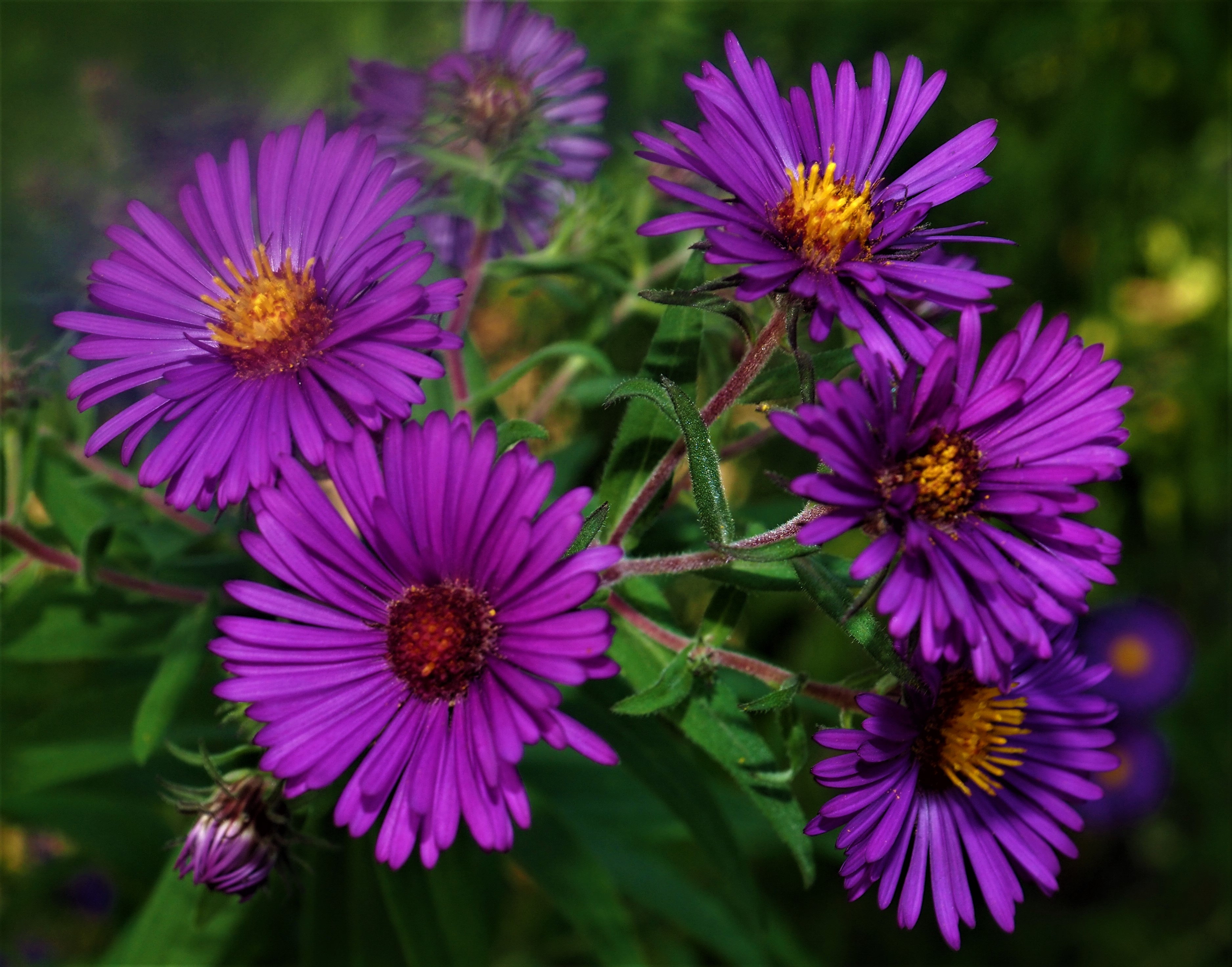
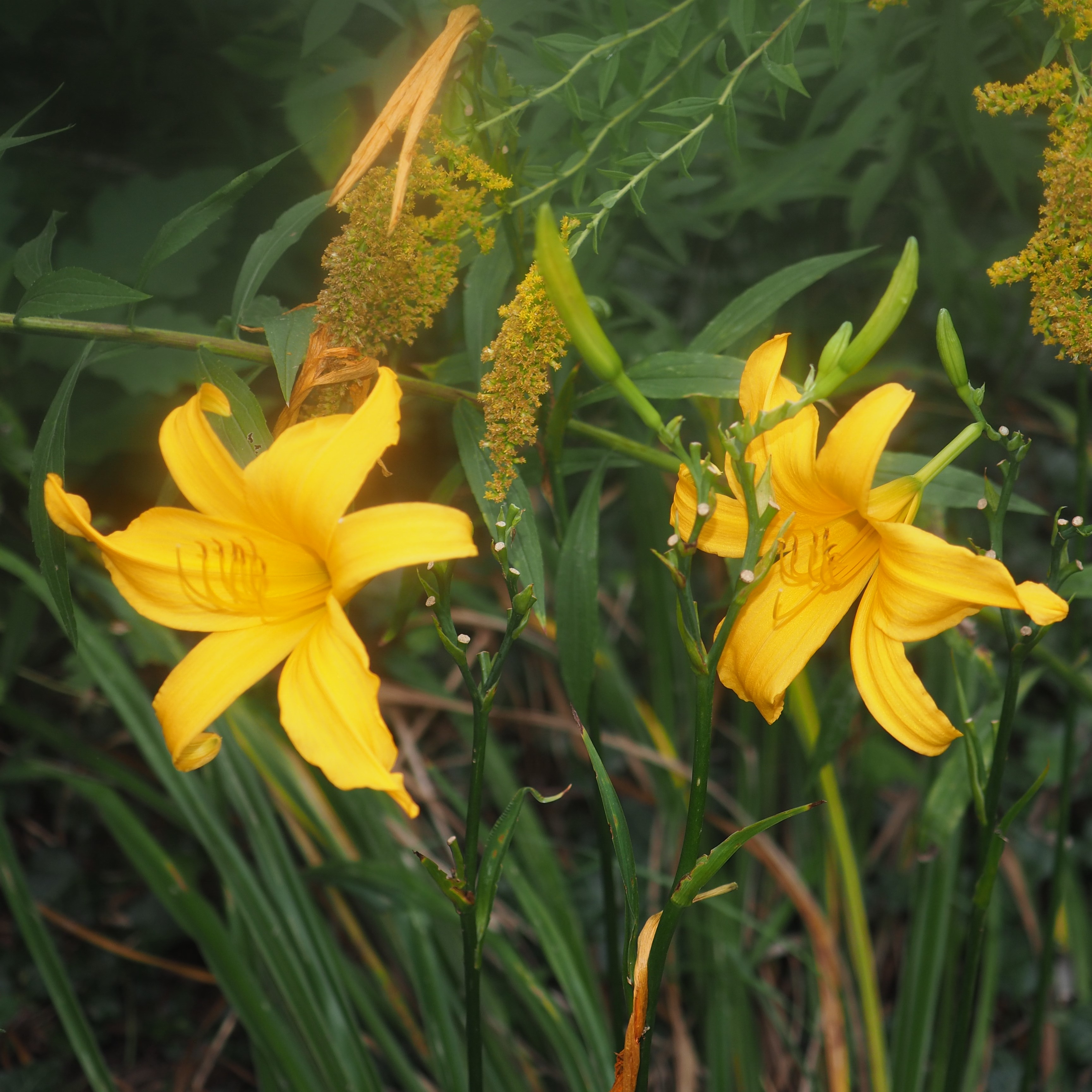
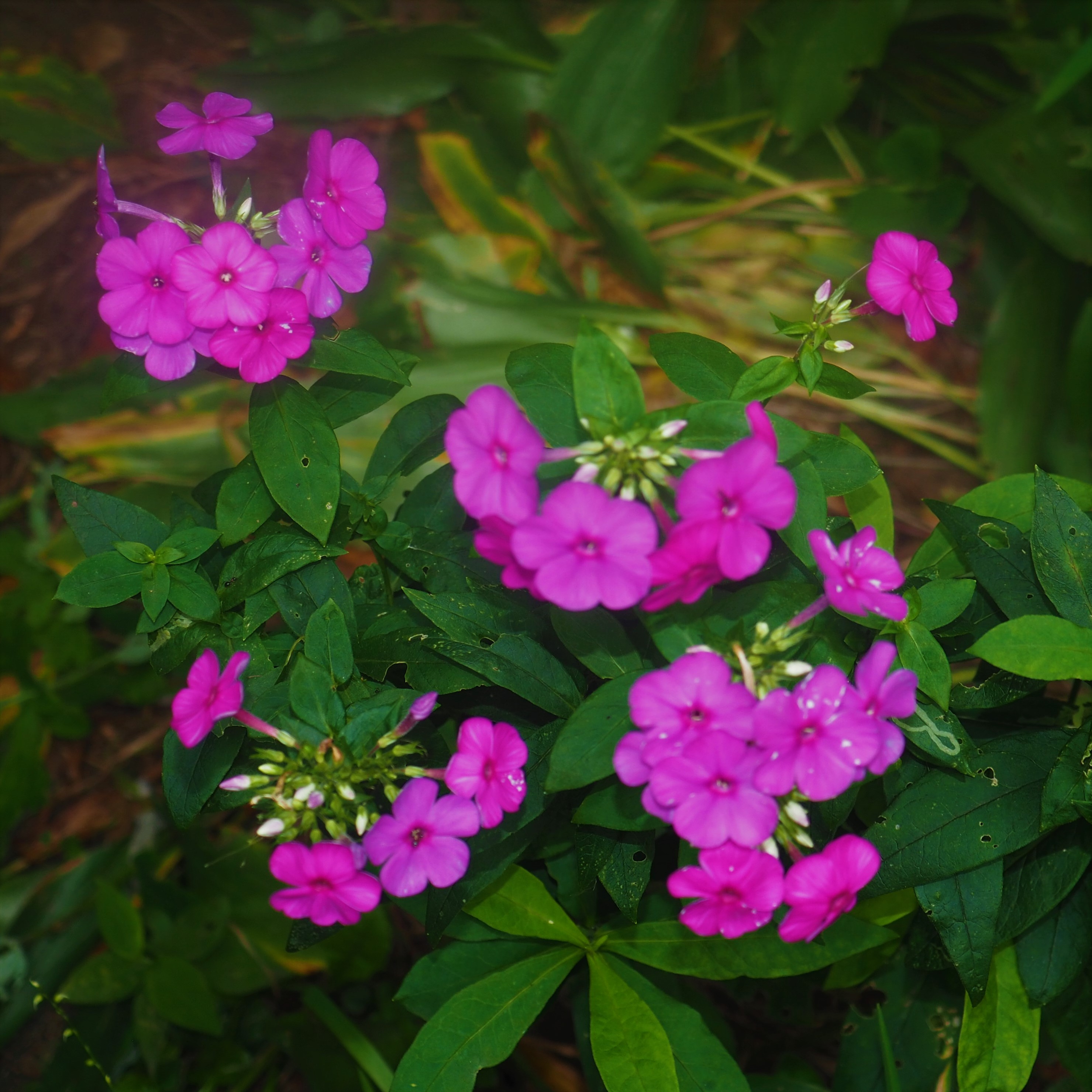
Remember that there is information in the name of the file for each image. You can see it by mousing over the
image - look at the lower left of the screen. Or you can click on the image to get to the (usually) larger image.
Then the info is displayed in the address line above. Sometimes the second click will actually display a
different view of the original image.
The ants also seem to have passed their prime. Here is an Eastern Black Carpenter, followed by a Small Honey Ant, then a Smaller Carpenter Ant, and finally a mystery - some kind of Myrmicine Ant.
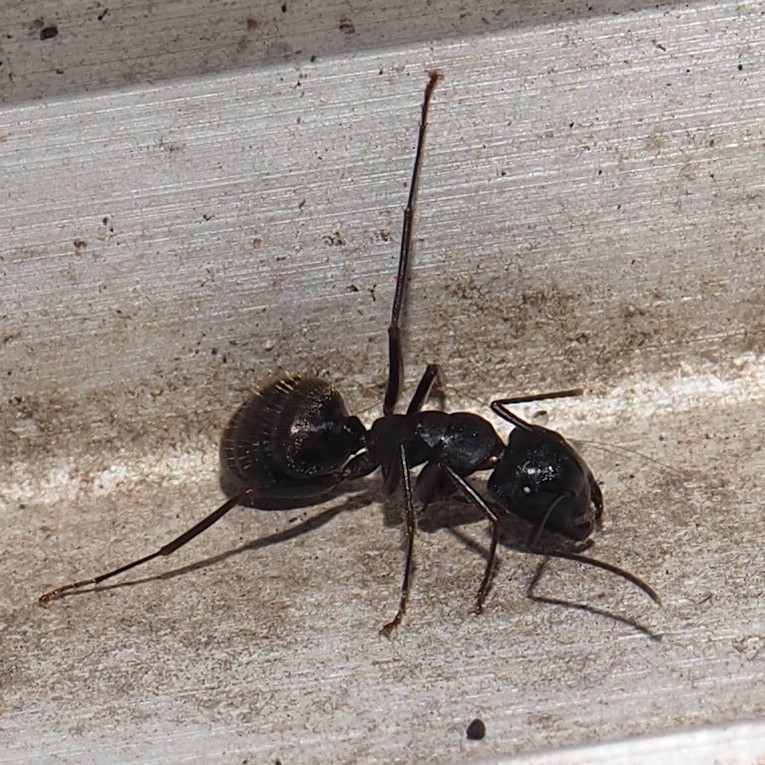
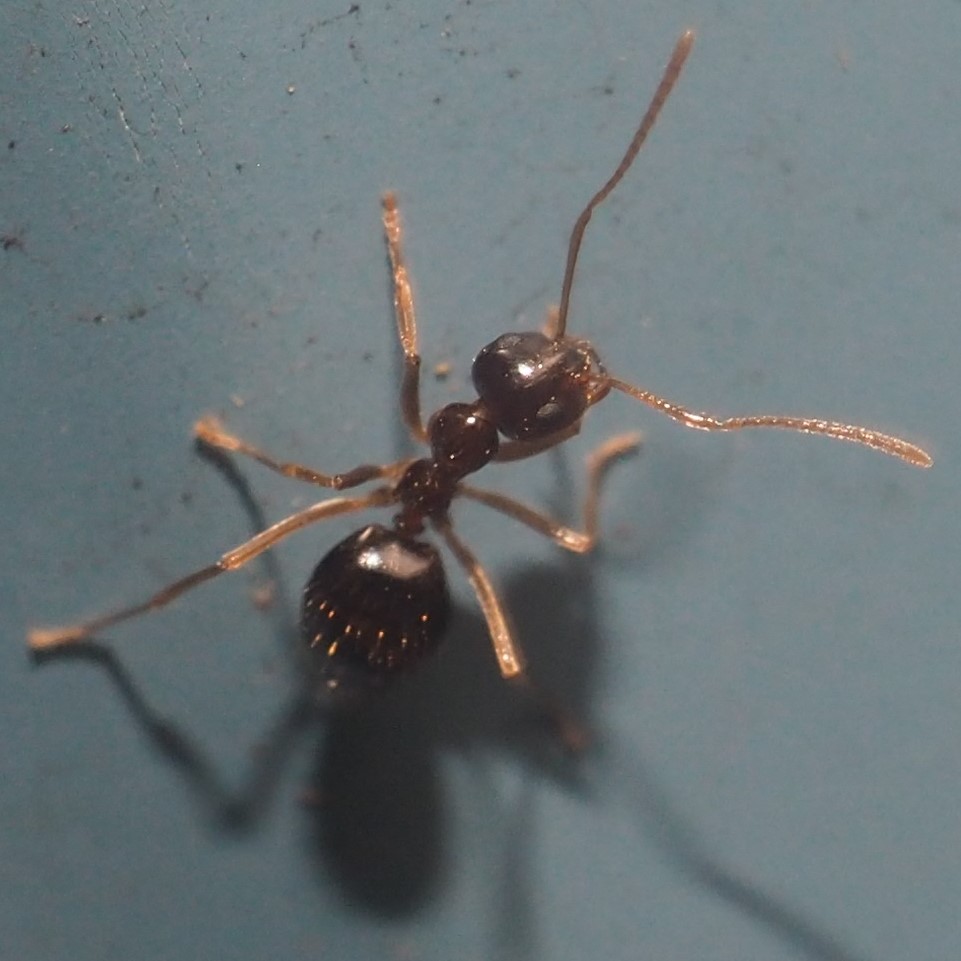
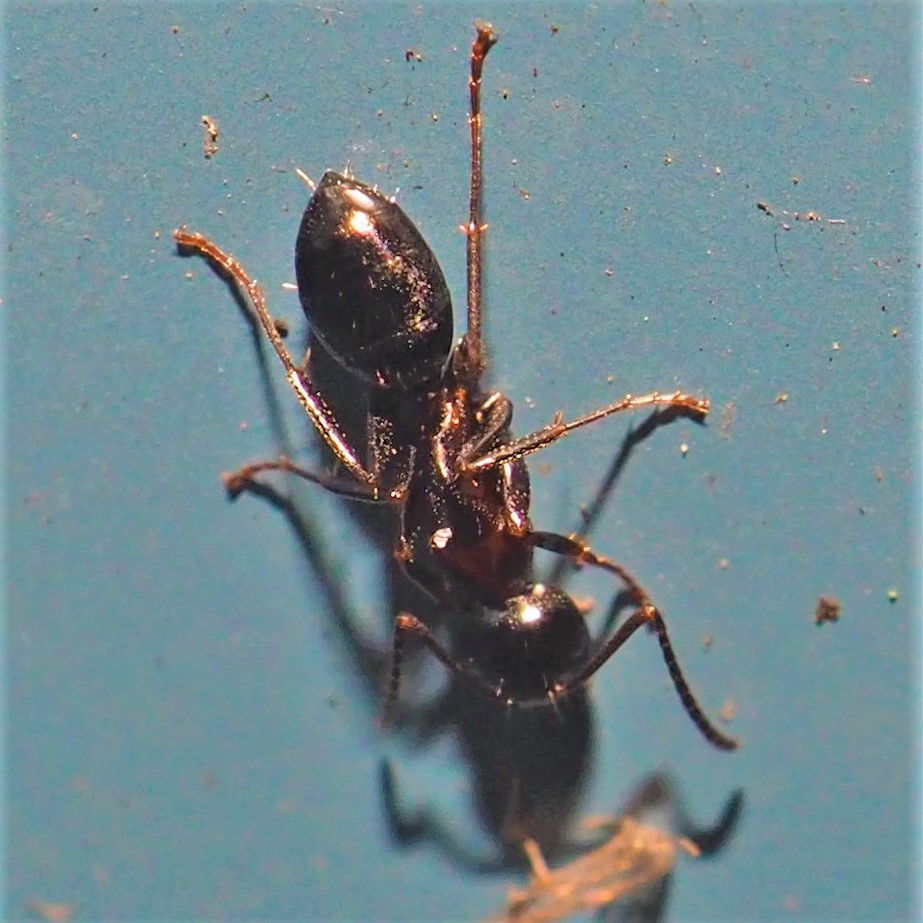
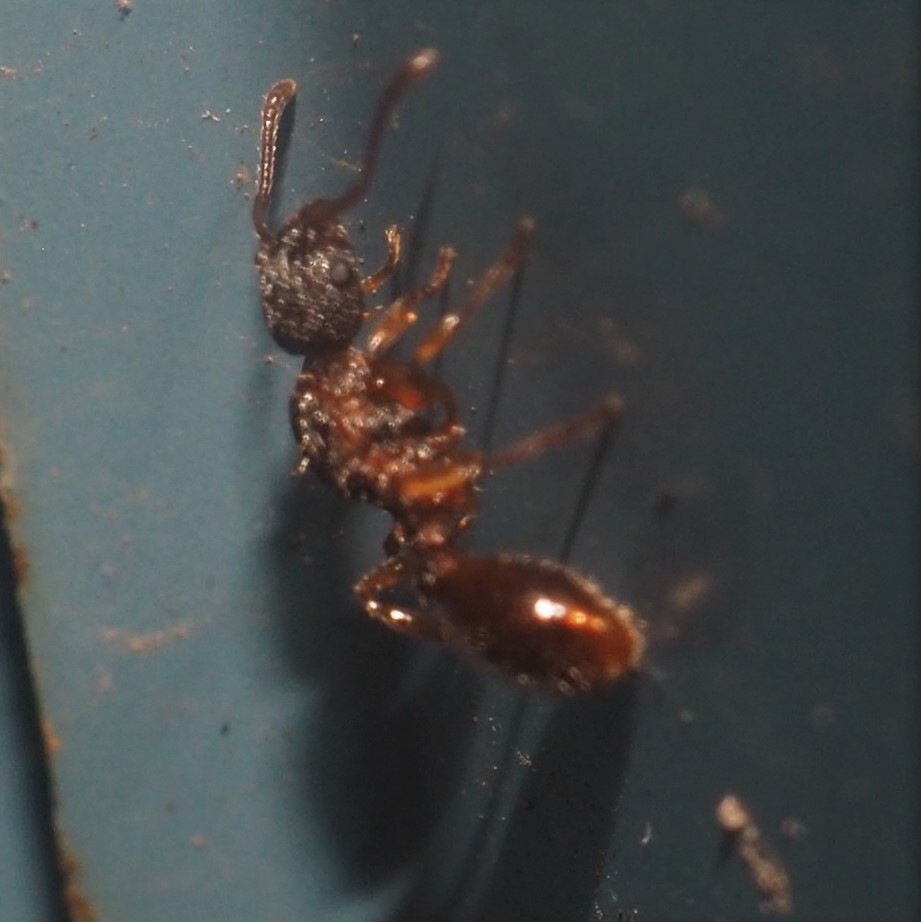
Among the Barklice, Most of the Polypsocus corruptus nymphs seem to have successfully morphed into adults. Here is a female and then a male adult. As for the Graphopsocus cruciatus nymphs, they still greatly outnumber the adults.
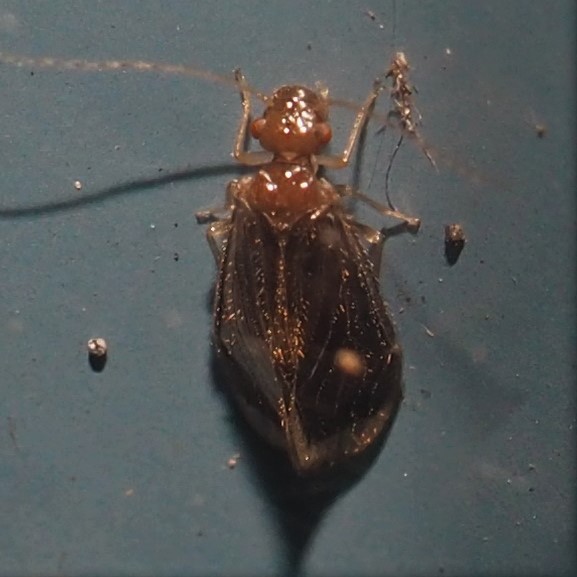

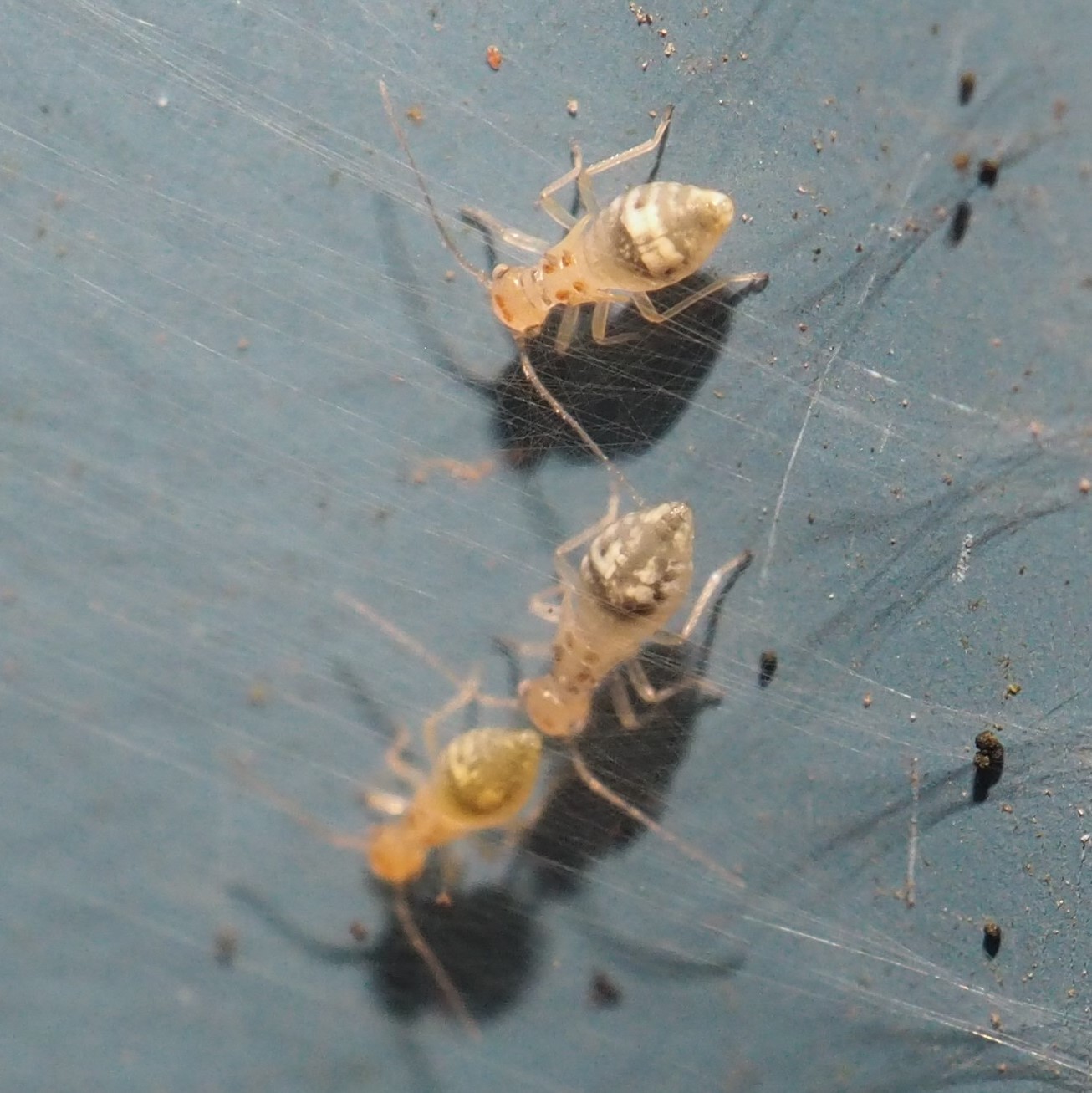
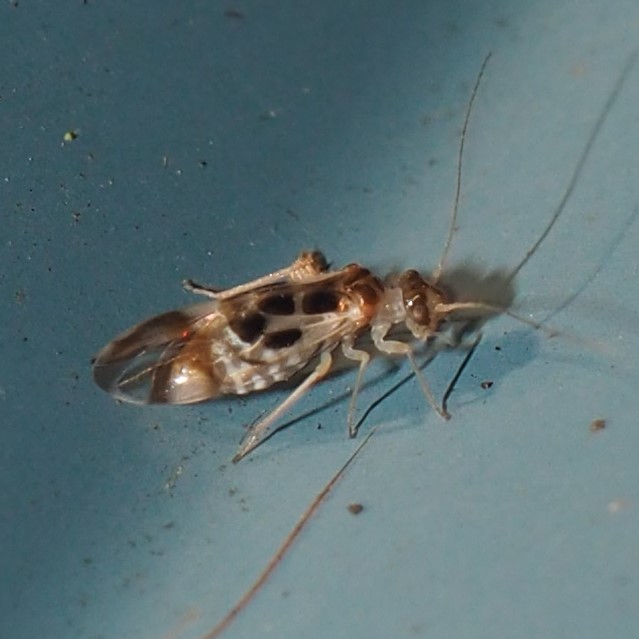
The Ectopsocus meridionalis females are laying eggs all over the eastern half of the North Wall. This is a common picture. Second, here are typical Ectopsocus nymphs. And last is a nymph that I thought at first was Ectopsocus, but it doesn't look right. Anyone? Anyone?
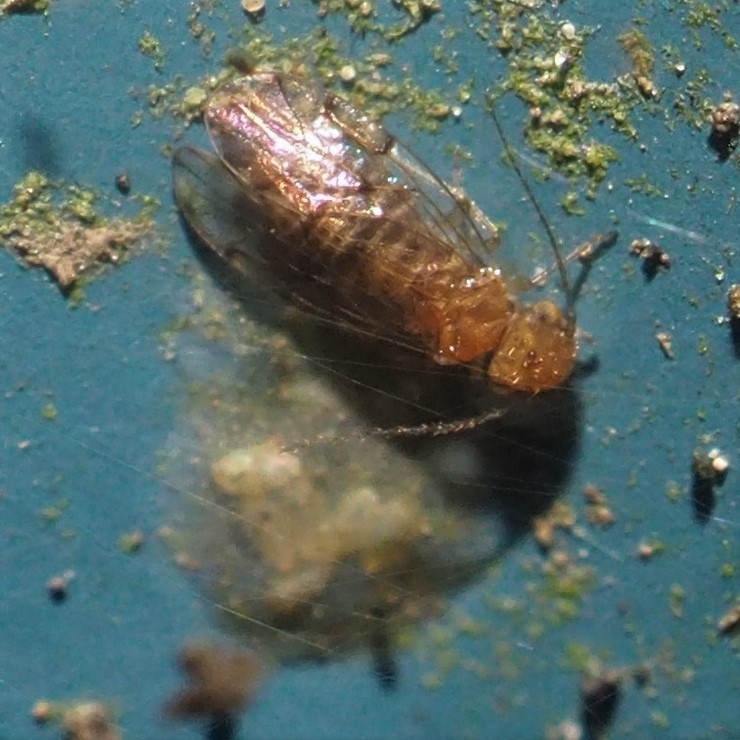
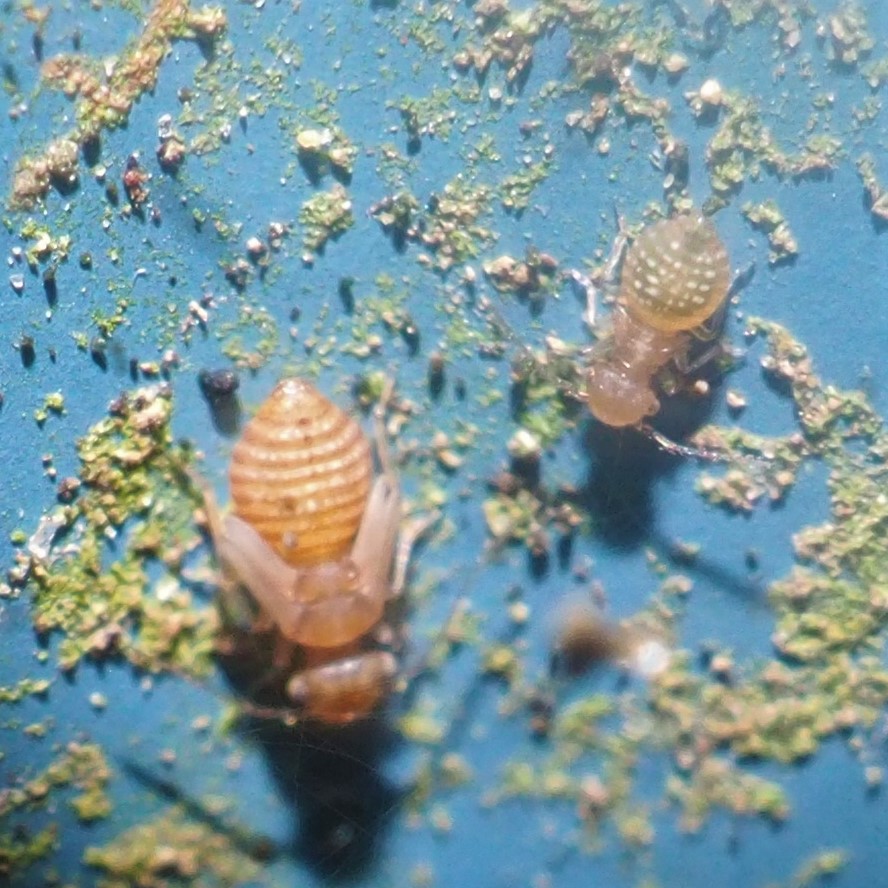

The Echmepteryx hageni seem now to be mostly ddults. We also had a couple of Metylophorus novaescotiae this week (picture 2) as well as a couple of competitors. Picture 3 shows the best example.
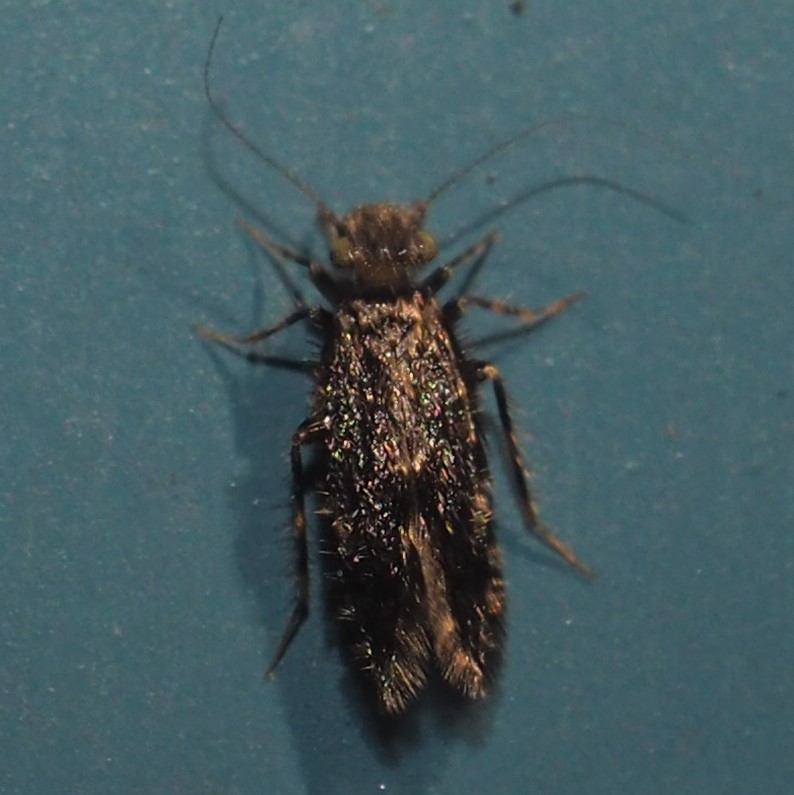
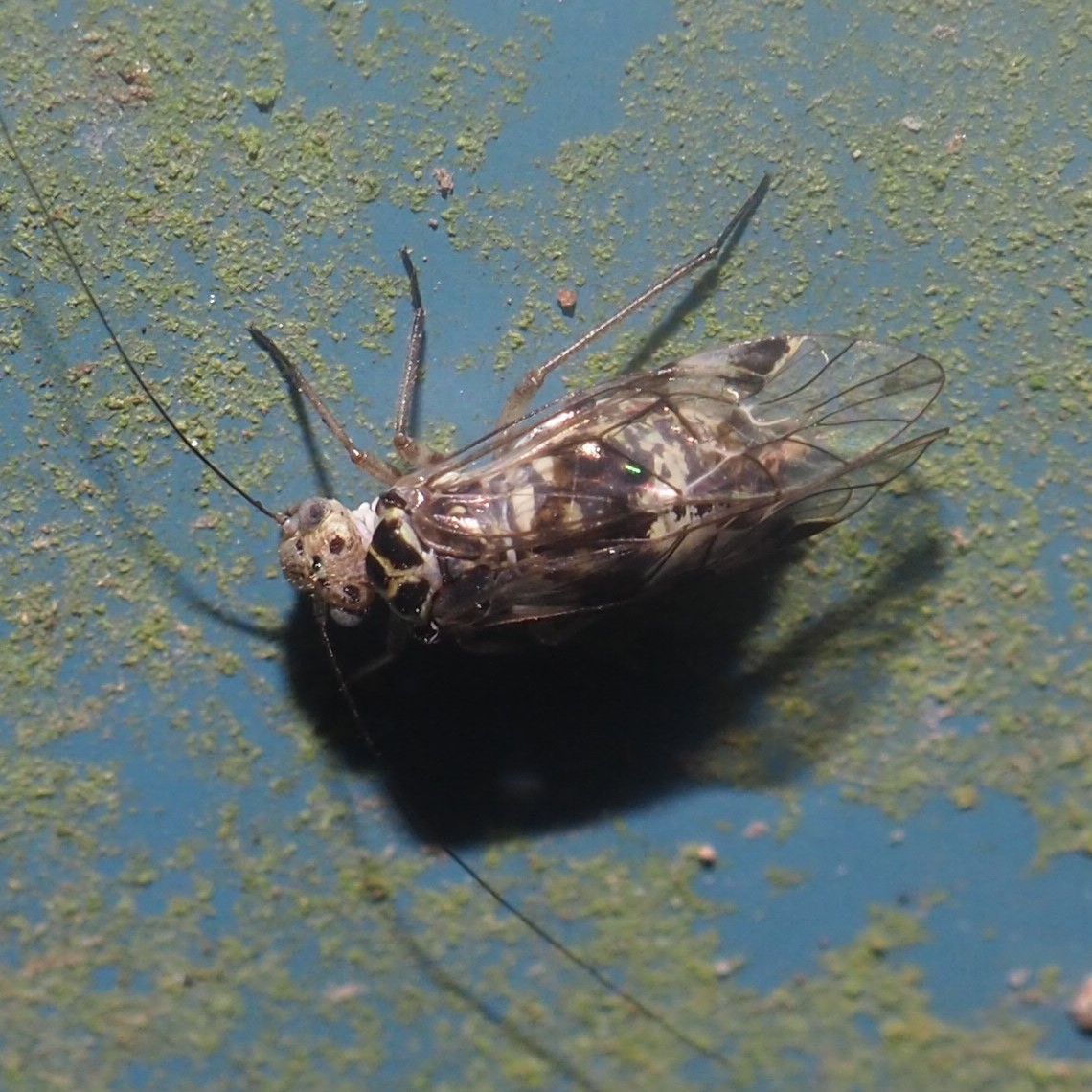
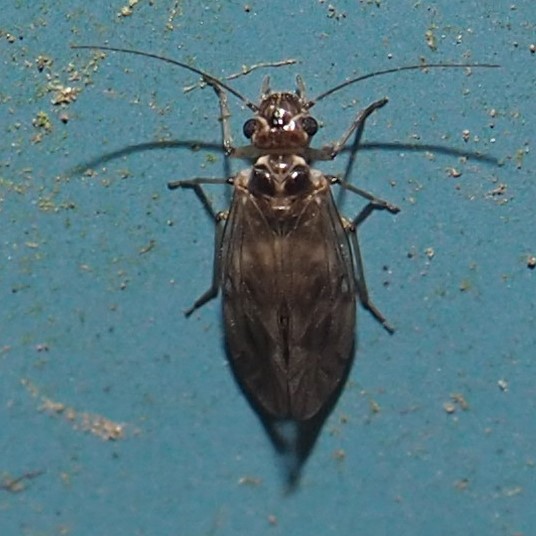
The adult (picture 1) which Diane Young diagnosed as Teliapsocus conterminus last week disappeared a couple of days after that. But the biggish nymphs with the whitish debris all over them are still here, and seem to like to hug the line between panels 10 and 11 on the North Wall. We're now down to 3 or 4 of them. You can see their wings are in various stages of development. In pictures 3 and 4, it looks as if there is a little baby nymph. Finally my palm hit my forehead! Those are shed skins from their moults! And you can now see how long the nymph wings have grown, compared to picture 2.
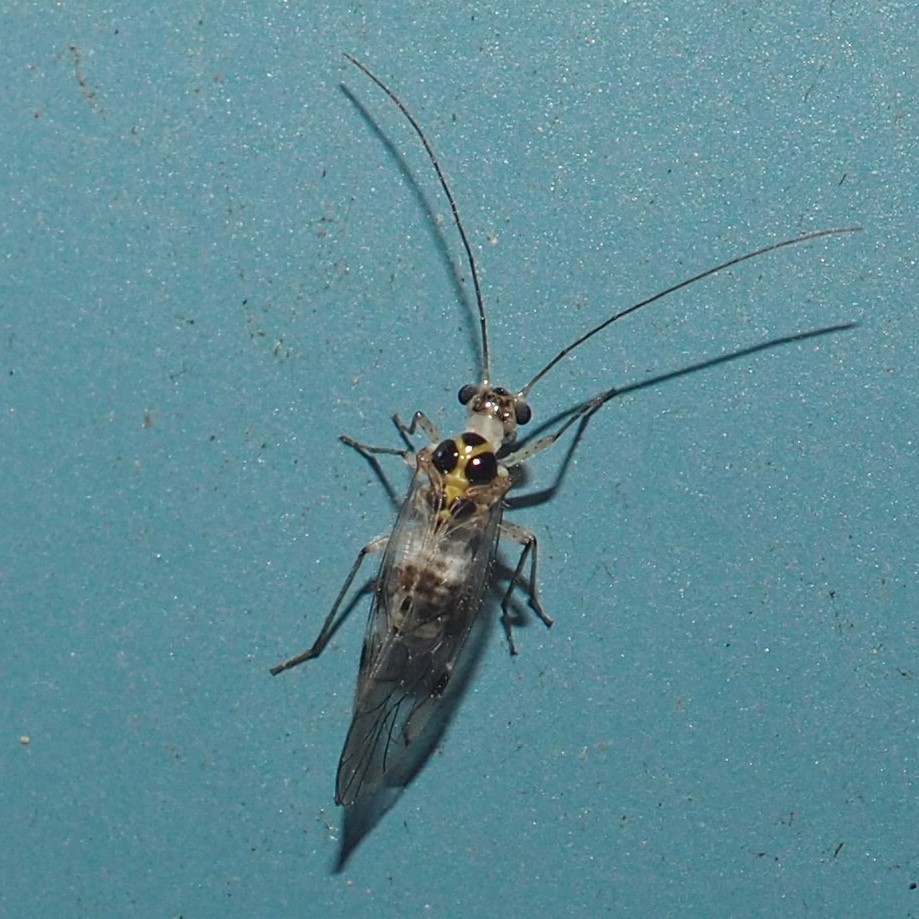
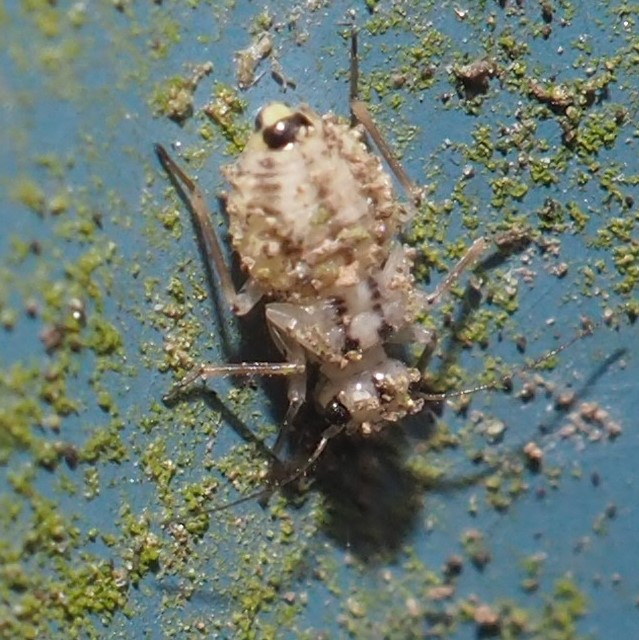
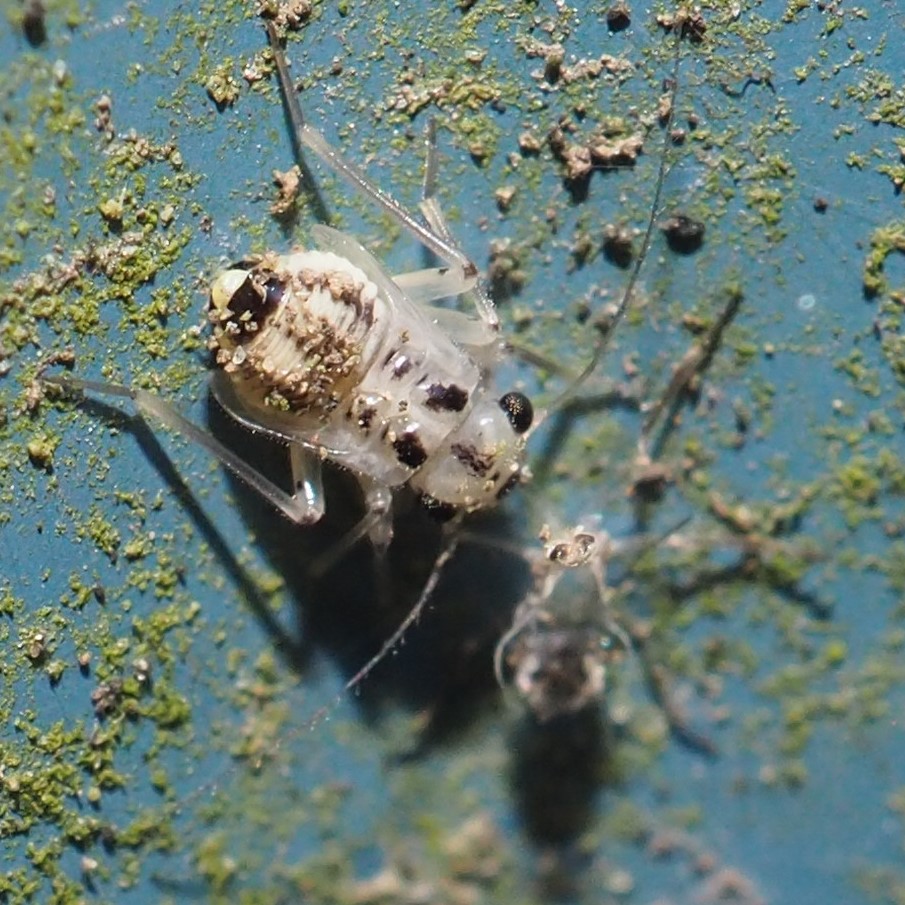
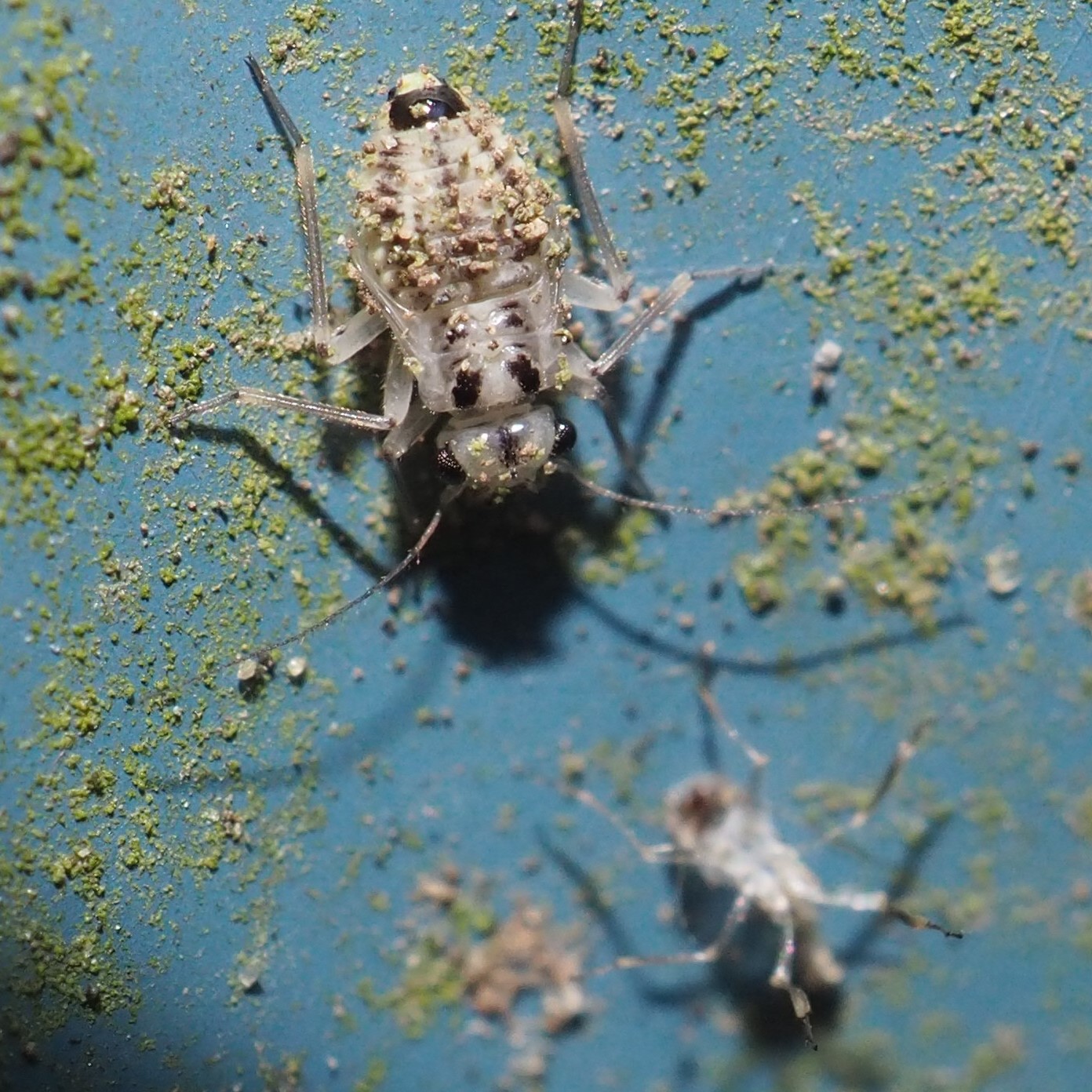
We had a number of Trichadenotecnum alexanderae this week, but the Loensia moesta adult that I had confused with T. alexanderae has not returned. We were apparently very lucky to have seen that one because @joemdo of iNat pointed out that Michigan was not exactly on the usual route to Texas on the iNat map of that species. But there was an observation in Canada at the tip of the St. Lawrence river and if you follow that line to very near me, it really is on the route down to Texas. There were a few other new things. Is this a kind of Barklouse nymph with the yellow eggs?
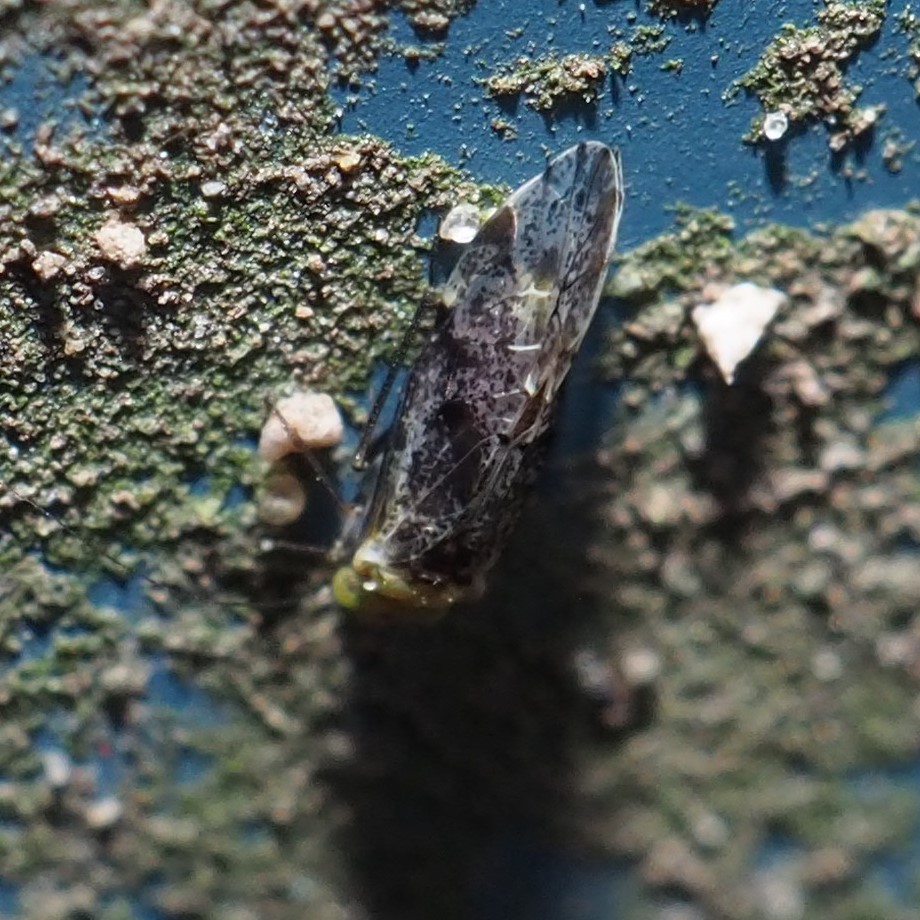

Thanks to the Goldenrod and now to the Asters, we have had quite a few bees, known and unknown. Of course, our lovely Western Honey Bees are among the visitors. So are several species of Bumble Bees, of which picture 2 shows one of the larger. There were also several shiny ones that I usually just call "Sweat Bees".
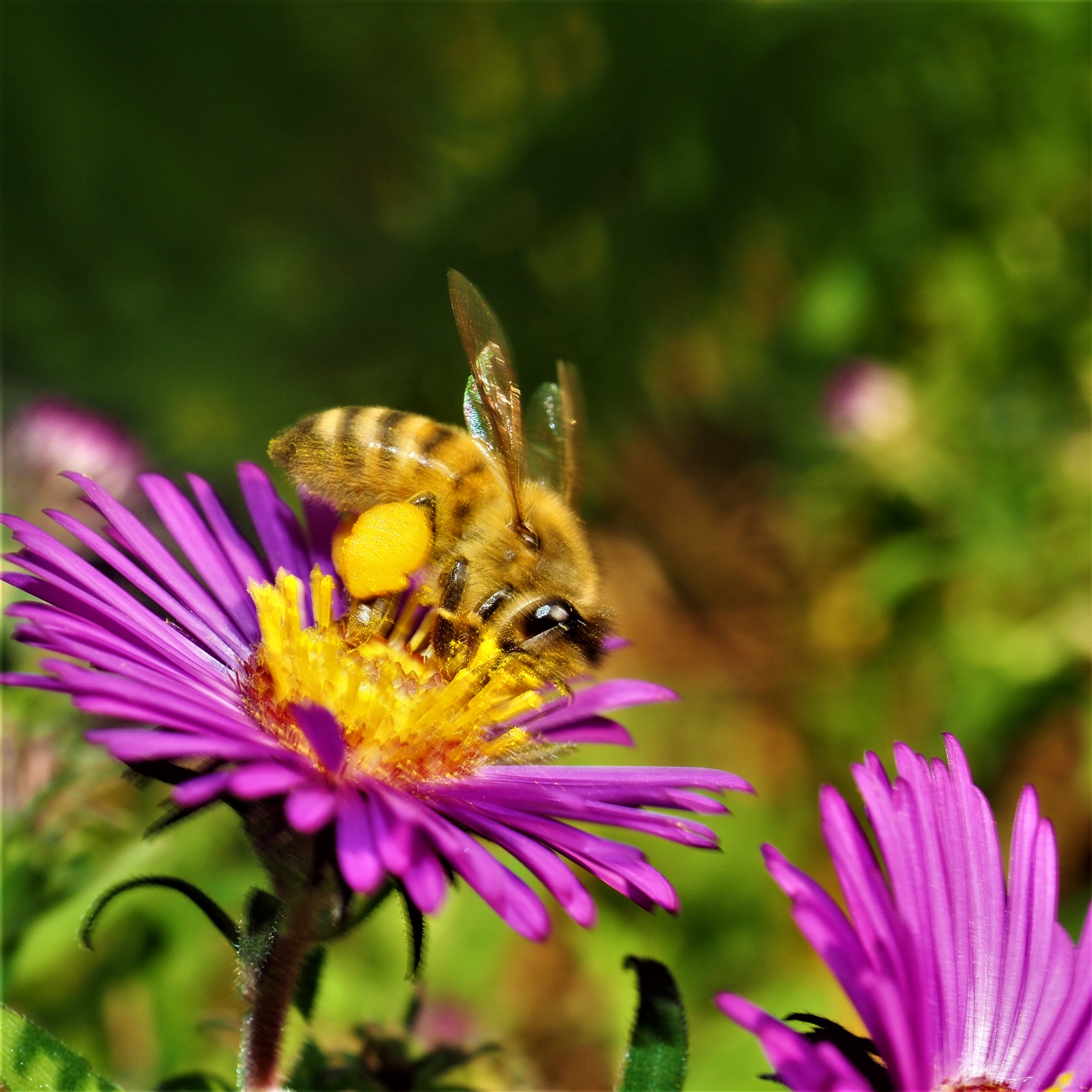
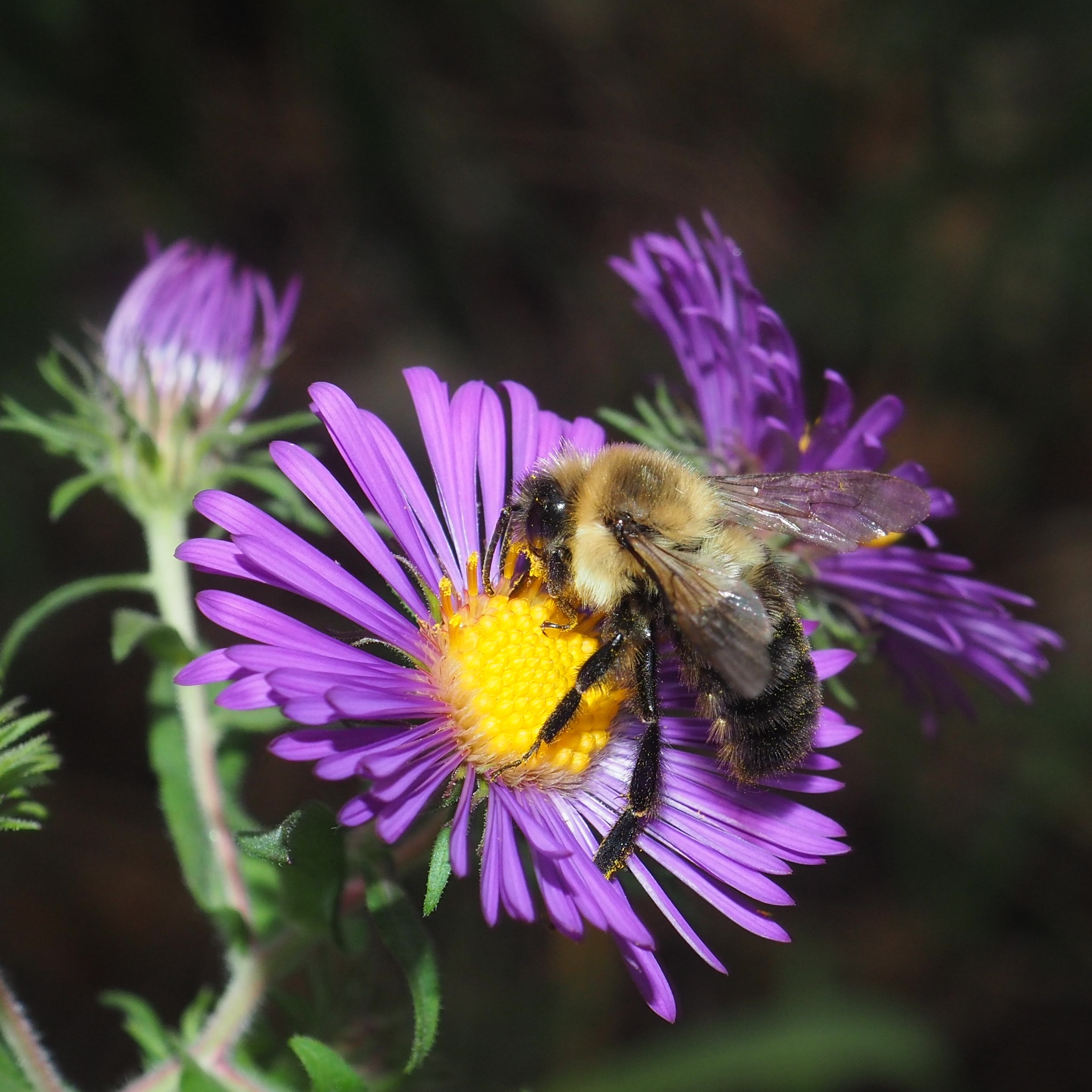

I can't stop! I love all these little jewels.
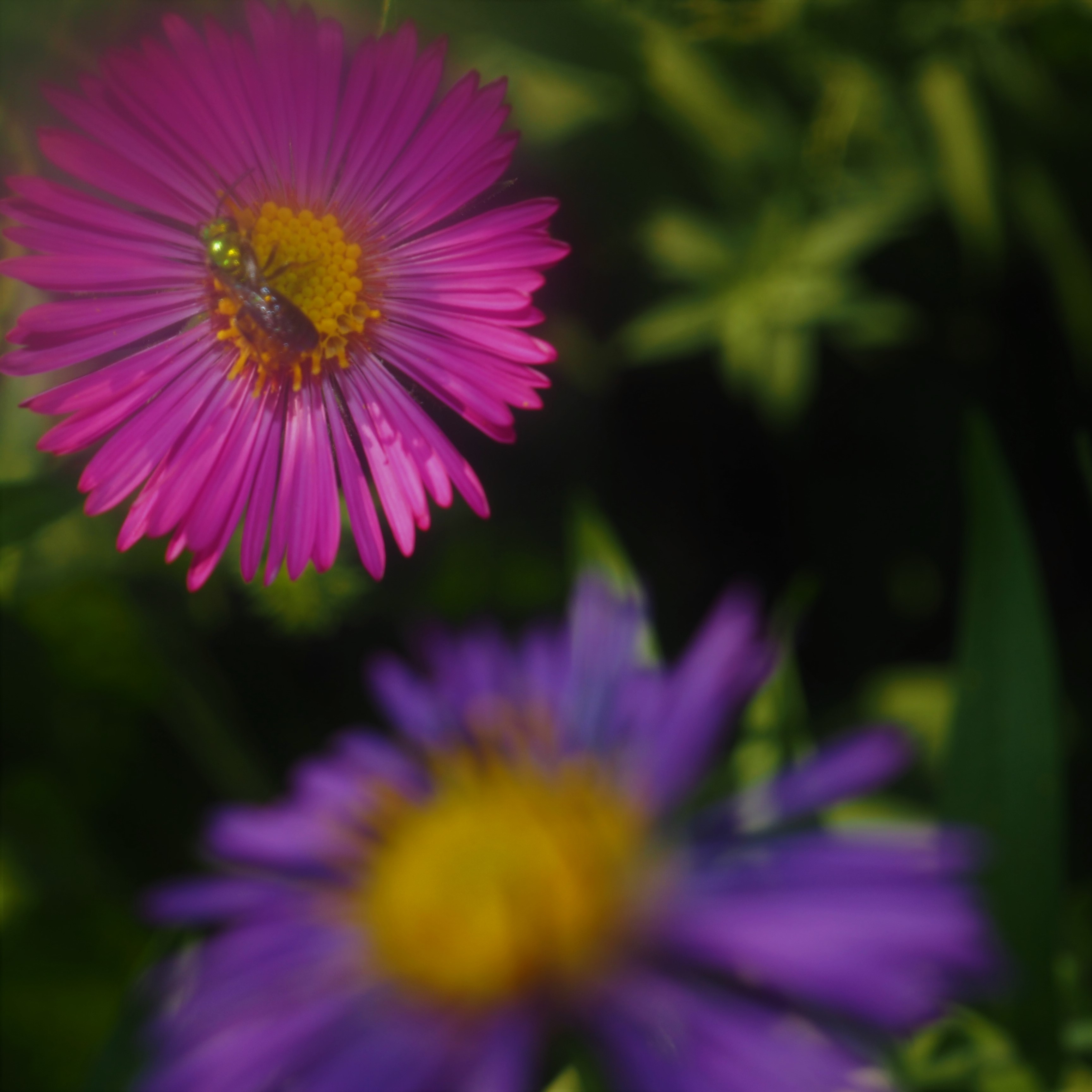
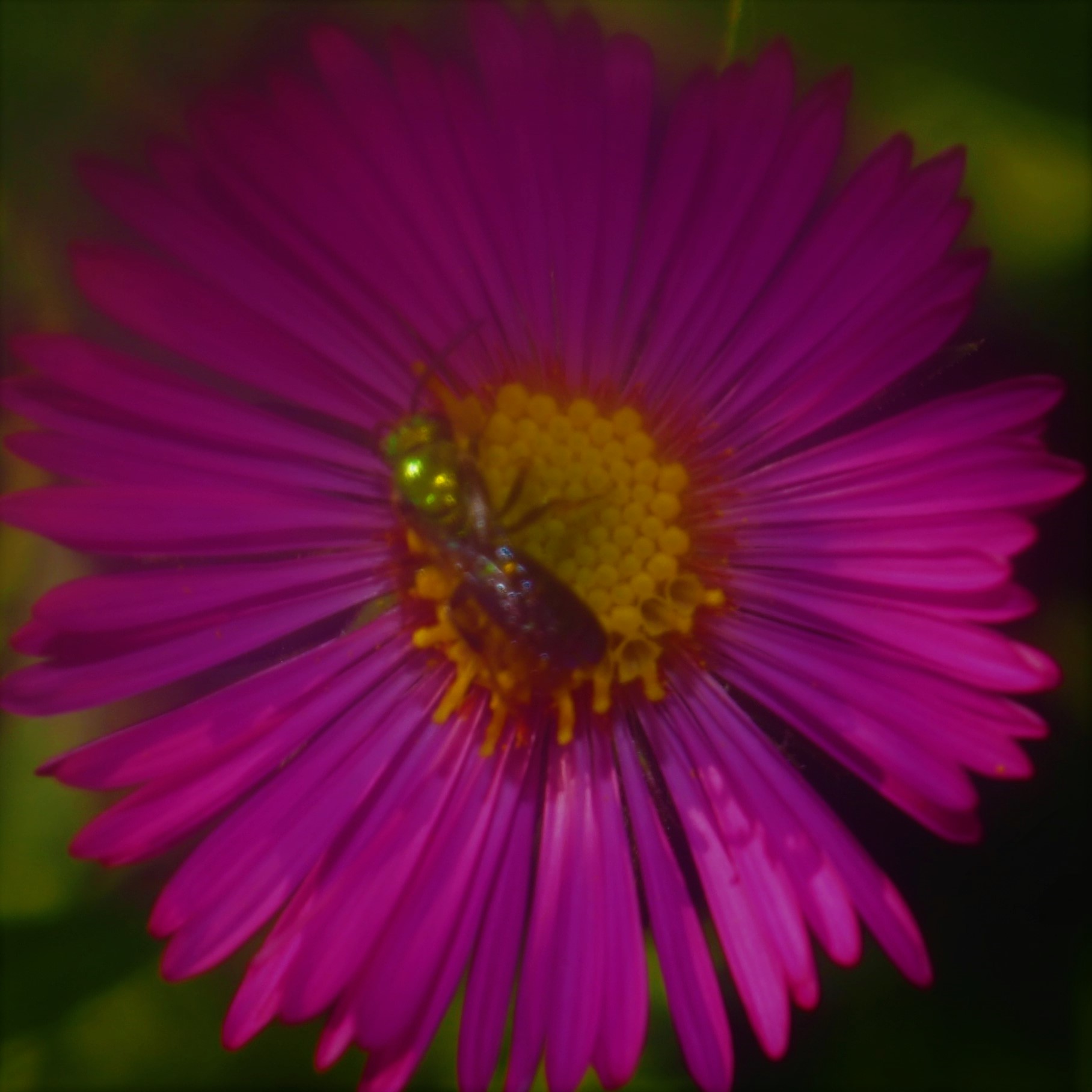
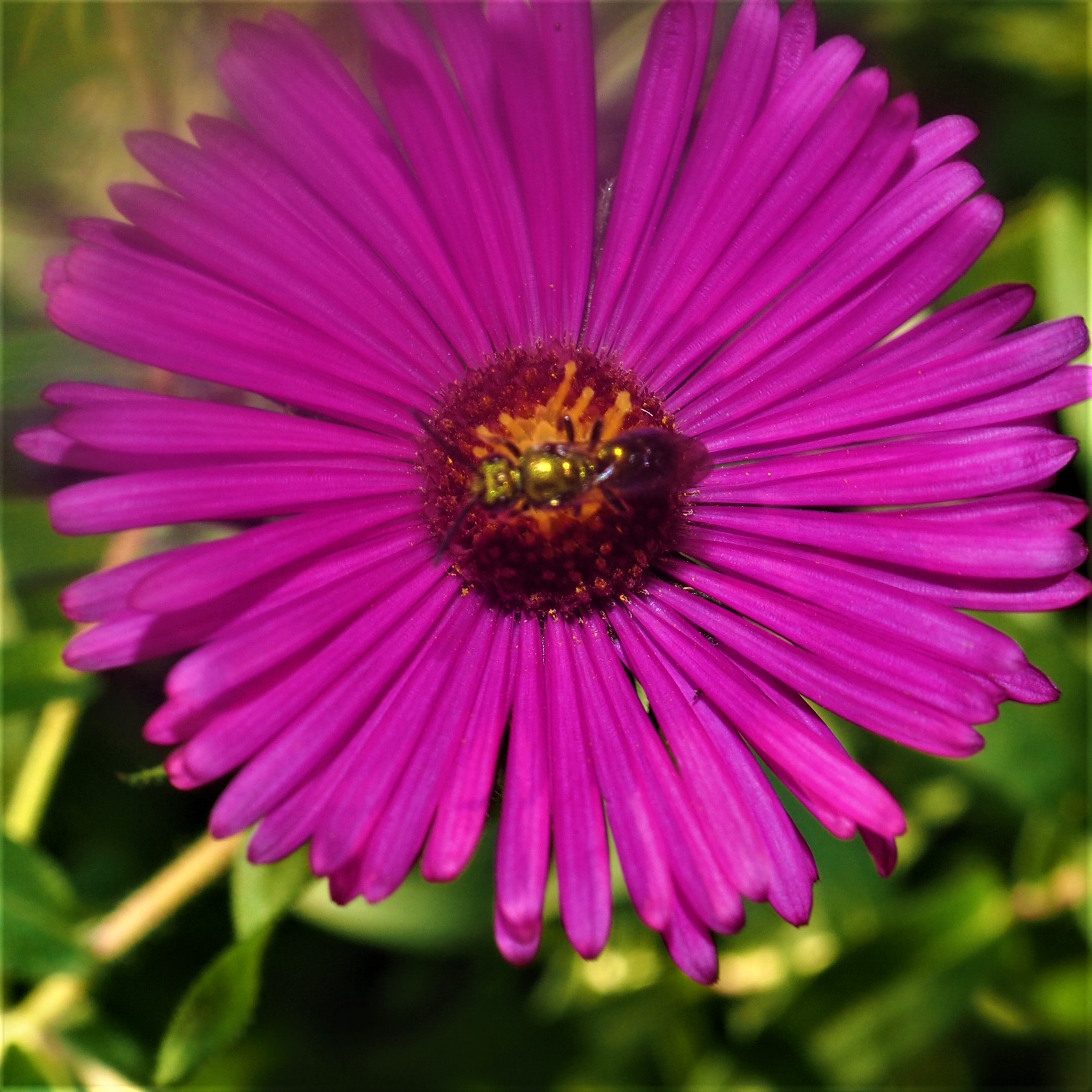
I've noticed several times as I push my way through the goldenrod that something has either bitten or stung me, and when I sweep the offender off, I realize it is one of those Asian Lady Beetles. And then I remember when we still had our sweet little good old American Ladybugs, that they had never had a rep for biting but that the new ones did, and I miss our sweet little Ladybugs. But the Asian ones fill a niche for eating "noxious beasts" like Aphids. Speaking of Aphids, I haven't seen any of our usual ones that fill the goldenrod. Remember last year, when the Aphids were prey to a wasp that turned the Aphid into a so-called Aphid Mummy? And the Hover Fly larvae that were hell on Aphids too. This doesn't mean that there won't be any Aphid colonies next year. There must be somewhere where they hide out during these toxic times. I kind of miss them. But I must snap out of it. We're talking about Beetles. Next is one that I always label "flat wasp" before I take a closer look. This is actually a Rove Beetle. Its hard shell is the "short shorts of Beetle skirts". Third is a little Weevil that had just snuck into the kitchen through the back door that doesn't close very well.
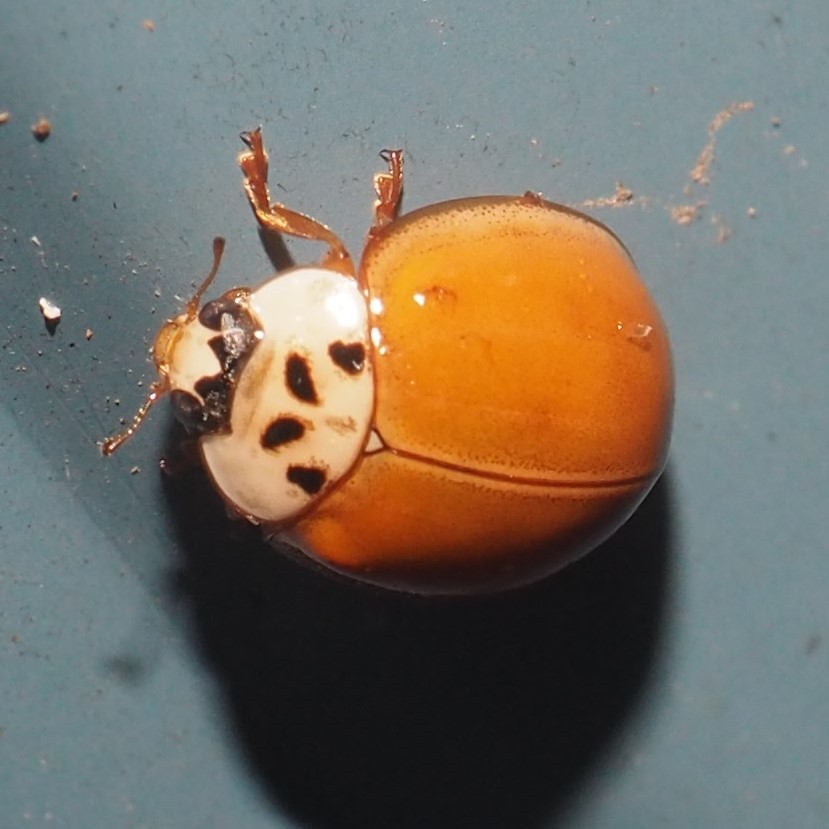
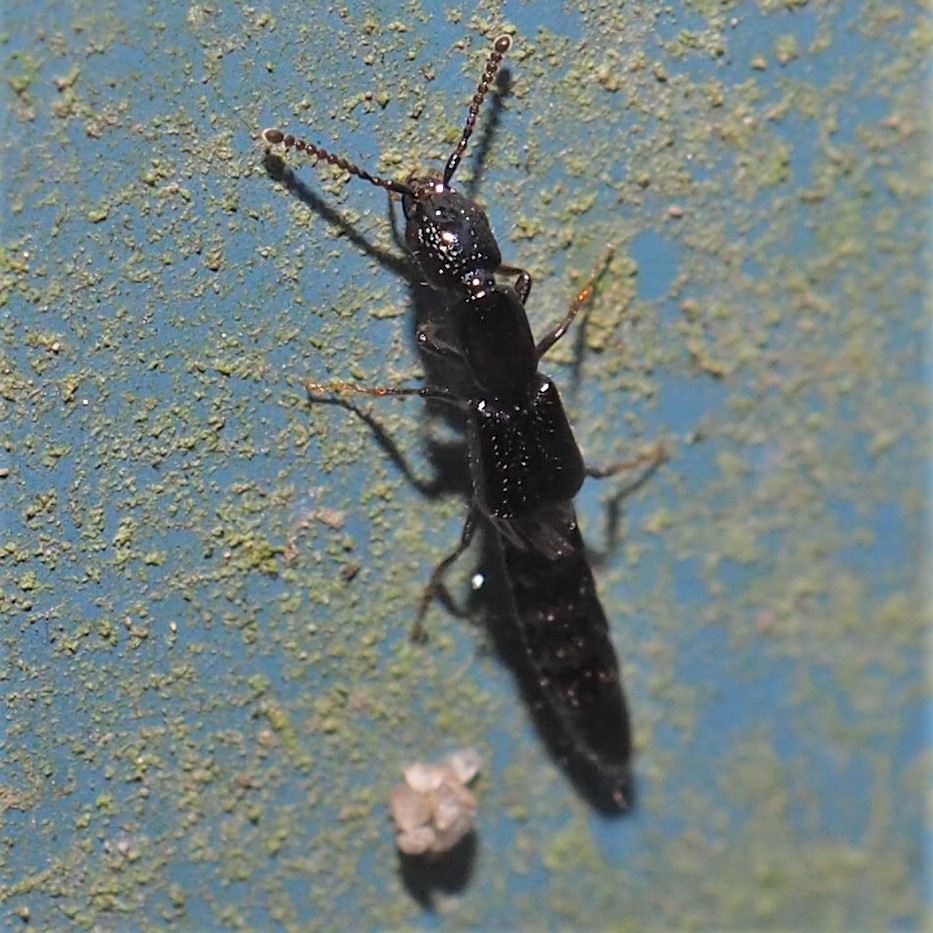
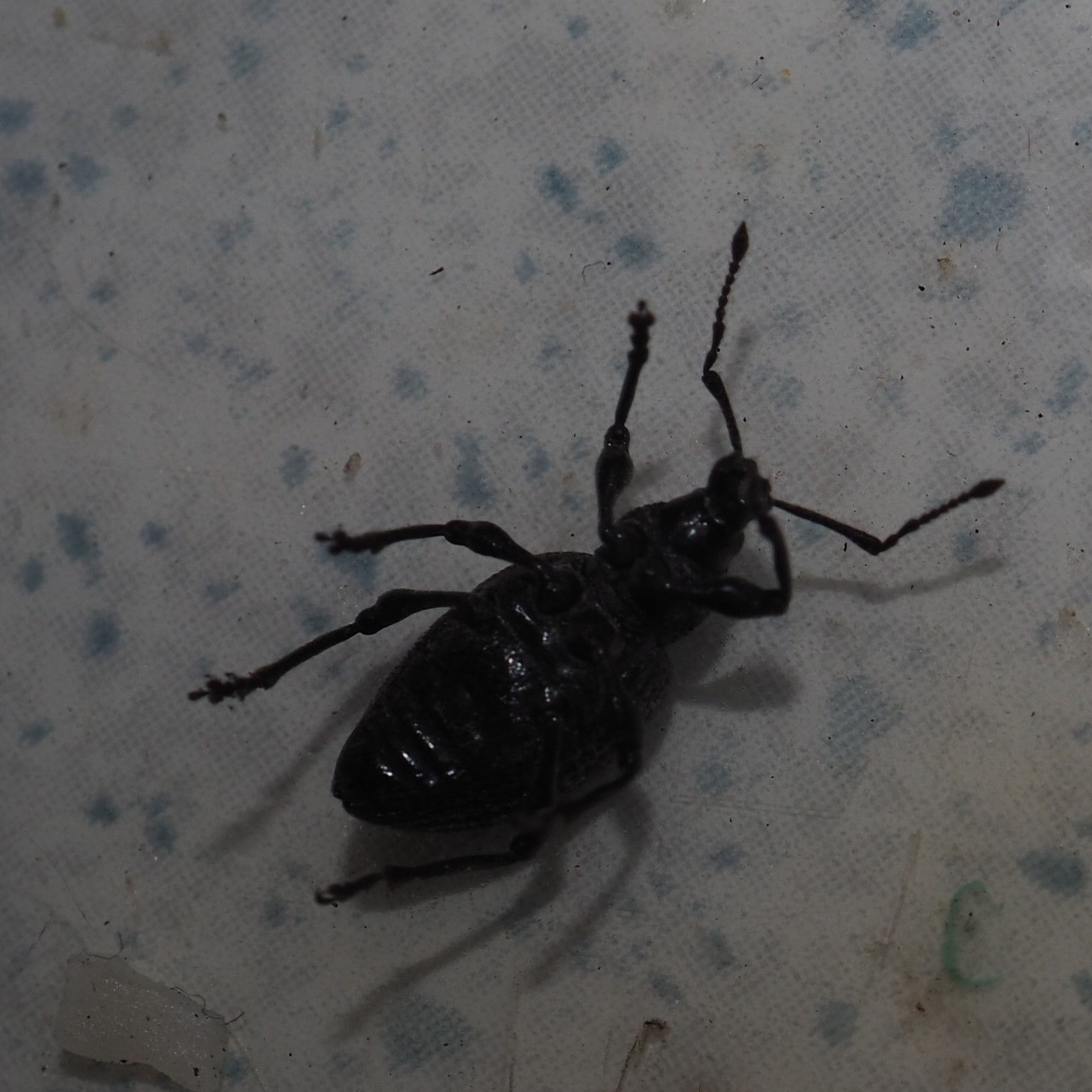
First here is a Spider eating another kind of Weevil. And last is a Locust Borer, still living on the Goldenrod.
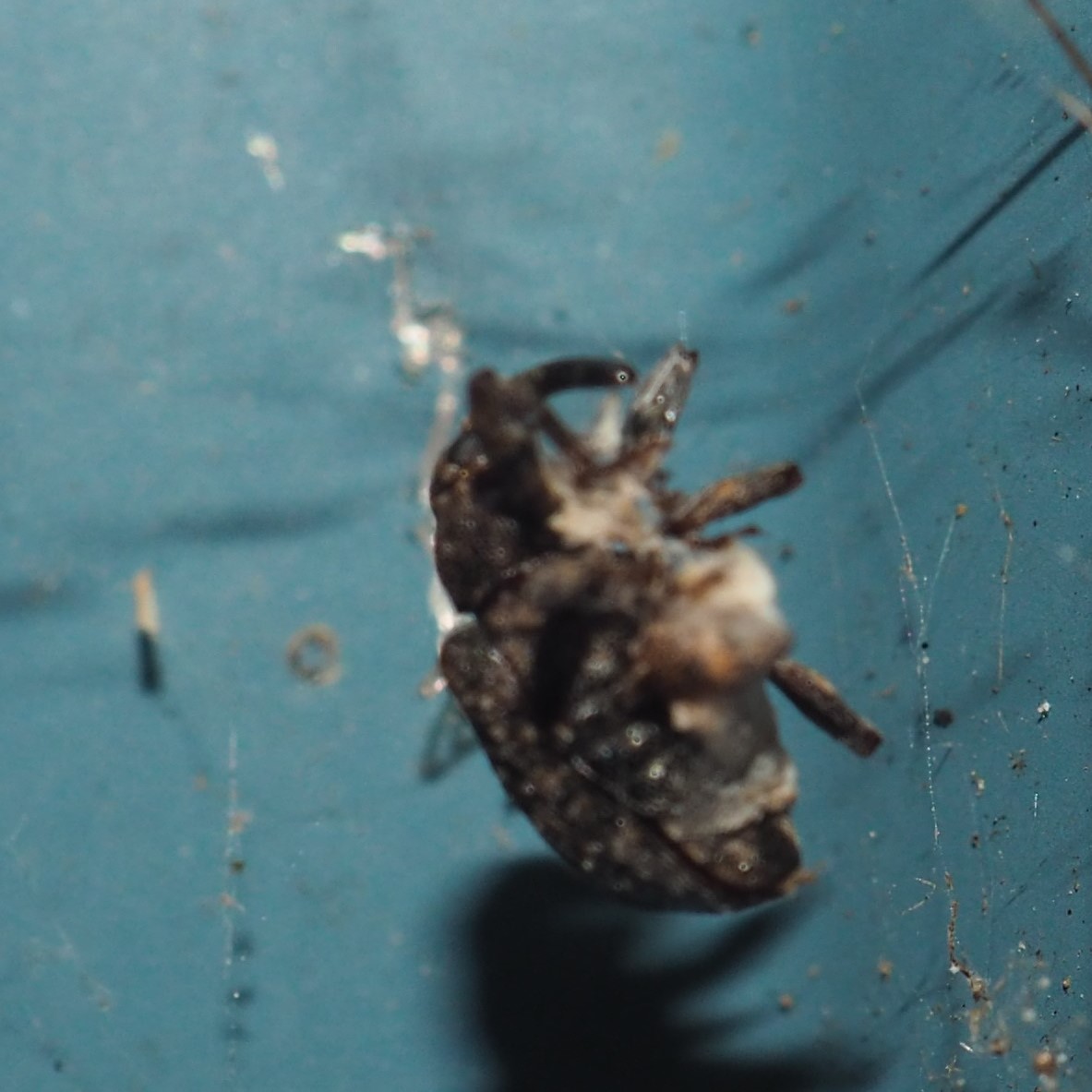

Here is that long red and black Beetle again.
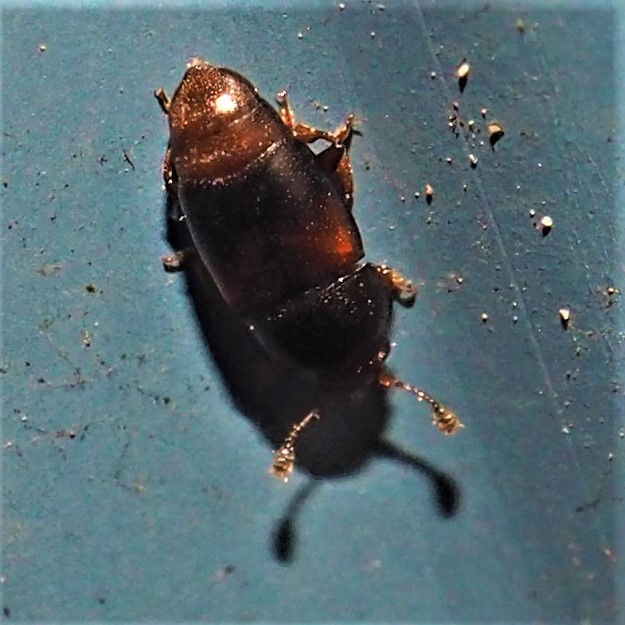
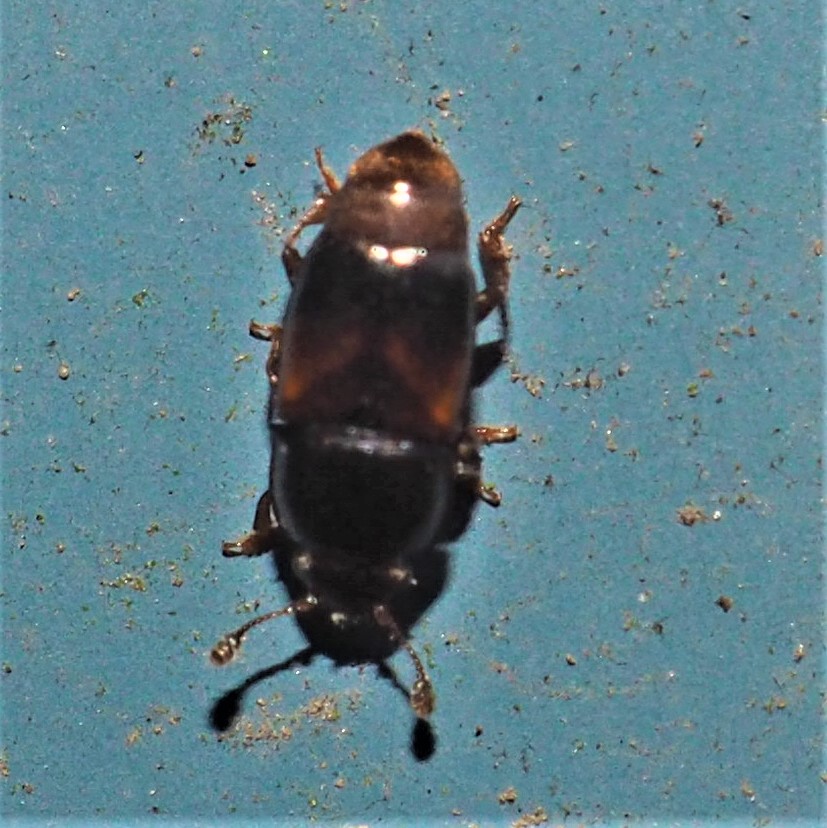
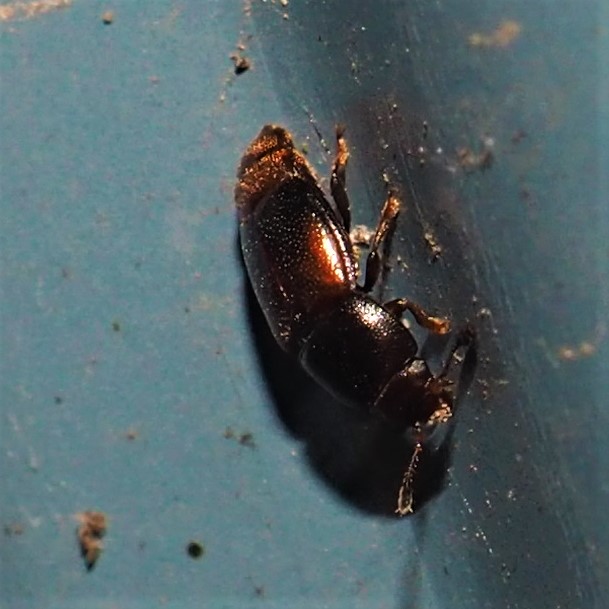
Now we visit the Bugs. Since we still have Goldenrod, we still have Ambush Bugs. Here is one enjoying what looks like an Ant. Next is one doing a danse nouveau. We hardly ever see one off the Goldenrod! Third is our faithful friend the Pale Green Assassin Bug.
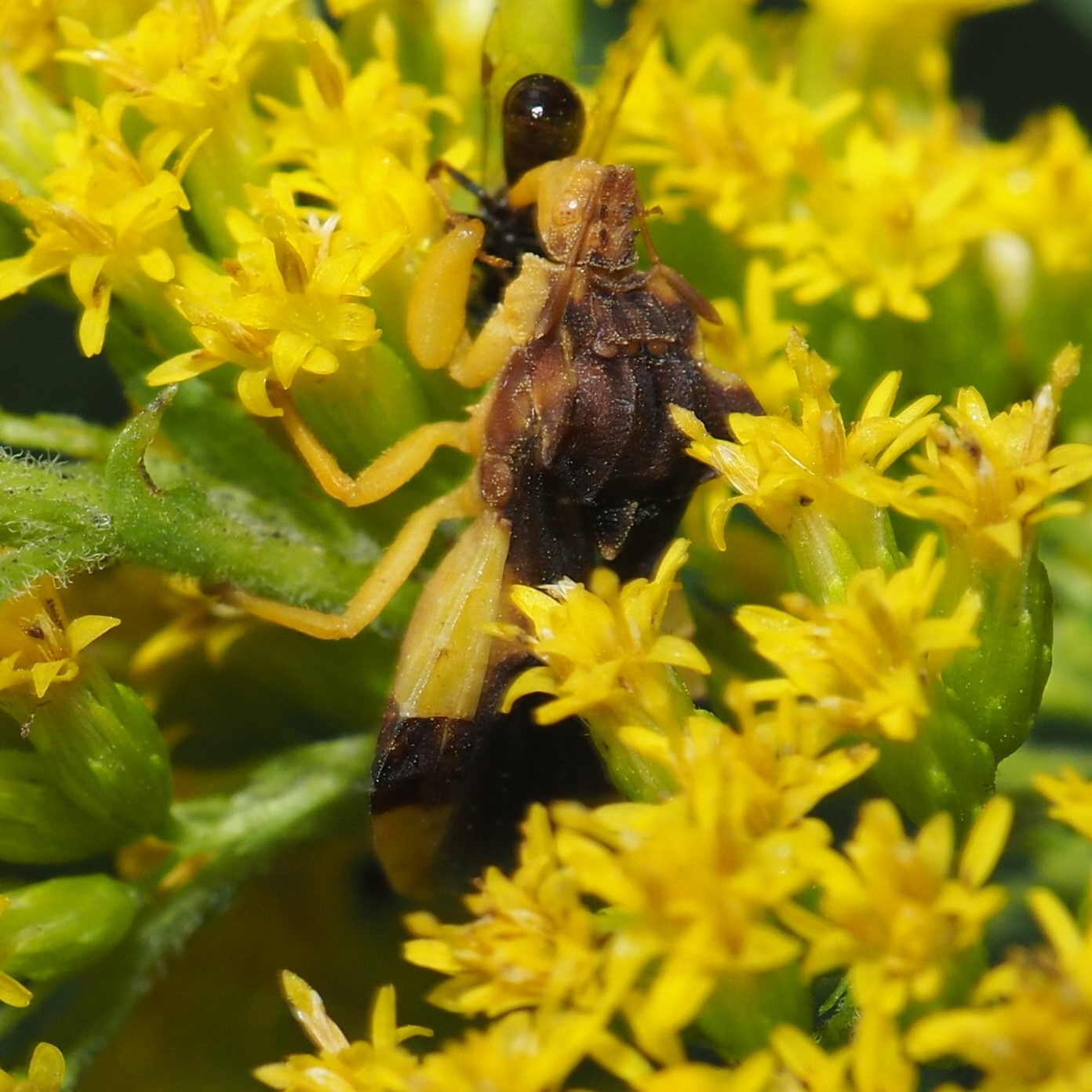

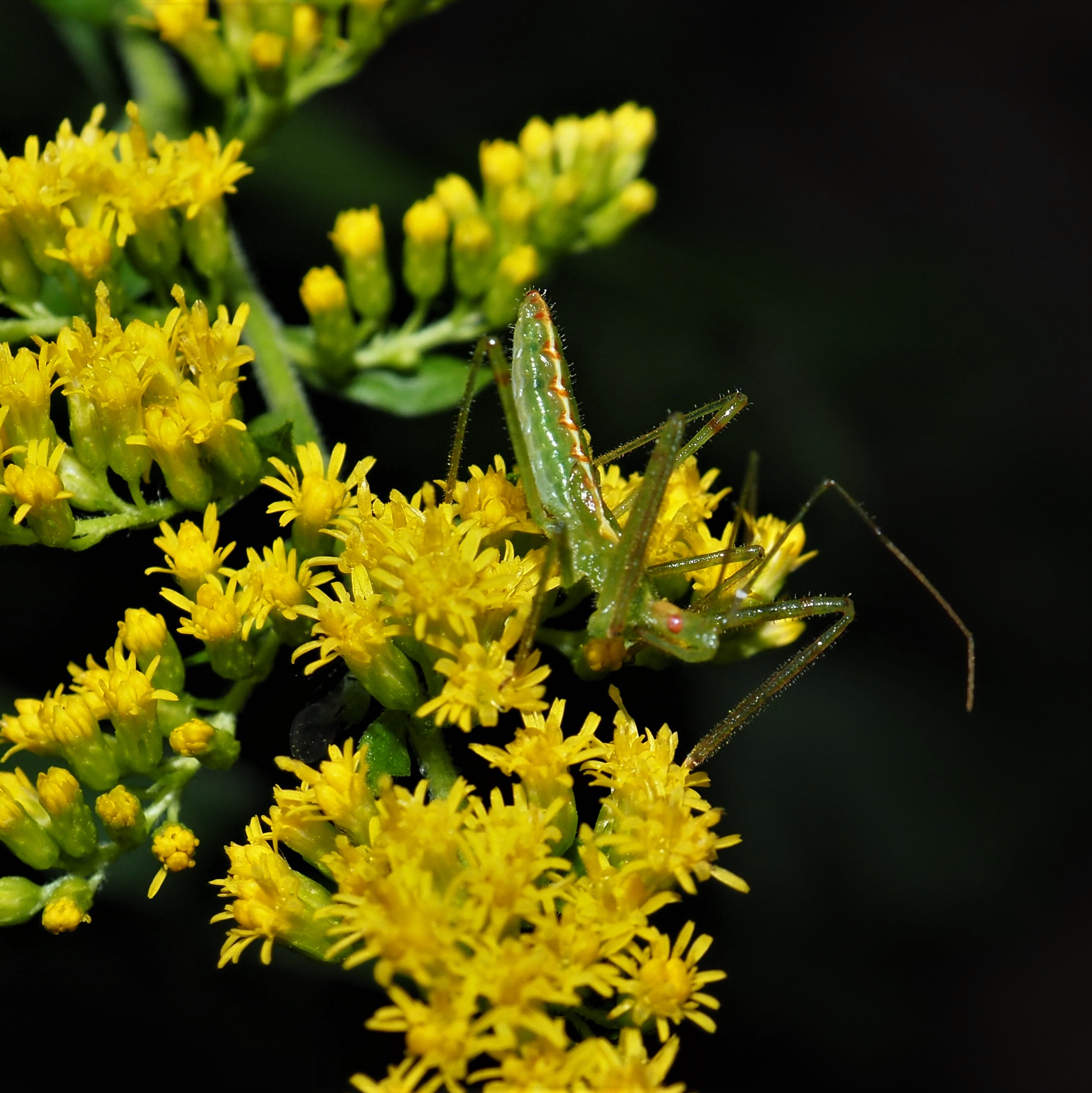
Now we find ourselves among the leafhoppers. Here is Erasmoneura vulnerata, followed by one of the Eratoneura, and then that brilliant Graphocephala Leafhopper, the Red-banded Leafhopper. Last is a member of genus Osbornellus.
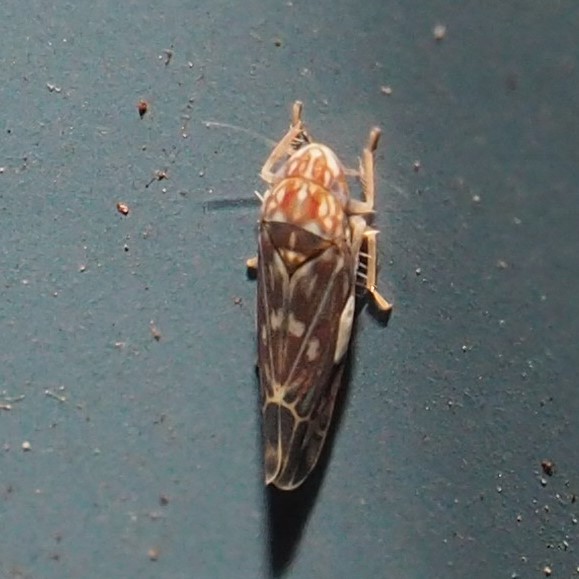
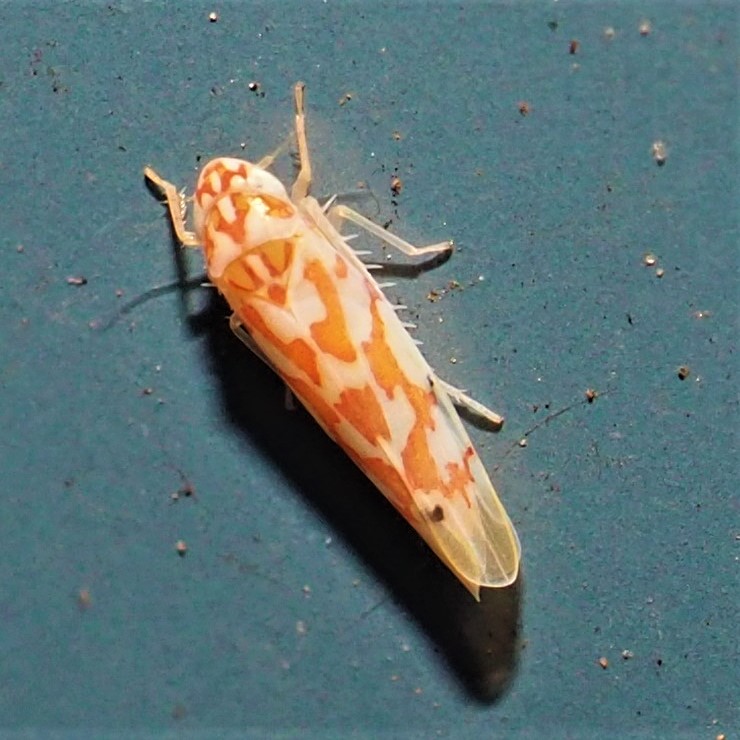
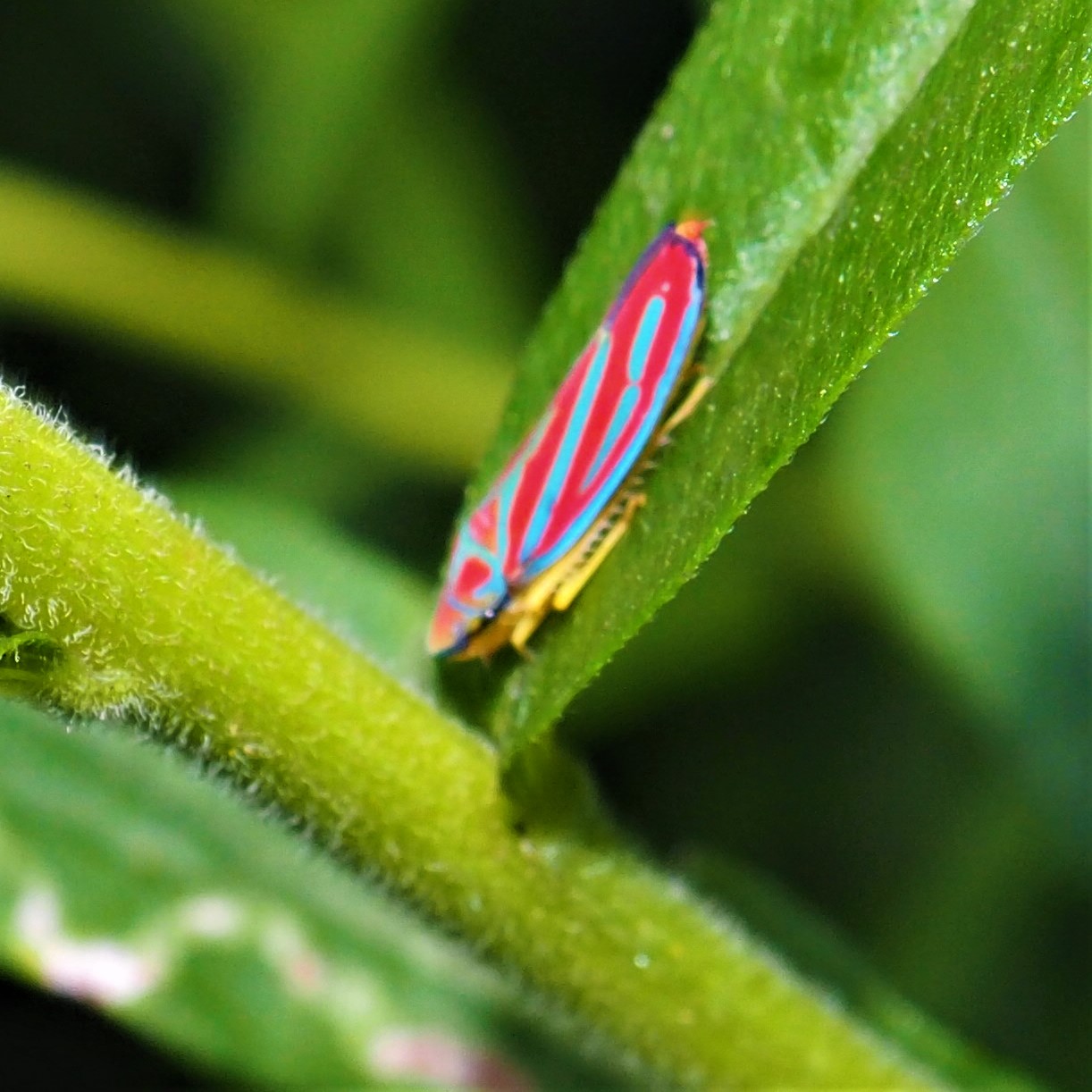
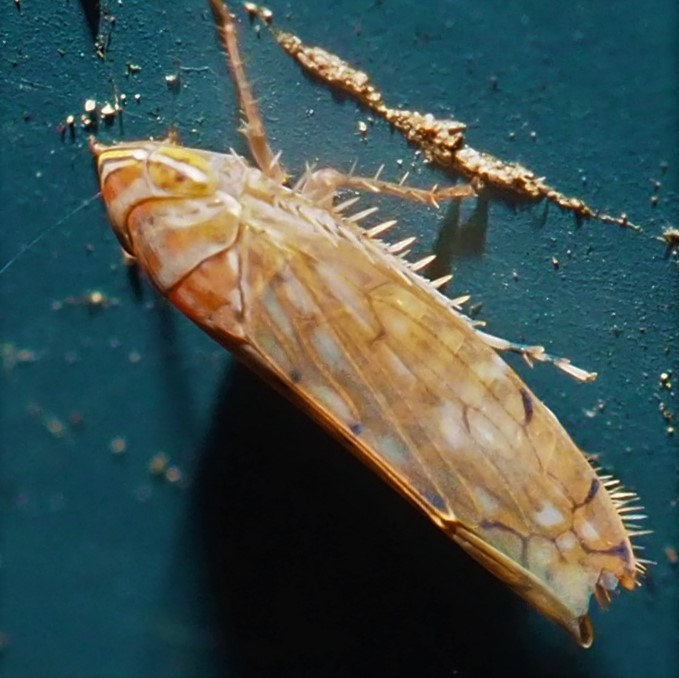
Here is one unknown Plant Bug. The next may be Drymus unus - it usually appears about the time the goldenrod is going by. Third is a kind of Stilt Bug (on account of its enormously long legs). I got one very lucky shot - this Ornate Planthopper found itself among the Barklice this week!
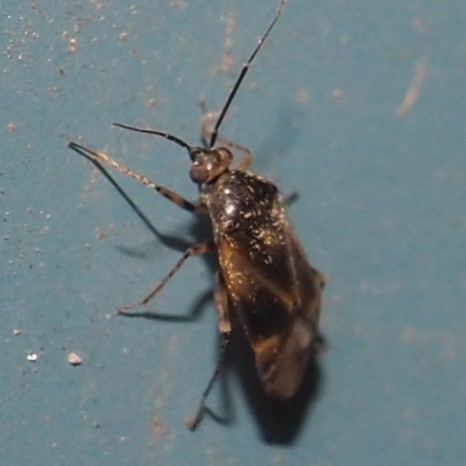
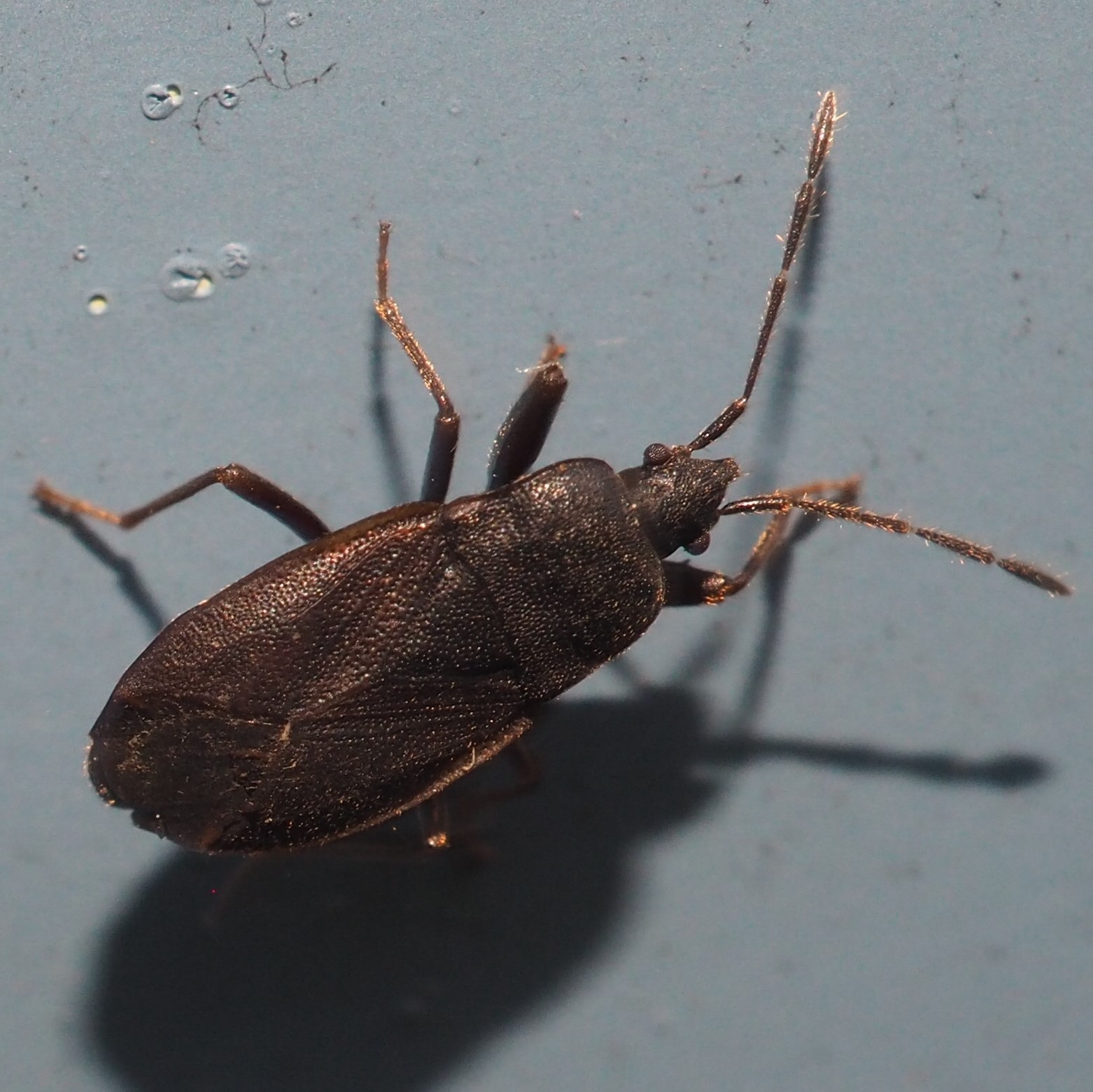
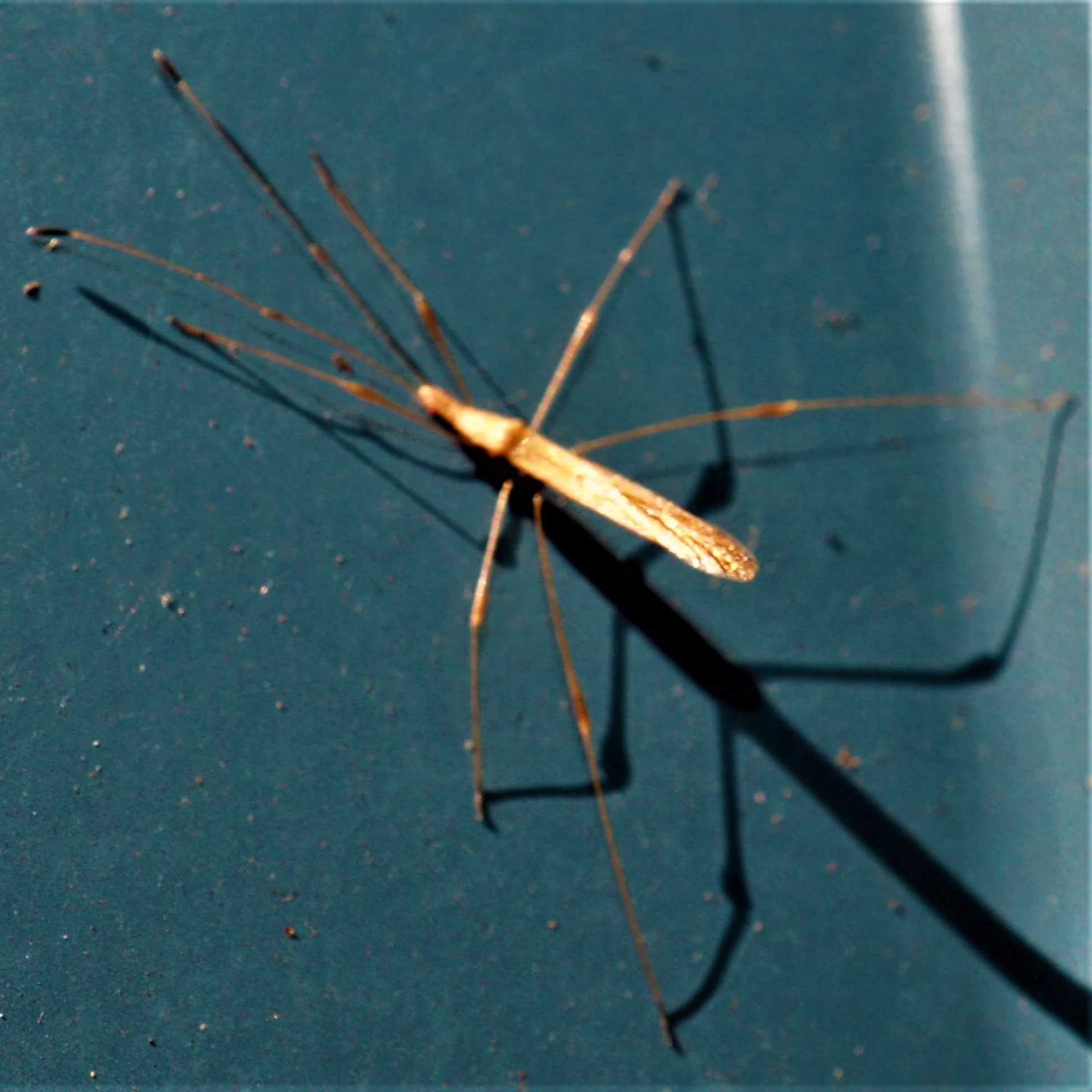
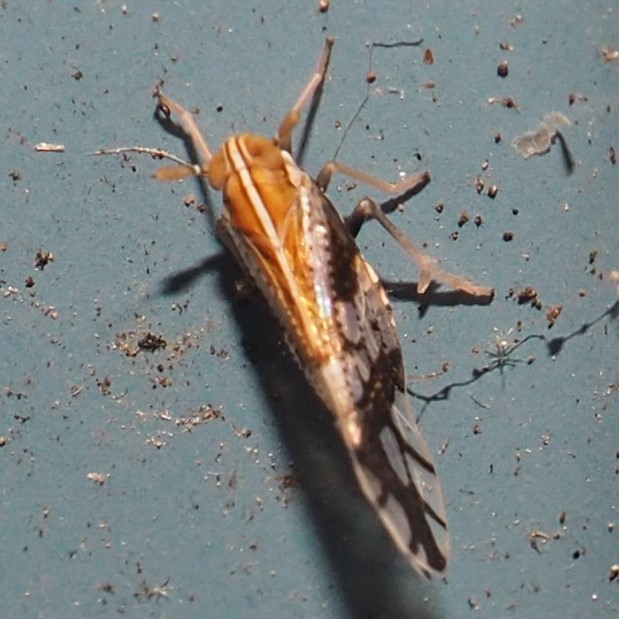
Now to the Flies. Here's a lovely Fungus Gnat, I think. The next one is either a Fungus Gnat or a Gall Midge, but note that the second seems to have been dosing on red blood. I didn't know that either would drill for blood. I have to ask someone on iNat some questions. The third is a tiny tiny Fungus Gnat that loves the Goldenrod.
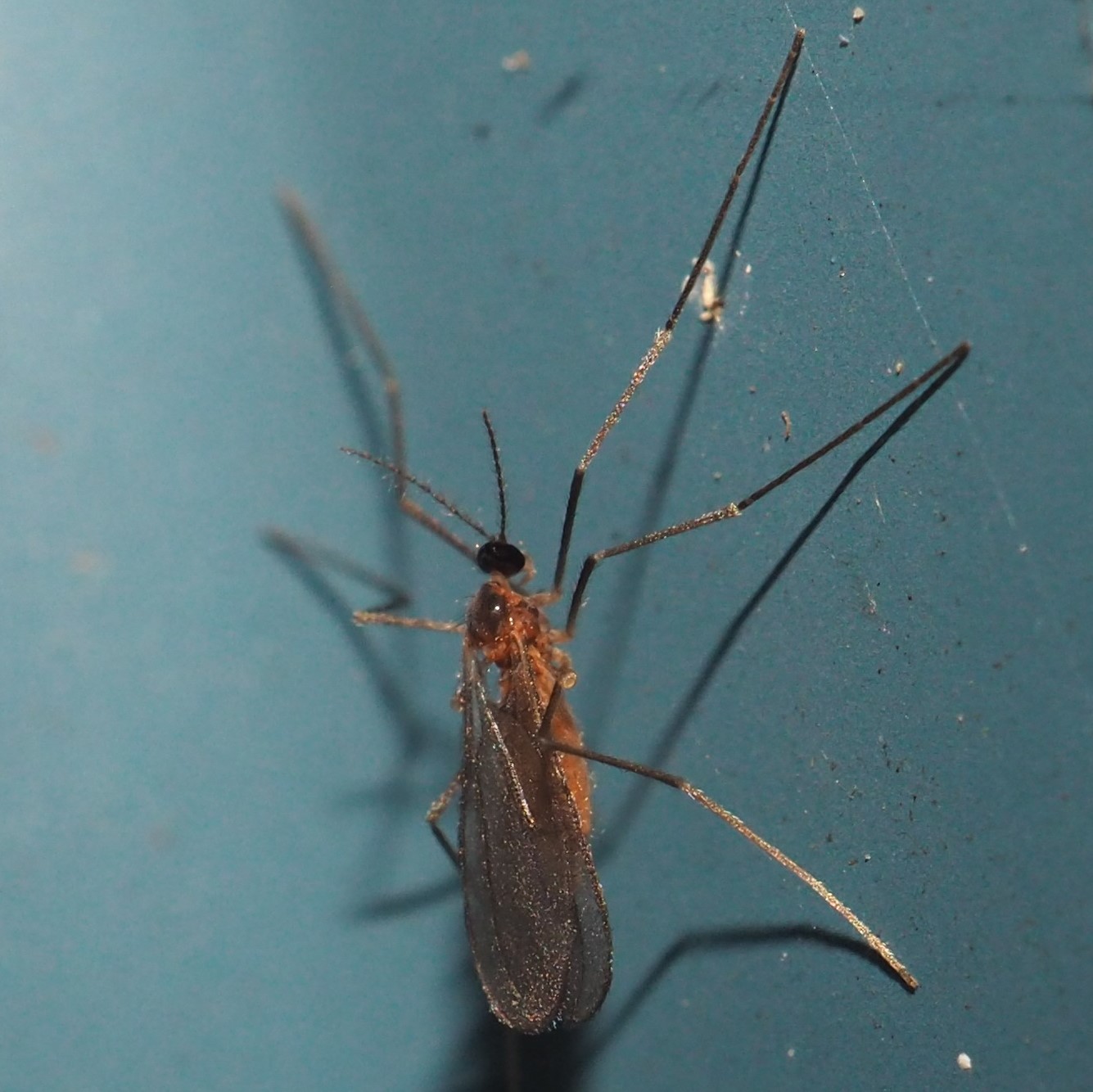

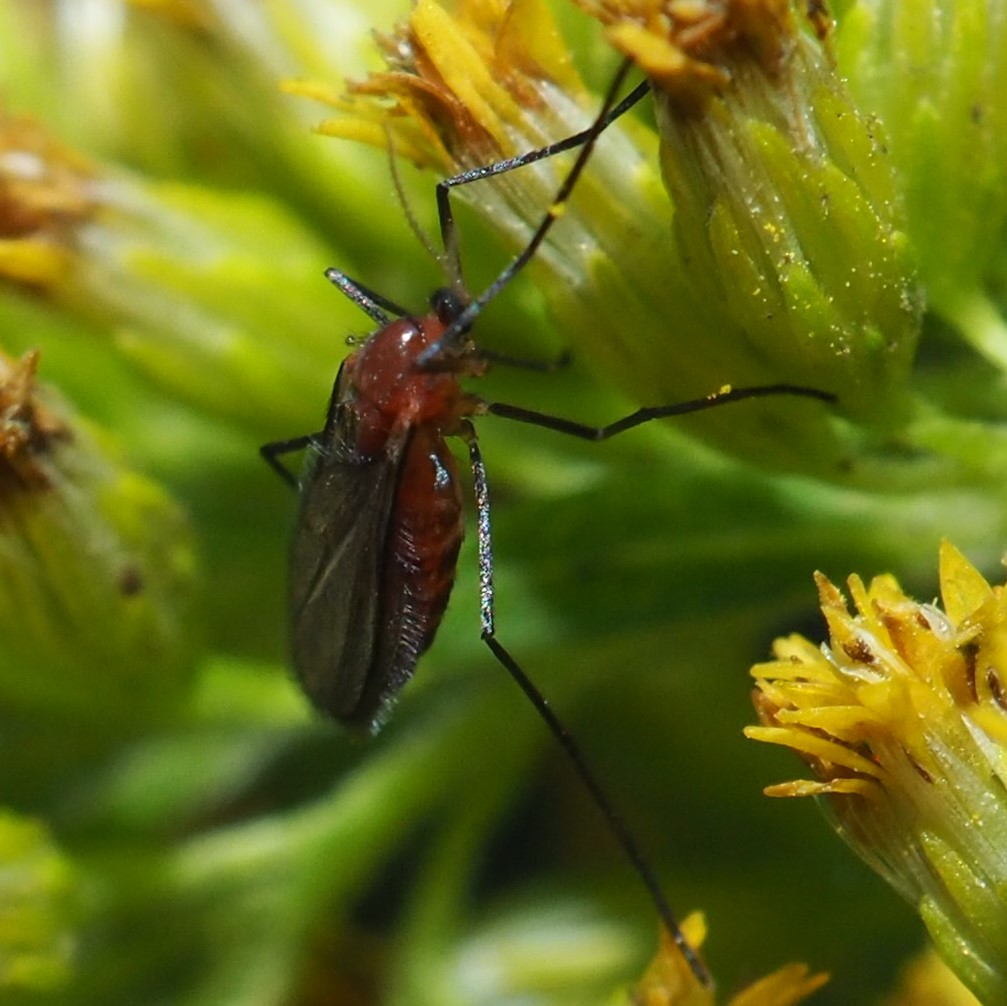
Here's a Midge with subtle coloration. Next is that beautiful but tiny Hover Fly, Toxomerus geminatus. Third is a huge Fly that didn't want me to take its picture.


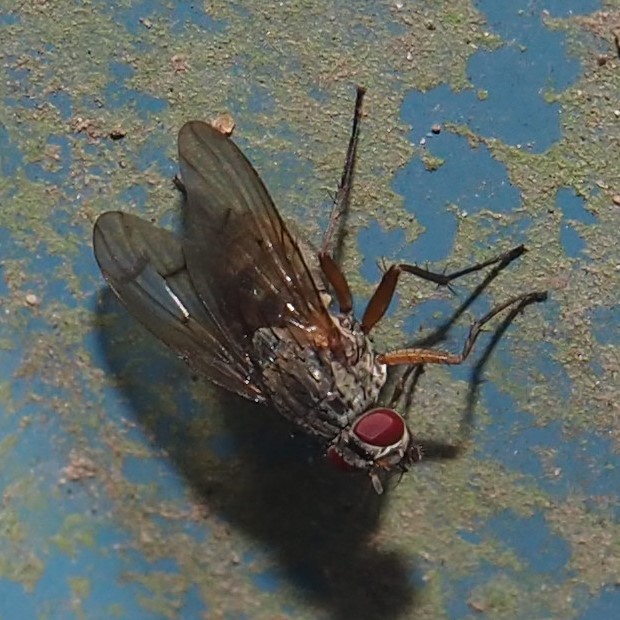
Here is most likely an Asian Bush Mosquito, which USED to be known as the Asian Rock Pool Mosquito. Next is a Bathroom Moth Fly. Third is a mystery Fly.
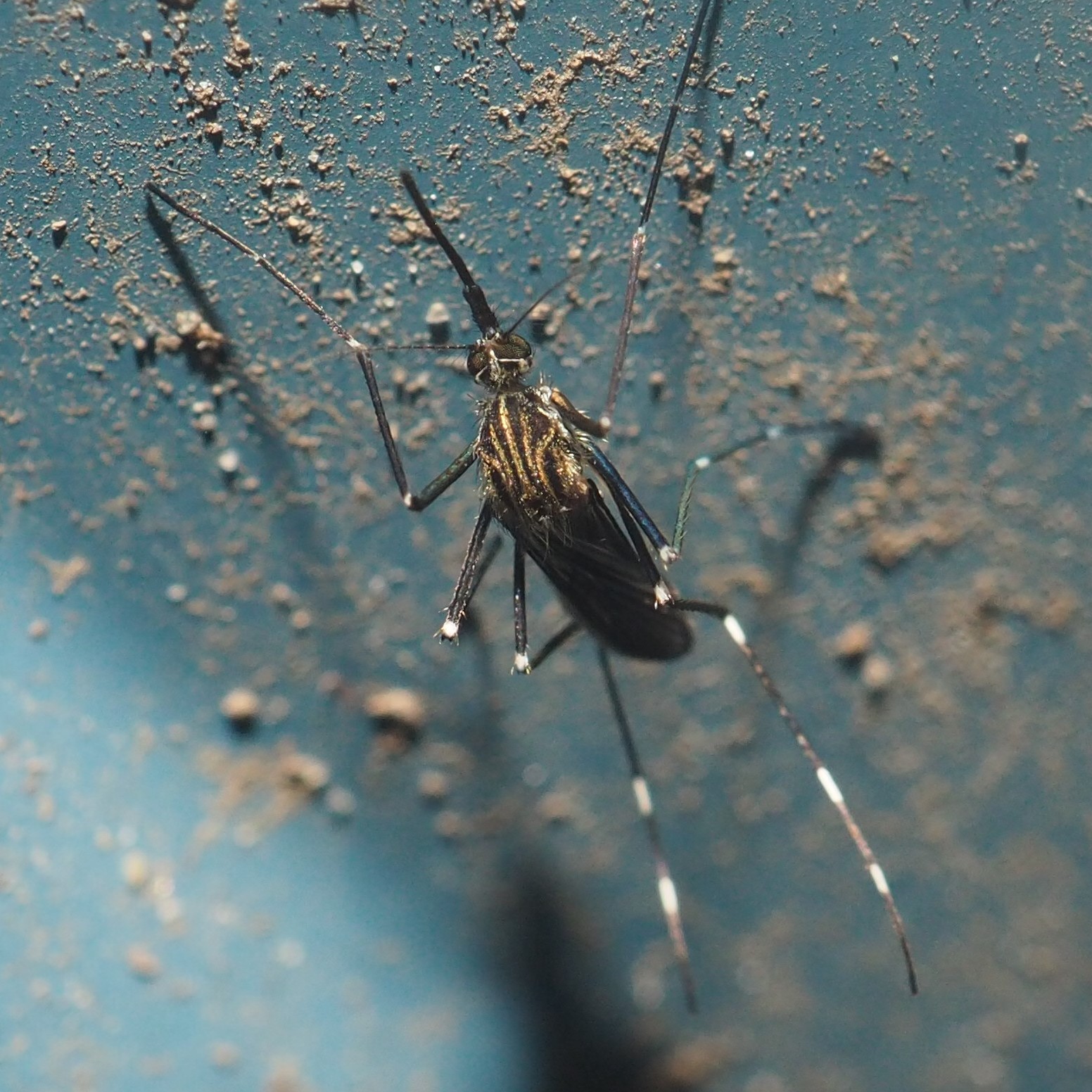
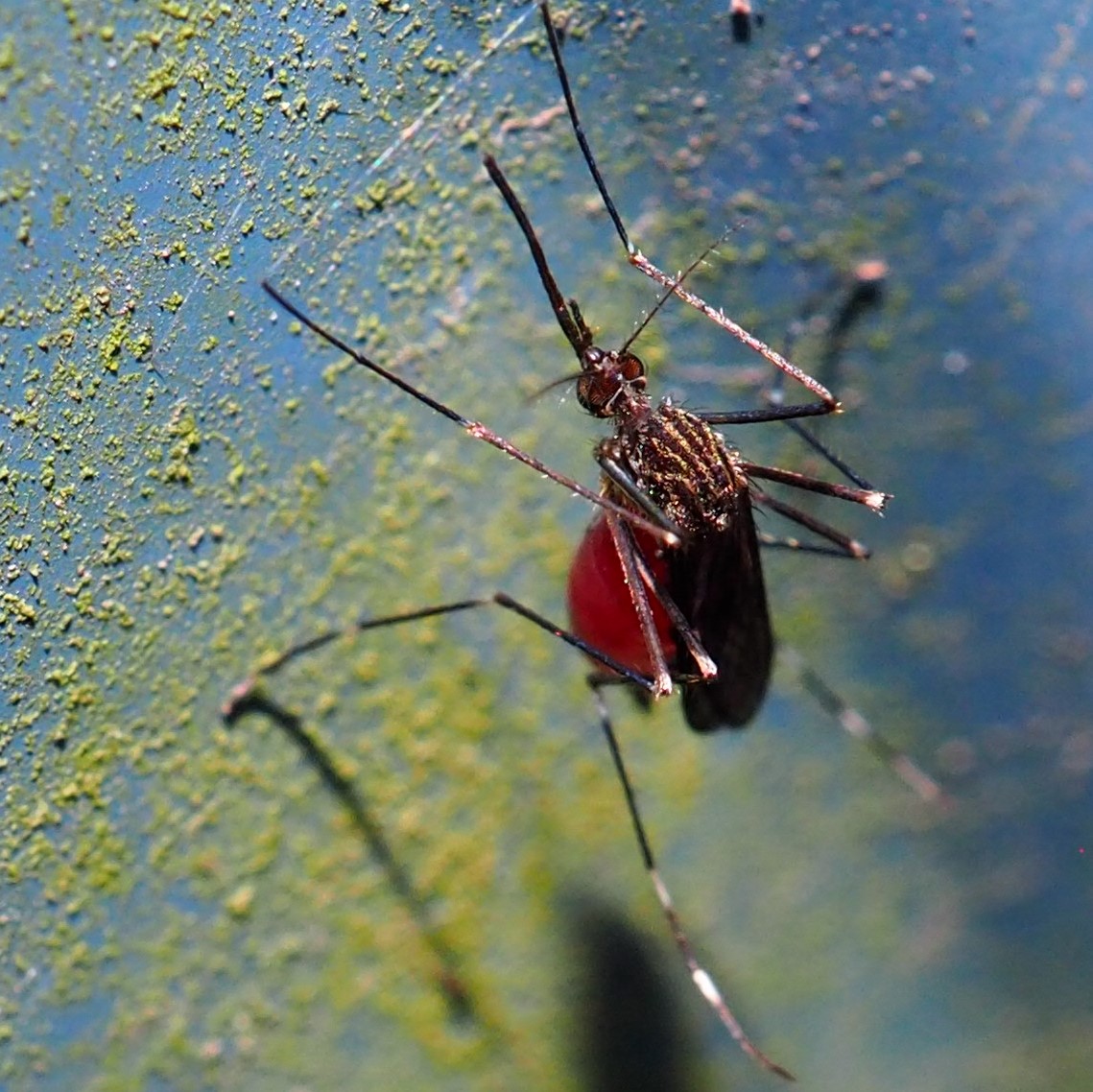
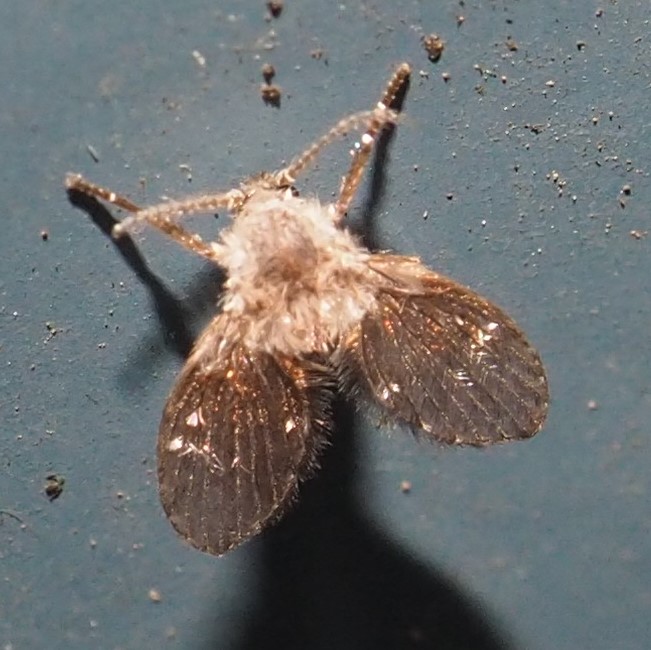
More mystery Flies...
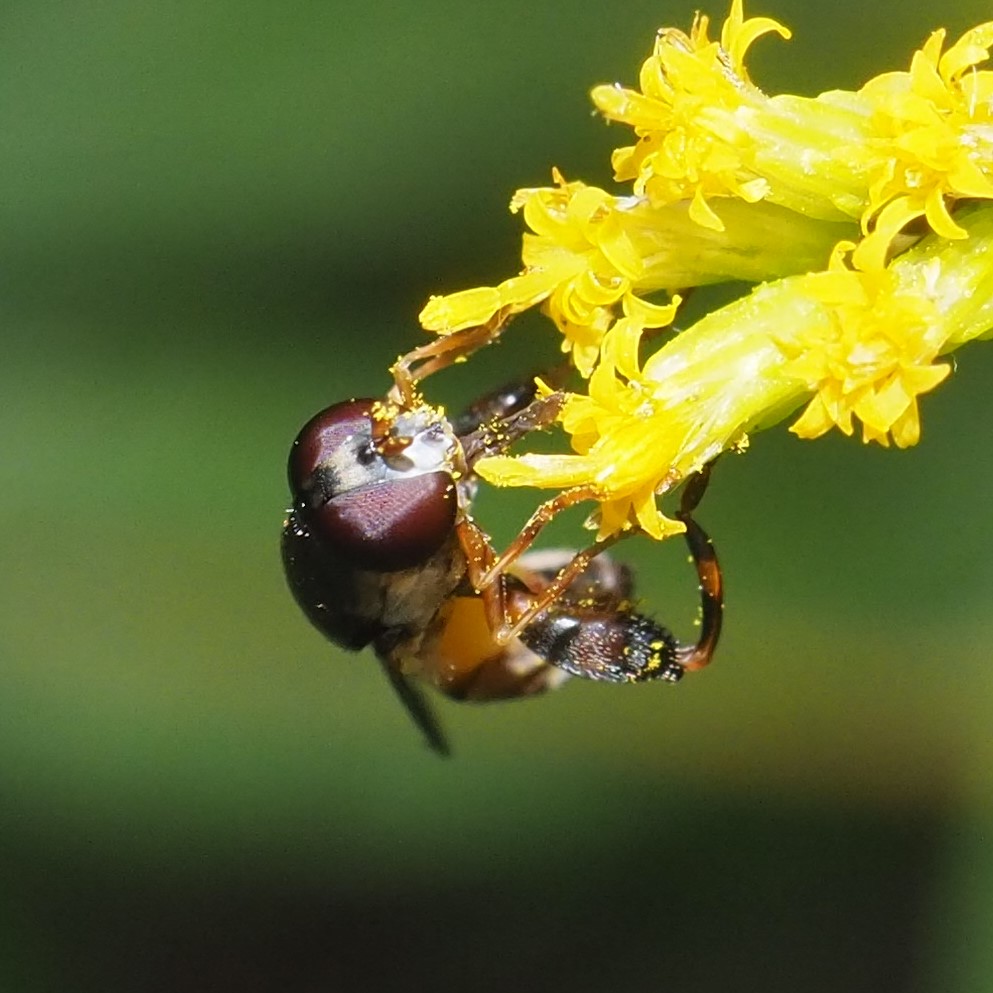
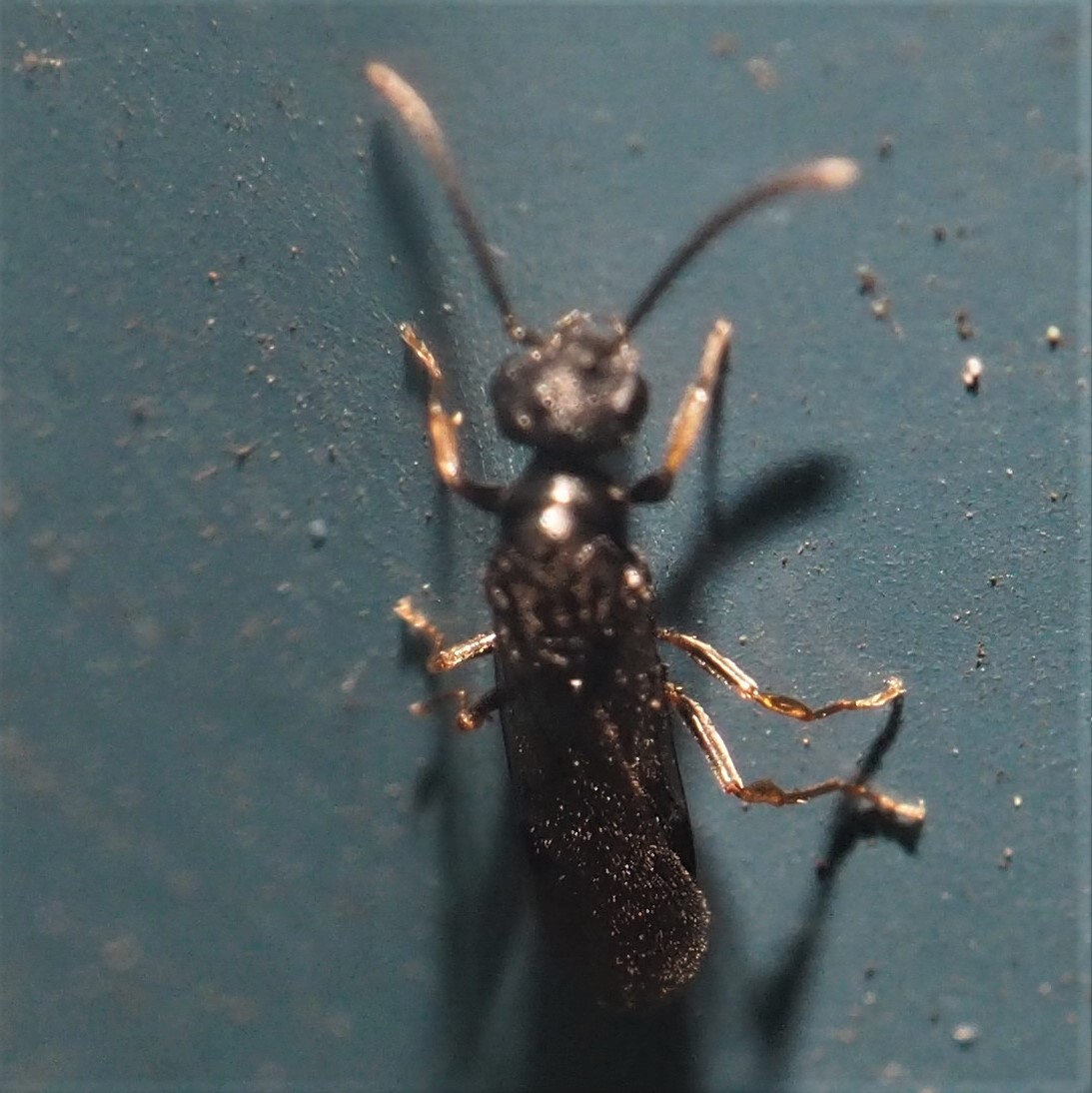
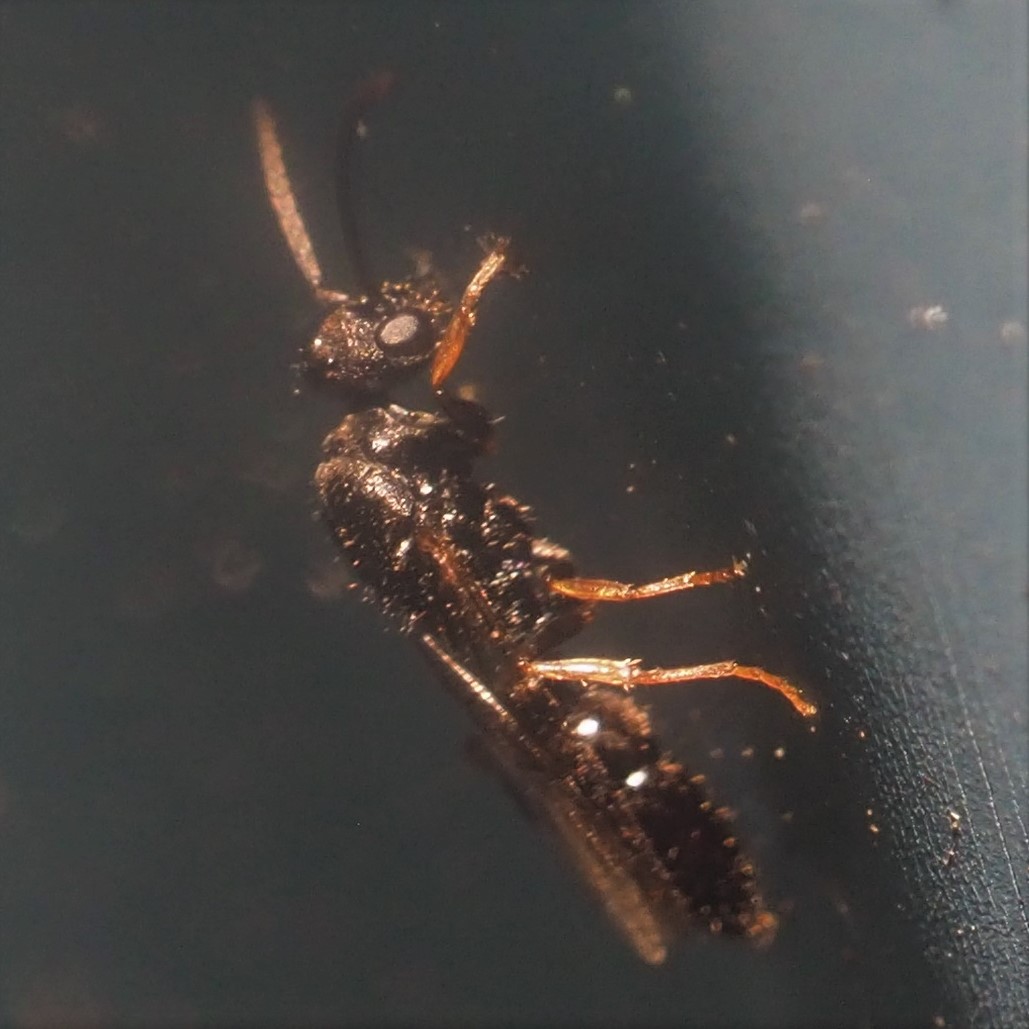
This orange Fly with the black-striped abdomen seemed strange to me. When @phorid from iNat identified it as Hirotophora multiseriata, I found that my pictures of it were the only ones in iNat. I don't know how the reviewer knew what it was, but I'm grateful for the chance to collaborate on this.
.jpg)
.jpg)
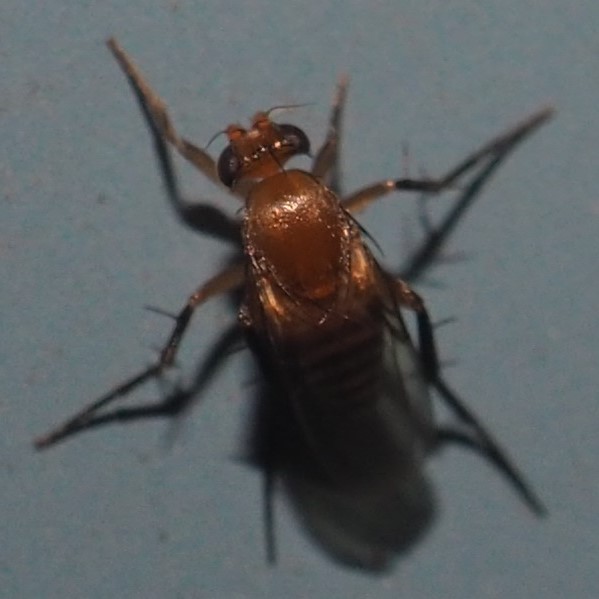
This is a Woodlouse Fly (remember a Woodlouse is another name for a Pillbug). And next is a very small Fly with gorgeous eyes.
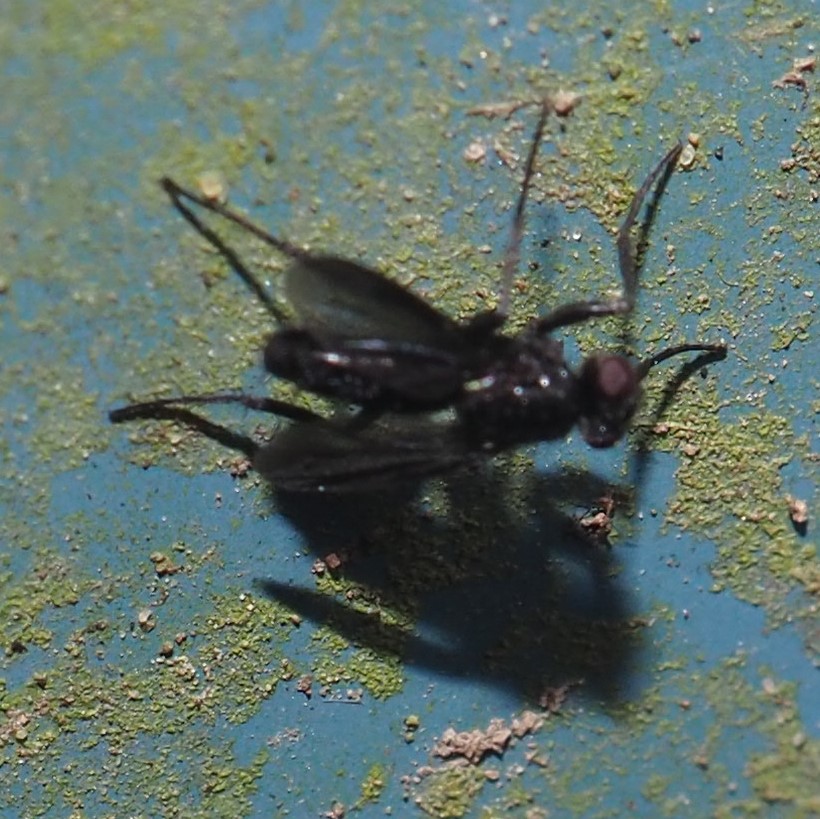

So let's go take a walk in the Flowers. The scene seems to change every minute, especially with the Asters.
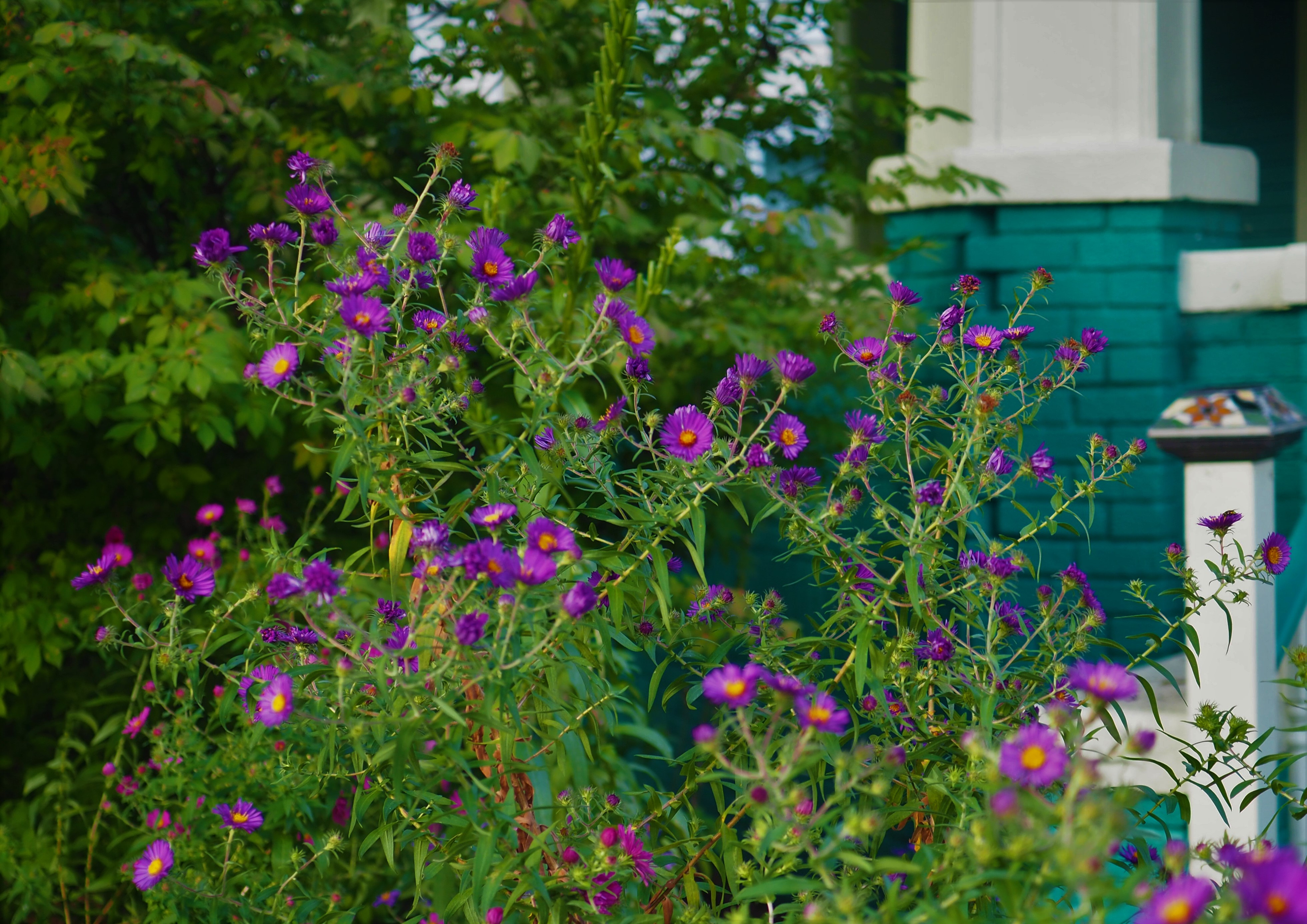
The asters are beautiful this year. In picture 3, we see a white Cabbage Butterfly on a purple Aster.
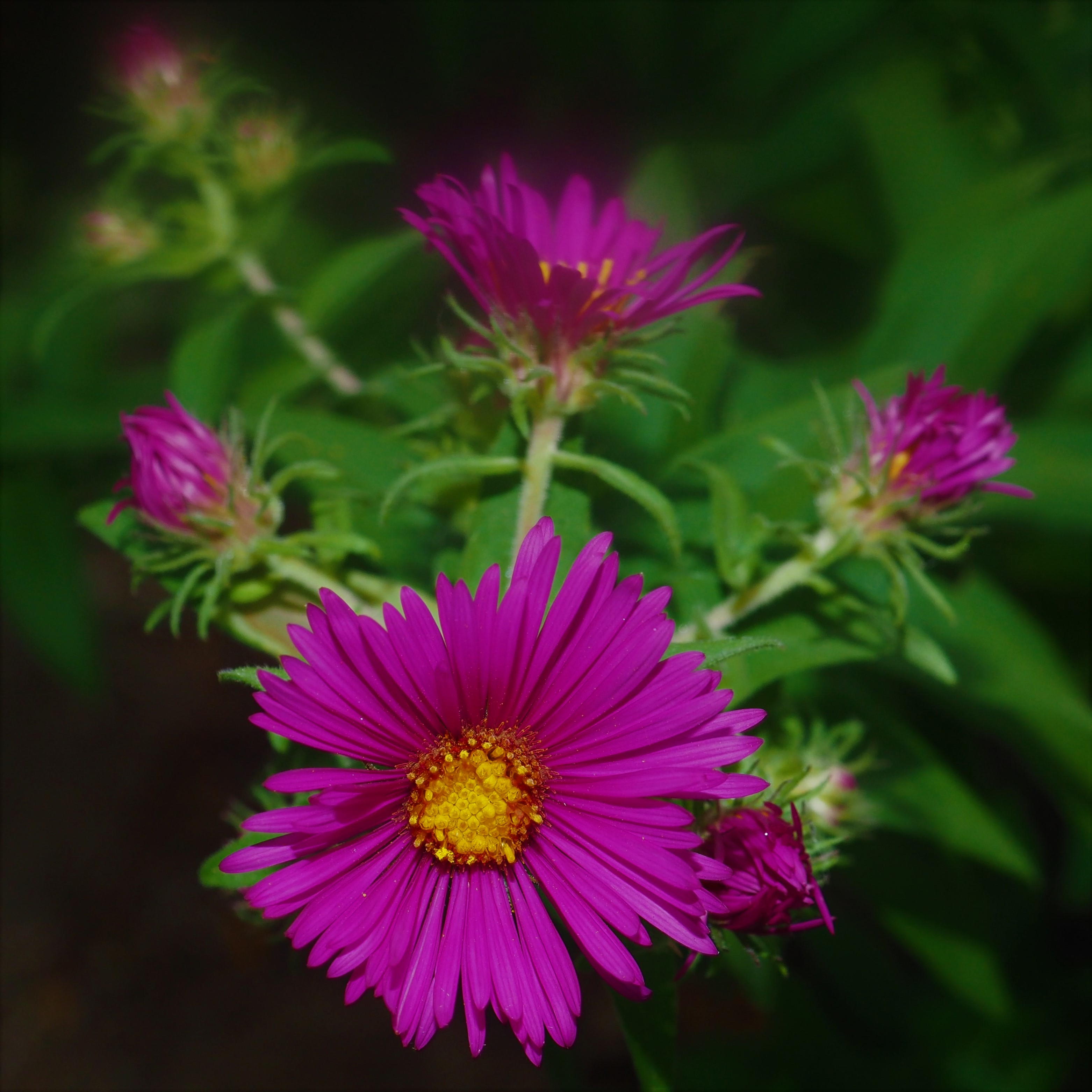

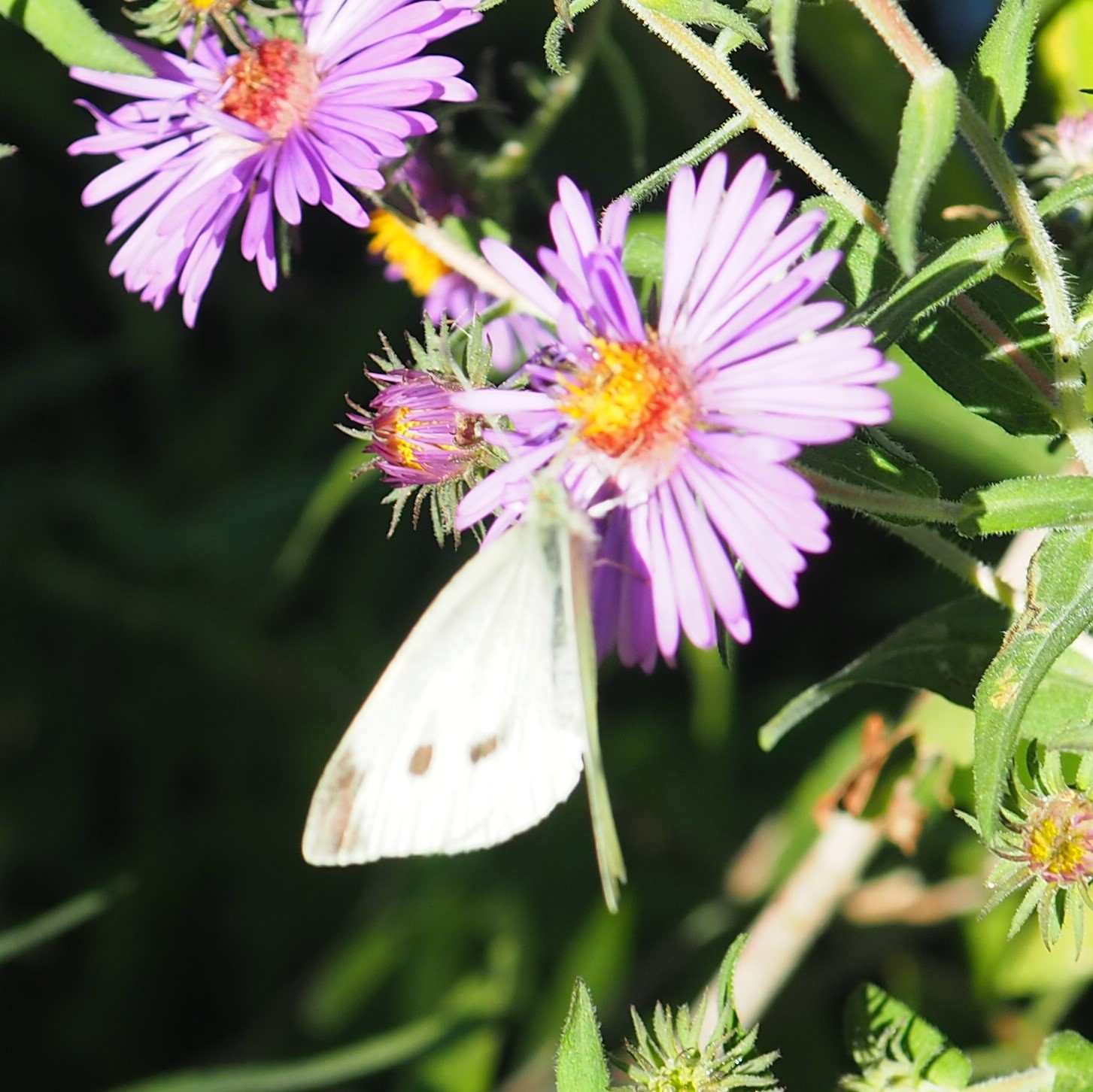
It's really Autumn. Do you remember that in the Spring the leaves of the Colchicum spring up and mostly flop on the ground, then disappear until the beginning of Fall, when the flowers finally open? This is one of the first of the flowers. The Autumn Orange Day Lilies are finishing up this very week. But this week a new Fleabane plant opened its first flowers.
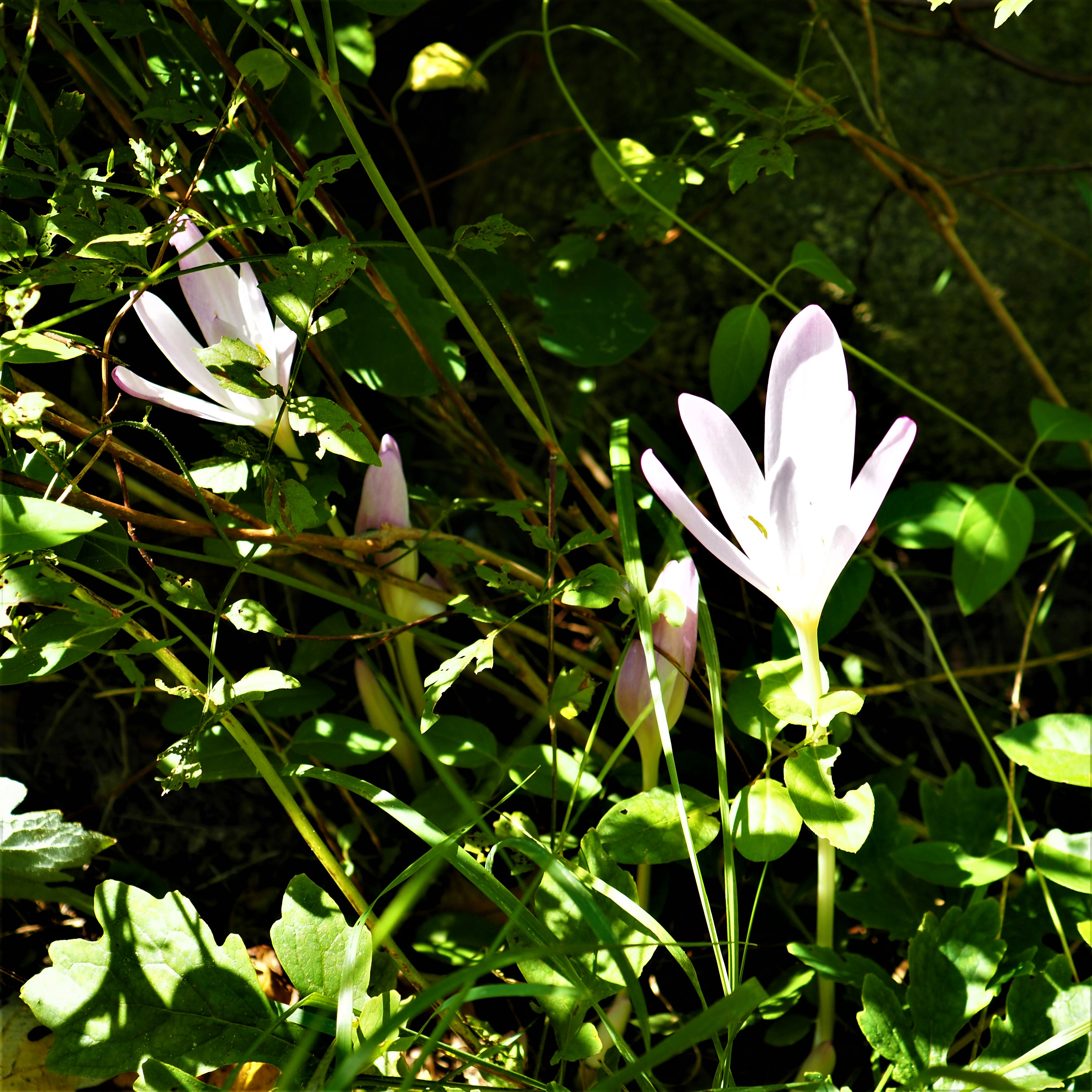


Kathleen Seidl has a glorious garden. This week her blue Morning Glories and Coneflowers bloomed together. Here the cultivated Fall Phlox (seen here) and the more native ones bloomed together. Unfortunately most of the native Fall Phlox had a bunch of ladders sitting on it for a few days (getting roofed means allowing for some slop). The Water Lilies that I planted early this summer to replace the ones that got trashed when the pond was redug are still not flowering, but here are the pads which have grown slowly over the summer. If you click once or twice into the little water lettuce in this scene, you may see Frog number 3 that we met last week.
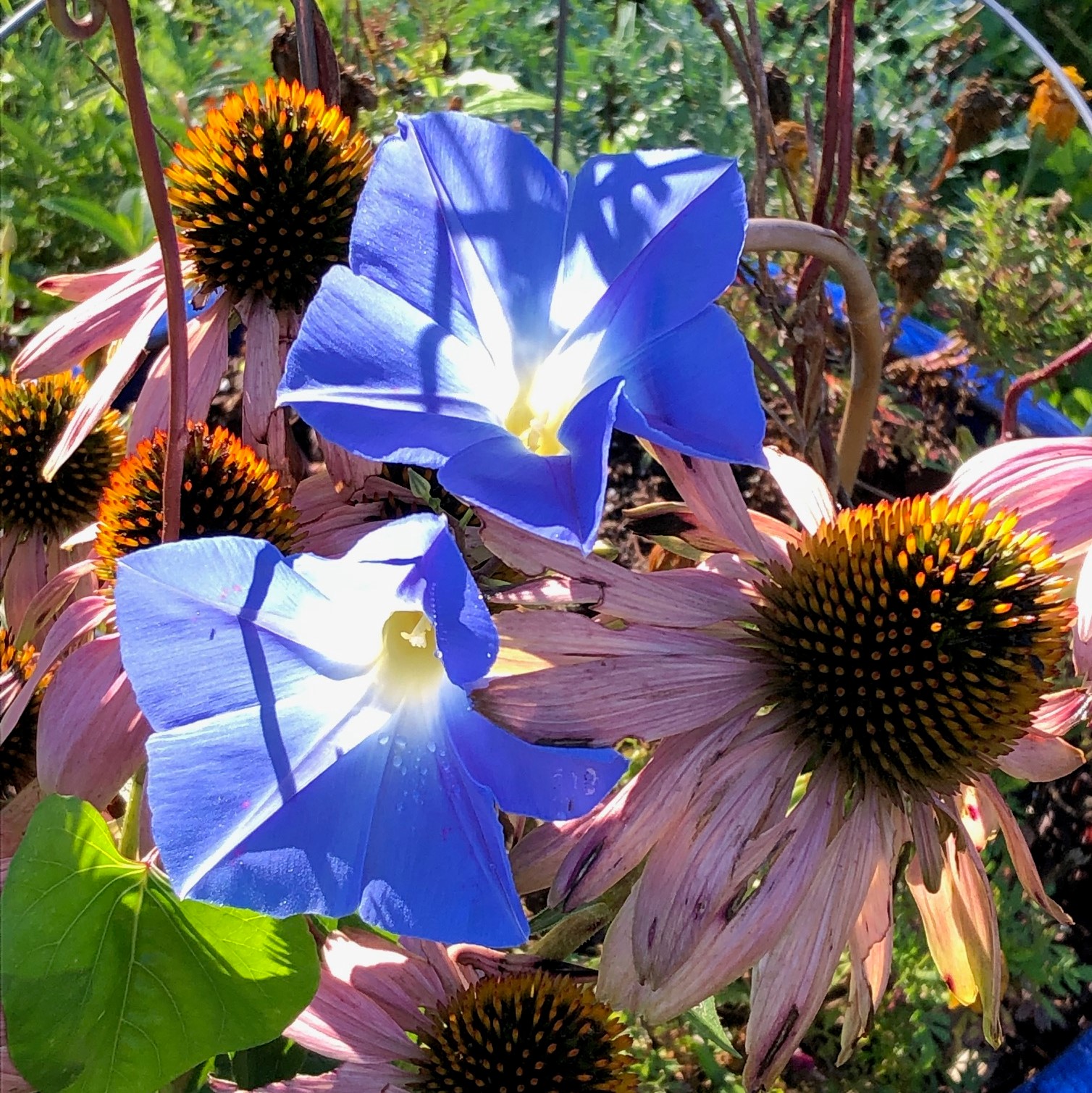

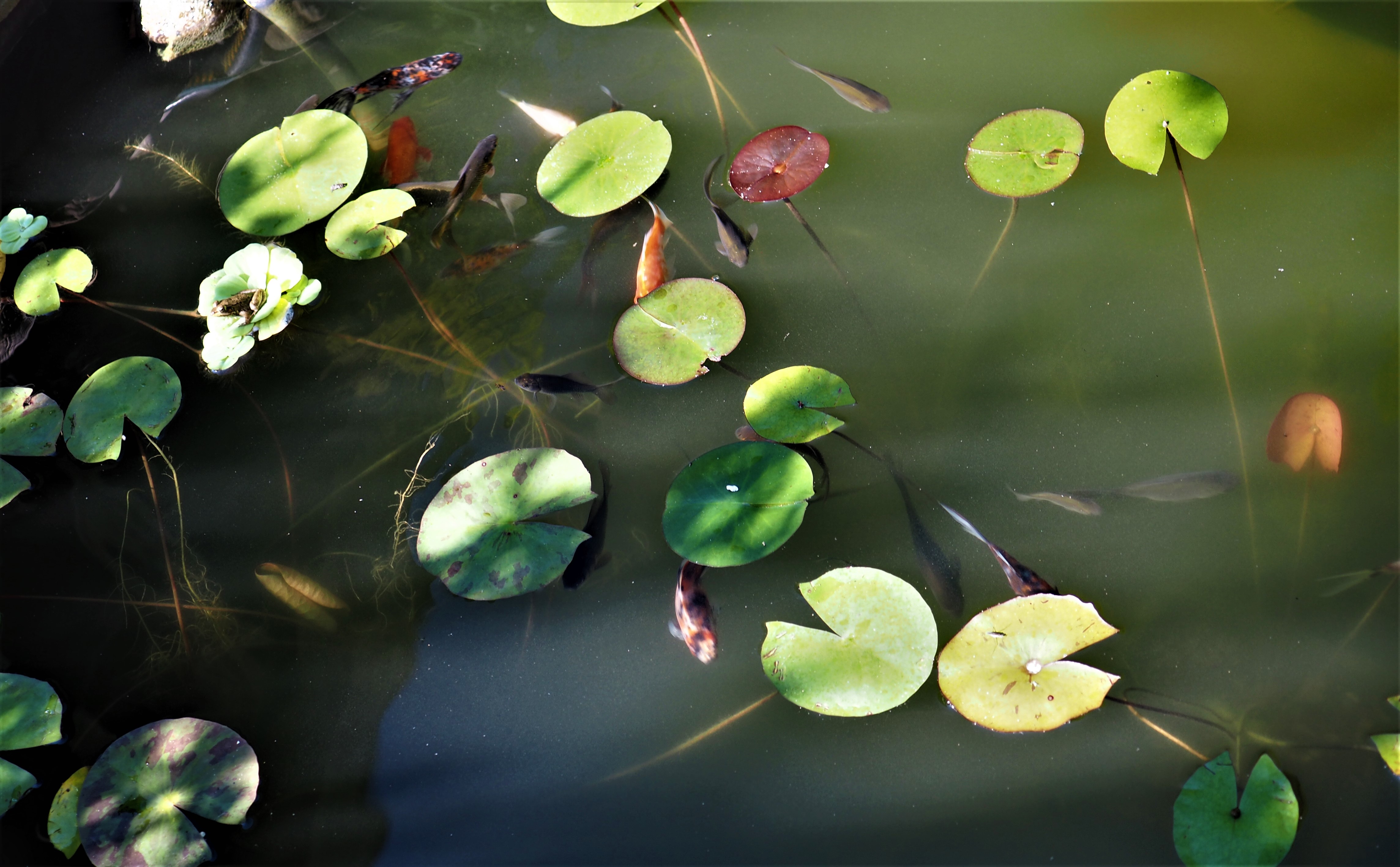
Since we have now sneakily introduced life in the Pond, which does seem to have a life of its own, let's talk about it. Last week we realized that there were THREE Frogs. I named them by their size. Frog One is the largest and so on. Two of them seem to like each other's company, since we often see them sitting side by side. Here are Frogs One and Two sitting on that strange Frog Escape Mechanism. By the way, they really use it to get themselves to the top of the piles of stones that form the edge of the Pond! Next is Frog Three, the youngest of the Frogs we know about. You can see that its lip is still yellow, whereas the other Frogs' lips are green. By the way, go back to the picture of the first two Frogs. Look at the eardrum, which is behind the eye. In Frog One, the tympanum (eardrum) has gotten to be bigger than the eye. This differentiates the boys from the girls. In an adult male Green Frog (the species, not the color), the tympanum is larger than the eye, but that of a female will stay smaller than the eye. In the case of Frog One, we already guessed that he was a boy because he was heard speaking. One day, in fact, he had been chatting a bit. I repeated his favorite word (sounds something like gaLUMP) several times. At first he just stared at me, but after a bit he actually took a few steps towards me. Chaim said, "You're a Frog Whisperer."
Actually I think F3 replies to Chaim's voice even more than mine! Surprise: Picture 3 shows something that showed up in a picture I took of the water spout. It may be Frog Four!
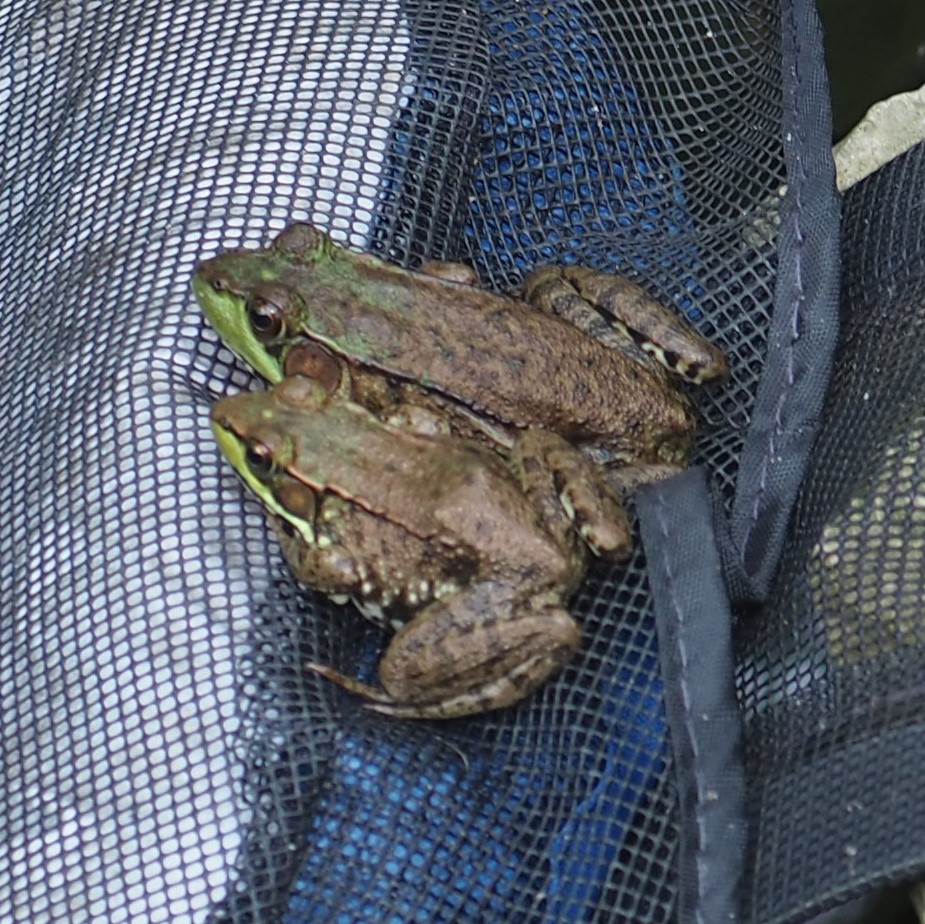
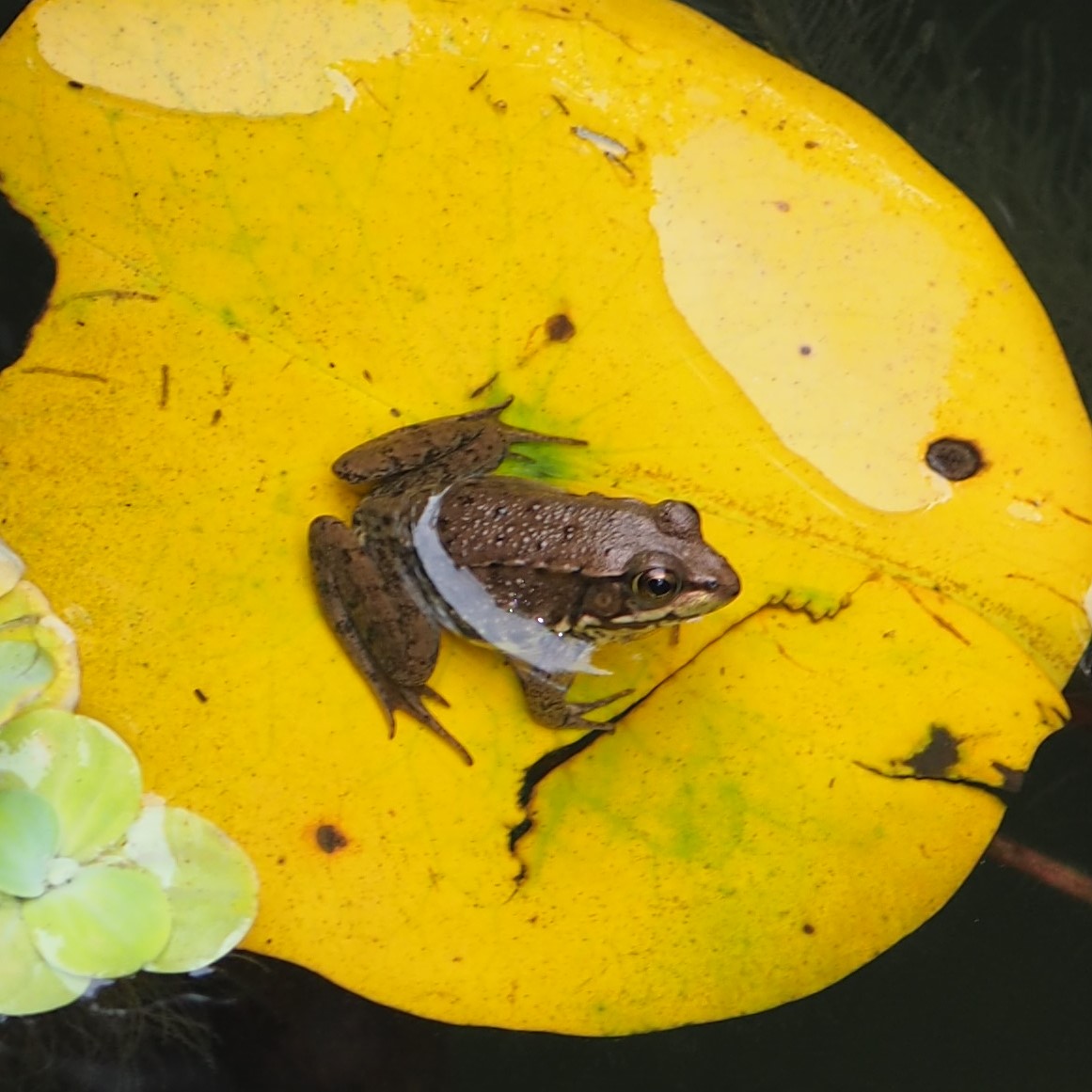
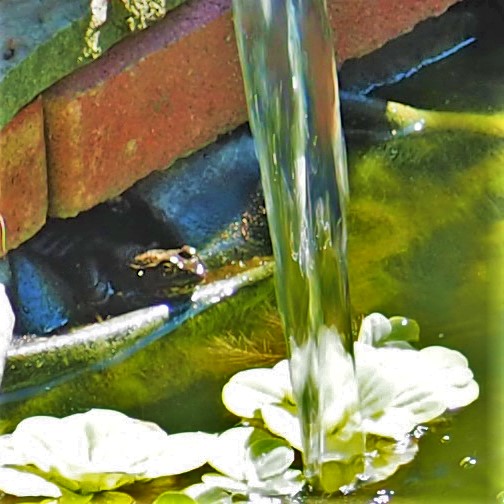
I love photographing the Fishes as they swim together. They seem to know how to pose for me! In picture 2, one of the larger Frogs watches as the Fishes race past him.
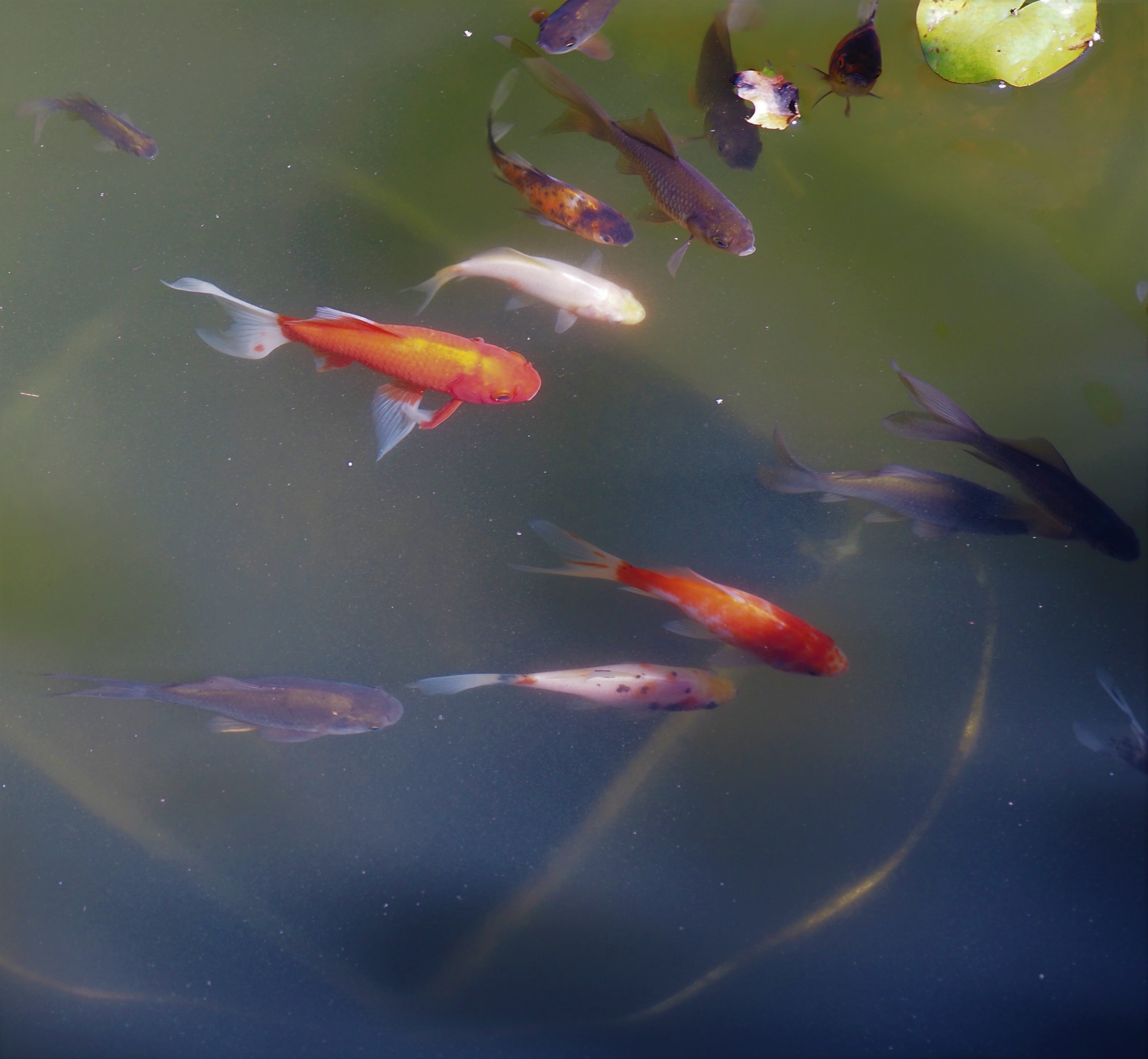
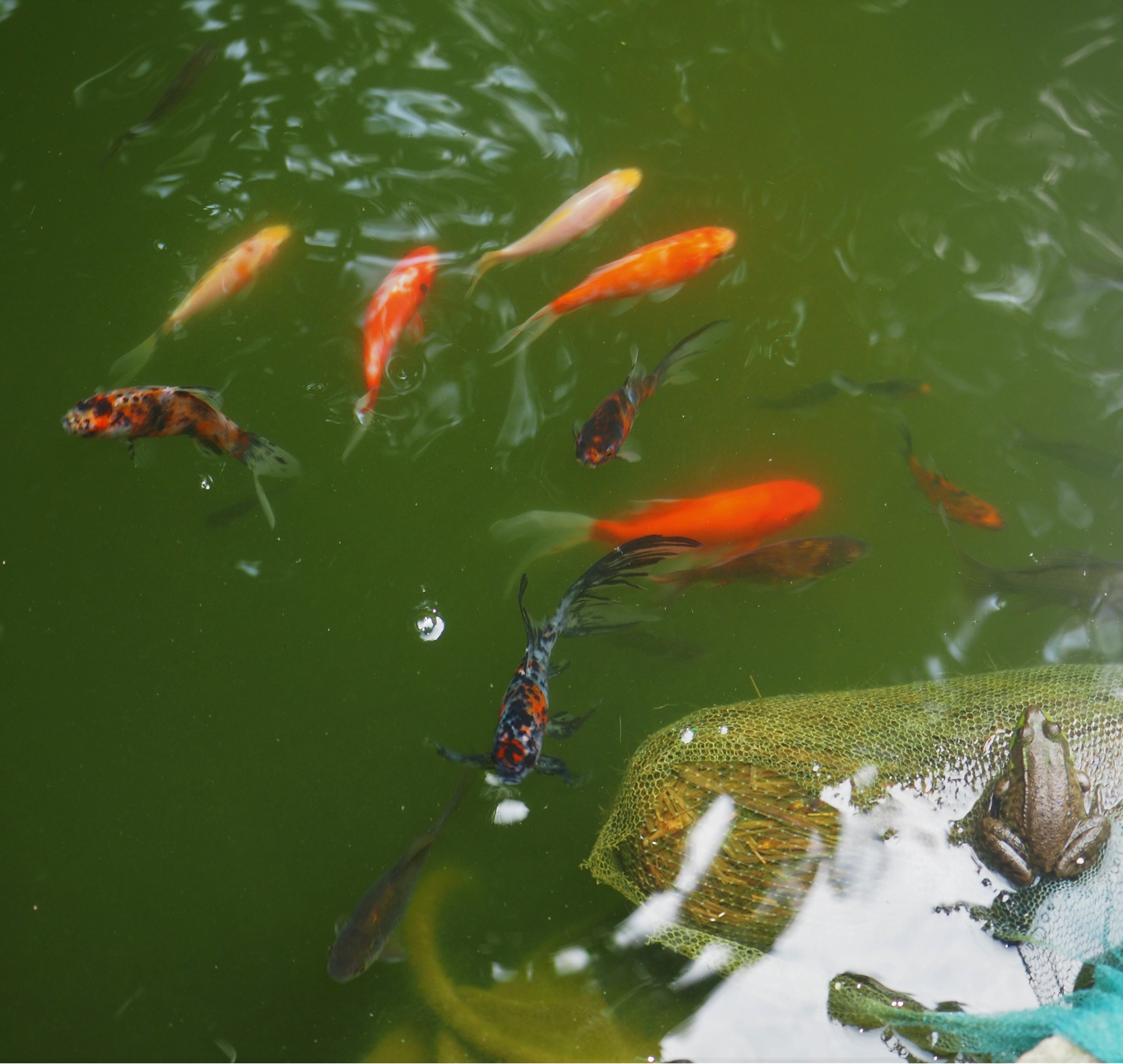
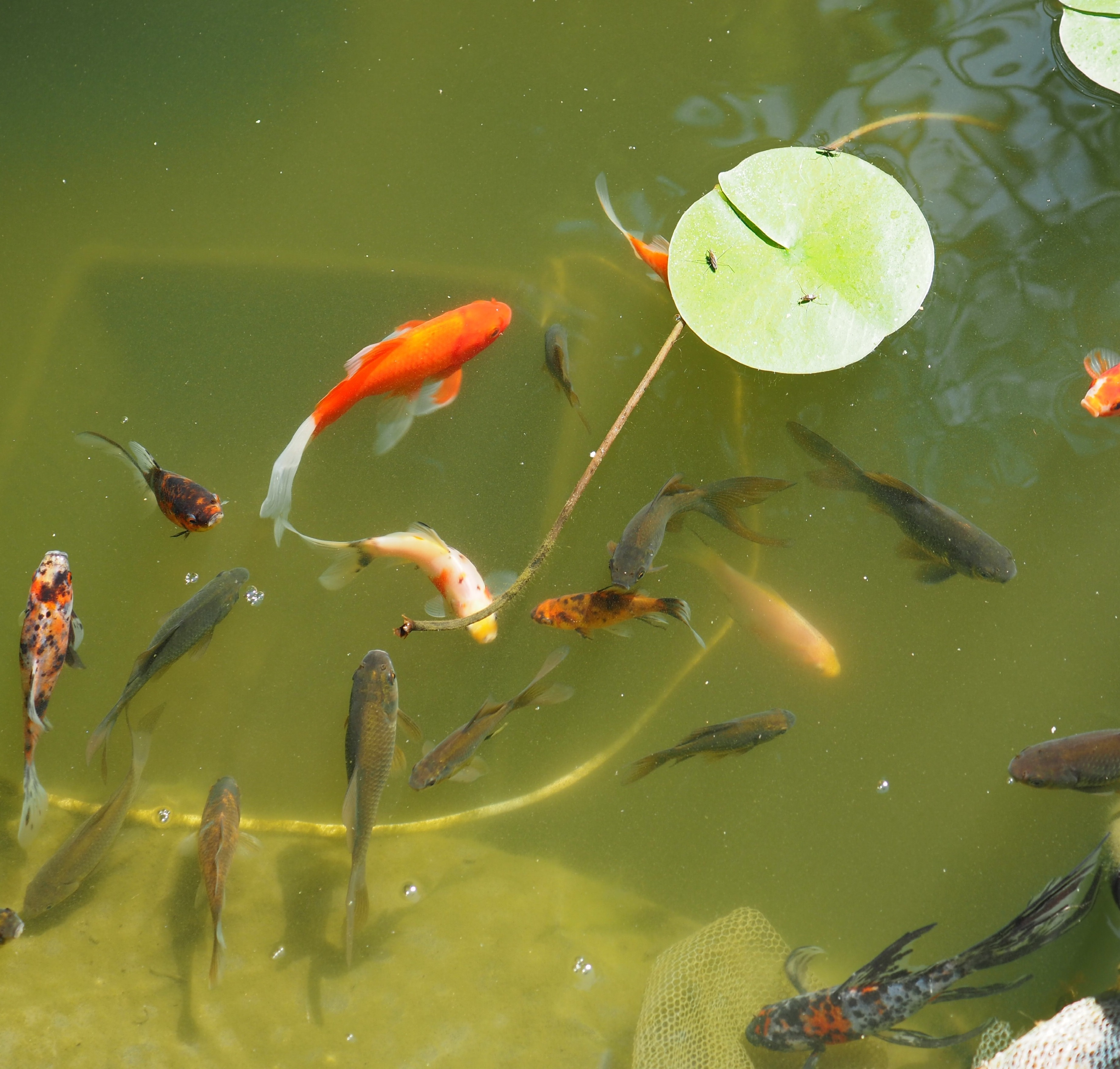
Let's see what the Spiders have been up to. I'll give you one hint - they are extremely hungry these days!
And the Common House Spiders are more and more common!
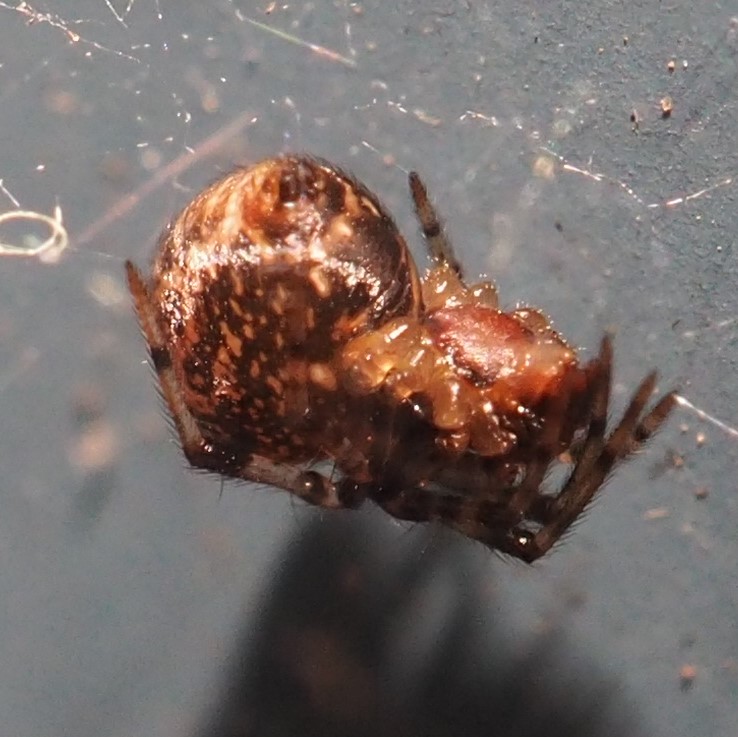
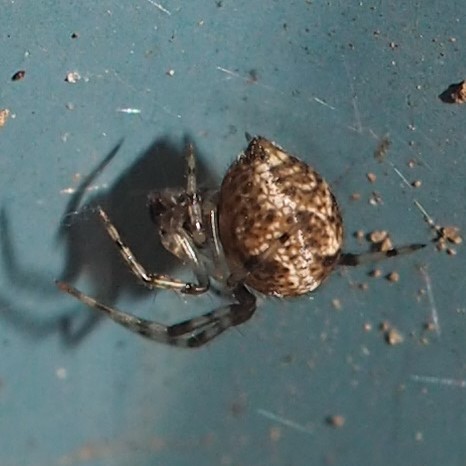
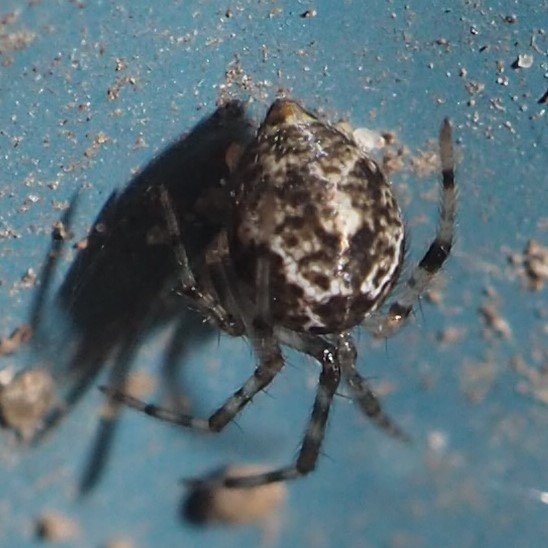
I've been watching those "cute" (only their mother should say that, but I do have a motherly interest in them because of the way they develop) little Common Pirate Spiders (Mimetus puritanus). Yesterday there were three, maybe four of them. One, on the South Wall, is the oldest by a few days. Here he/she is on the 15th, then the 17th, and finally 18th.
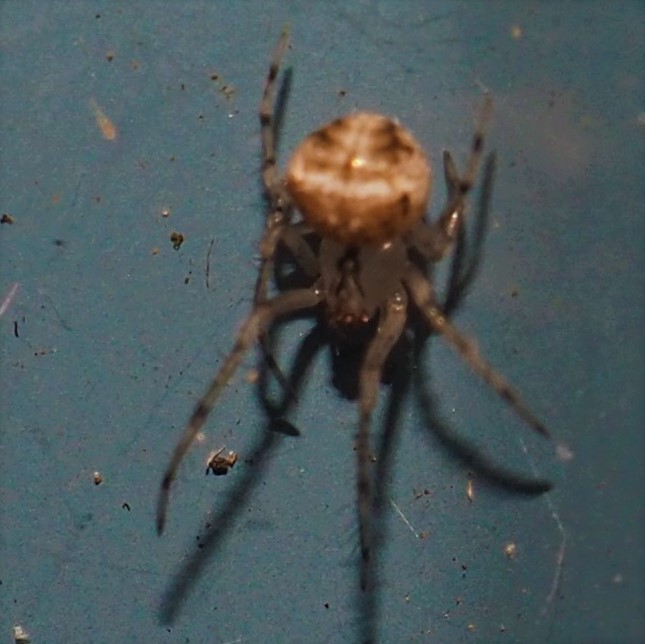
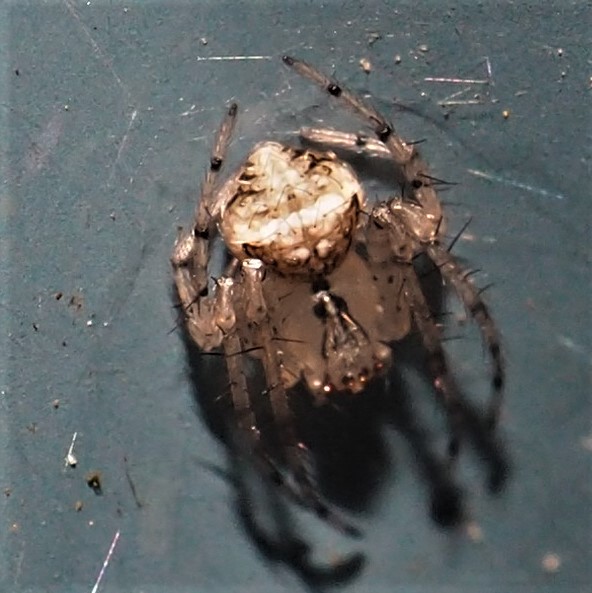
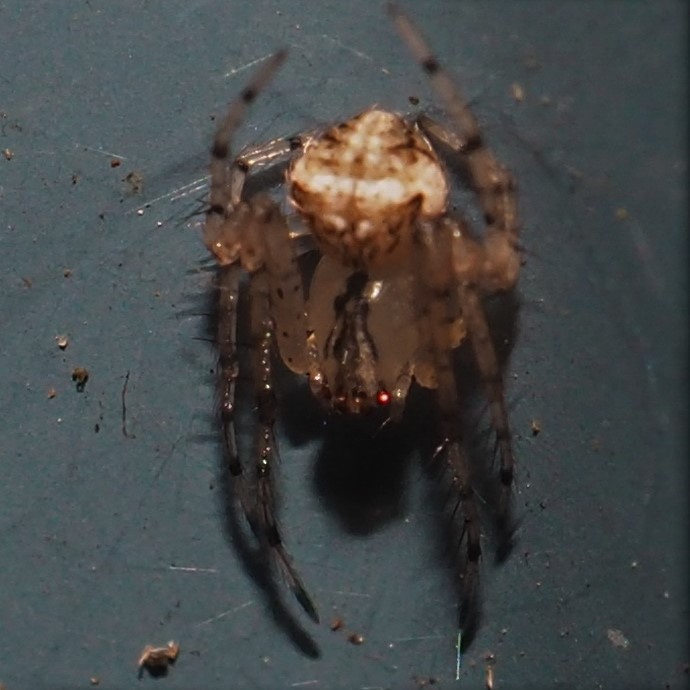
Now walk past the East Wall, and look at the first panel of the North Wall. Here is Spider A on the 17th. Next is Spider B a few panels to the west of Spider A. Spider B is in more light, since Spider A is almost directly underneath a big Blue Spruce Tree.
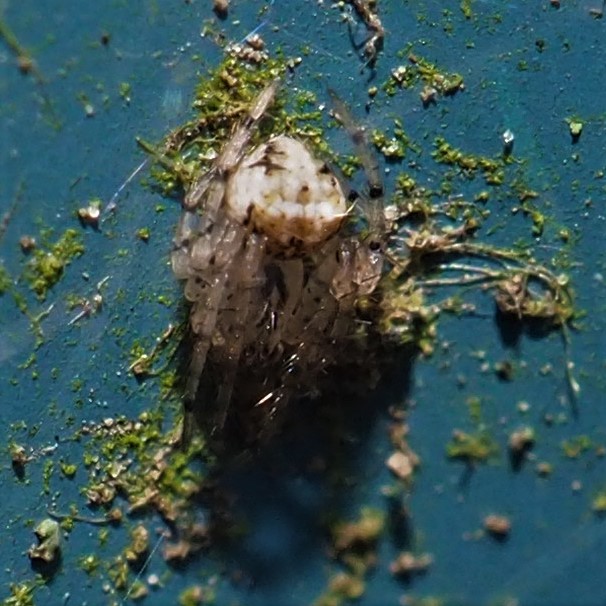
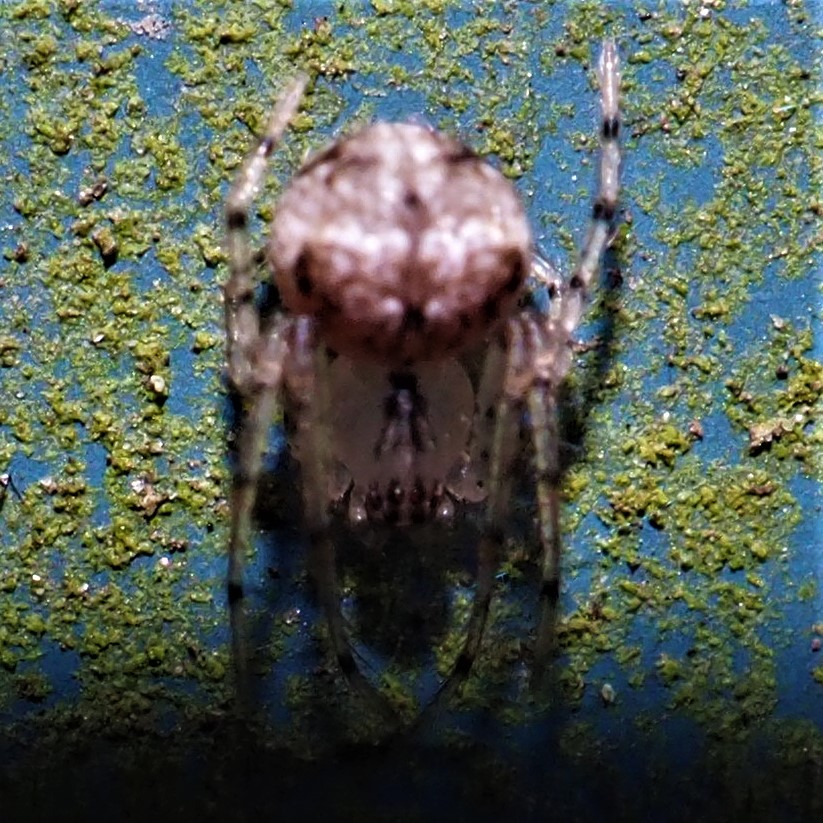
Here is a pretty little pink Spider with some kind of (black) prey on the 15th. Second seems to be a tiny Cobweb Spider trying to maneuver a huge Prey item, maybe a big Fly of some sort. The third picture is a bit fuzzy - but it shows possibly a small Common House Spider trying to wrestle a Graphopsocus Barklouse adult.
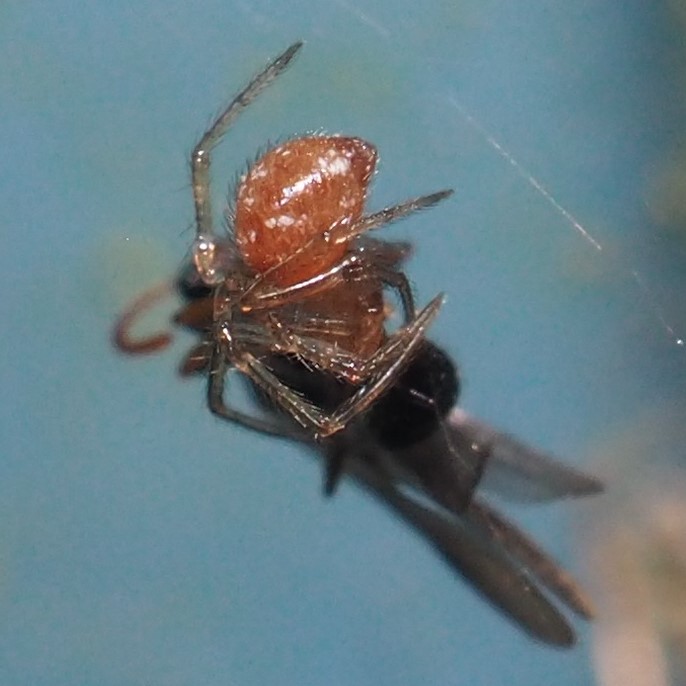
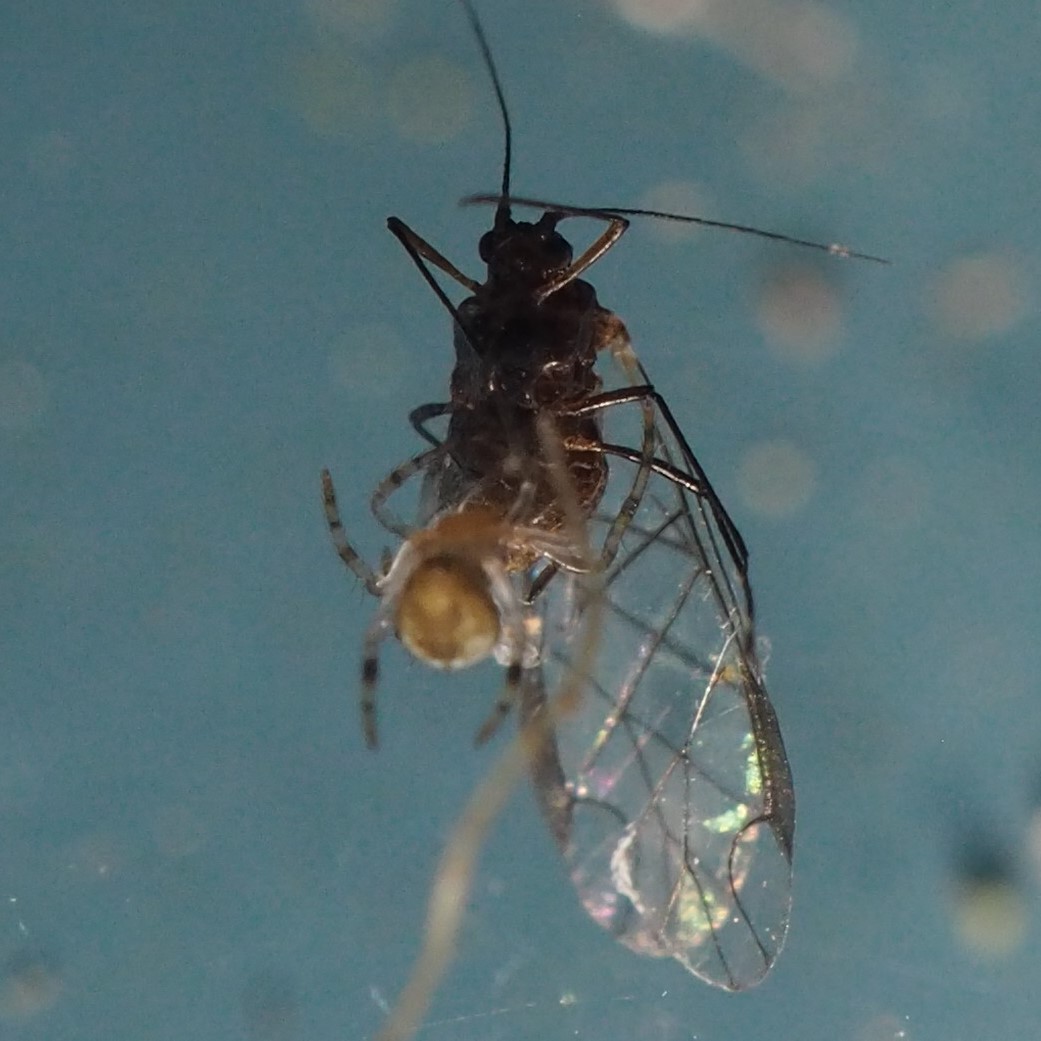
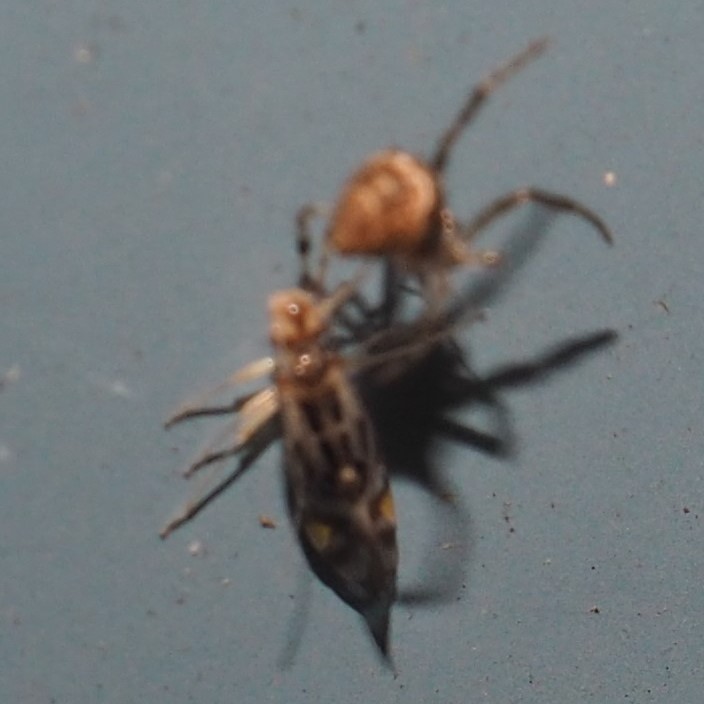
We also saw a few Jumping Spiders, but I'm willing to bet they are all our favorite friend, Naphrys pulex (the "Flea Jumping Spider". Here is the best picture I got on September 12. We can fill in this space by showing some of the non-spider, non-anything else common creatures. So second is a Scorpionfly, which is neither a Scorpion nor a Fly. (Sort of like the Holy Roman Empire.) Third is a Polyxenus. They always seem to be found near Pillbugs.
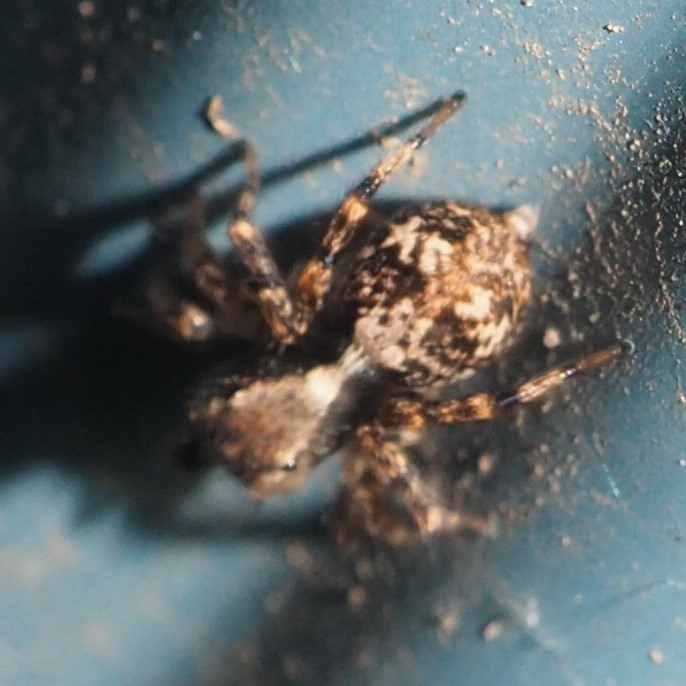


A few lovely little wasps. These are among the Encyrtid Wasps, a bunch of colorful tiny creatures.
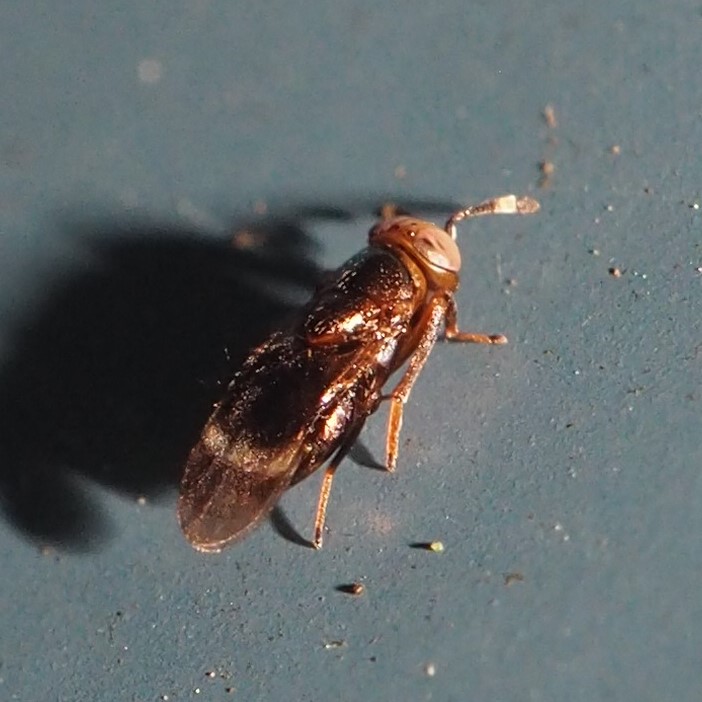
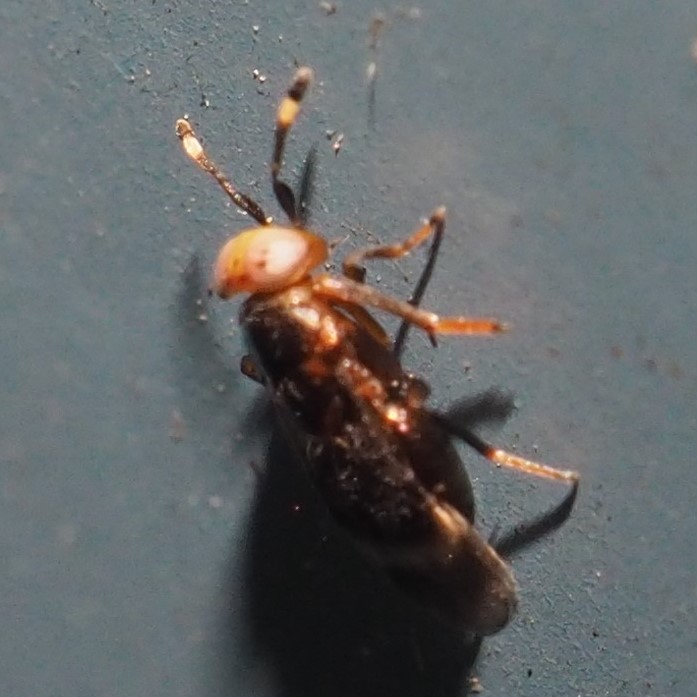
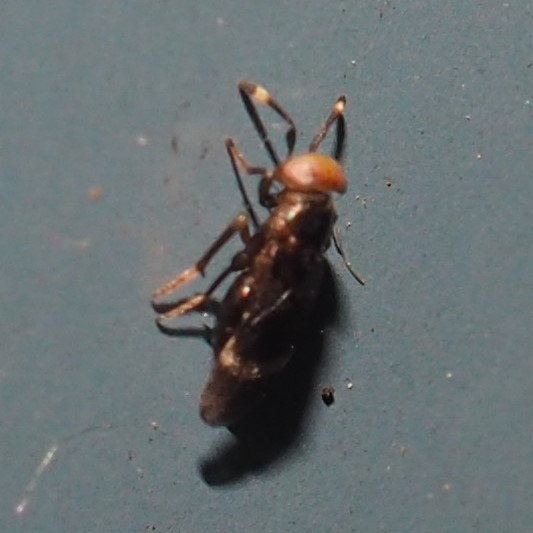
A really tiny Wasp (pictures 2 and 3). I still need to get some help identifying it. The third one is showing off what an avid pollinator it is!
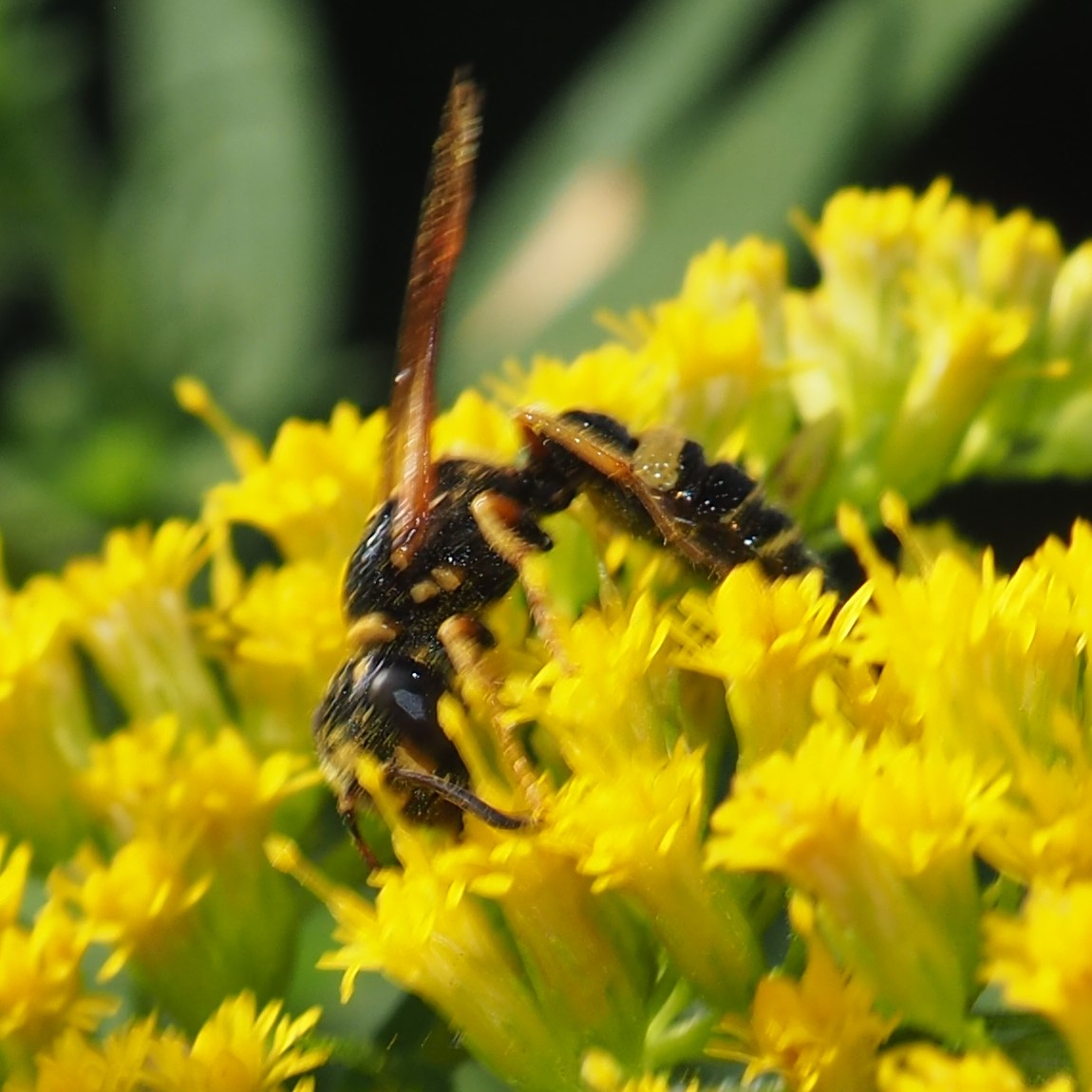
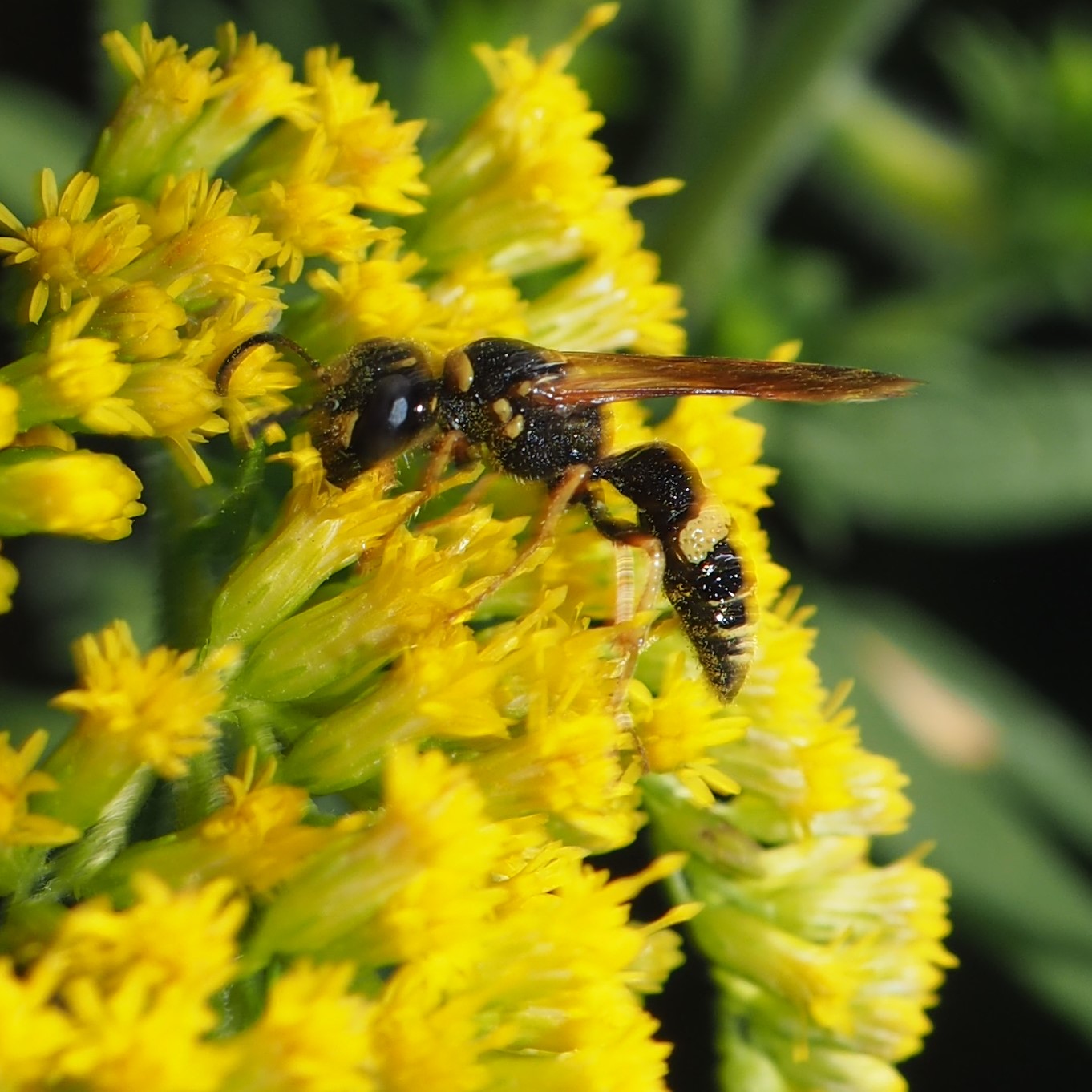

Maybe one quick look at the Aster carpet in the front yard.

Maybe to celebrate the recovery of the pond and its creatures from the "accident" caused by a curious Raccoon, just one more picture of the Fishes cavorting in the pond.
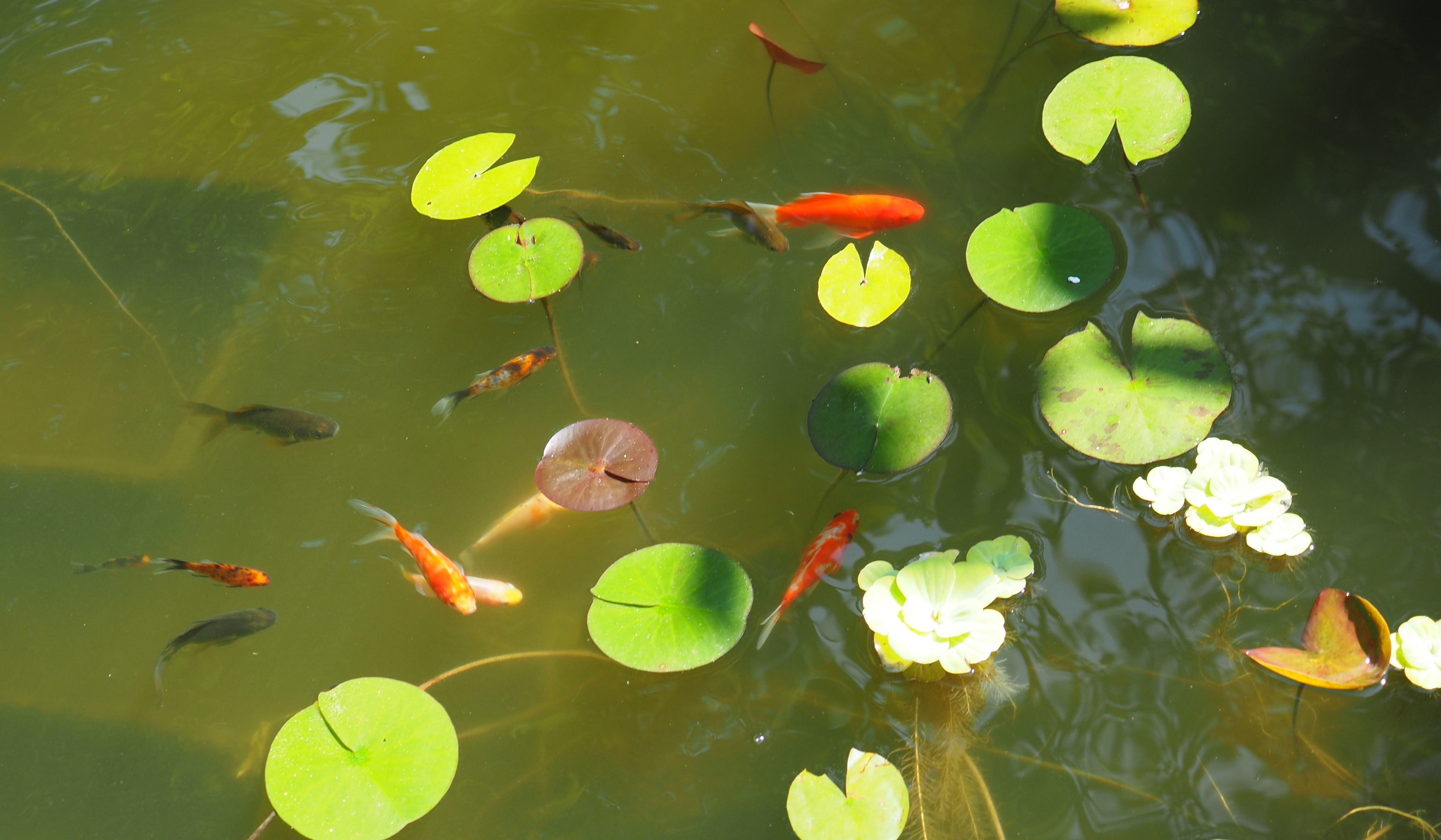
Another week gone by so quickly! Just when I think I'd like to slow time down it seems to take the reins in its own paws and races out ahead of me. But still, there's never any time to get bored, never. I have worked till suppertime now and so will save the clever homilies for another time. I hope you all are as well as possible and as busy as you can stand. Take good care now, and
Love, Martha
Back to September 12, 2021
Forward to September 26, 2021
Back to main menu
copyright Martha O'Kennon 2021































































.jpg)
.jpg)








































